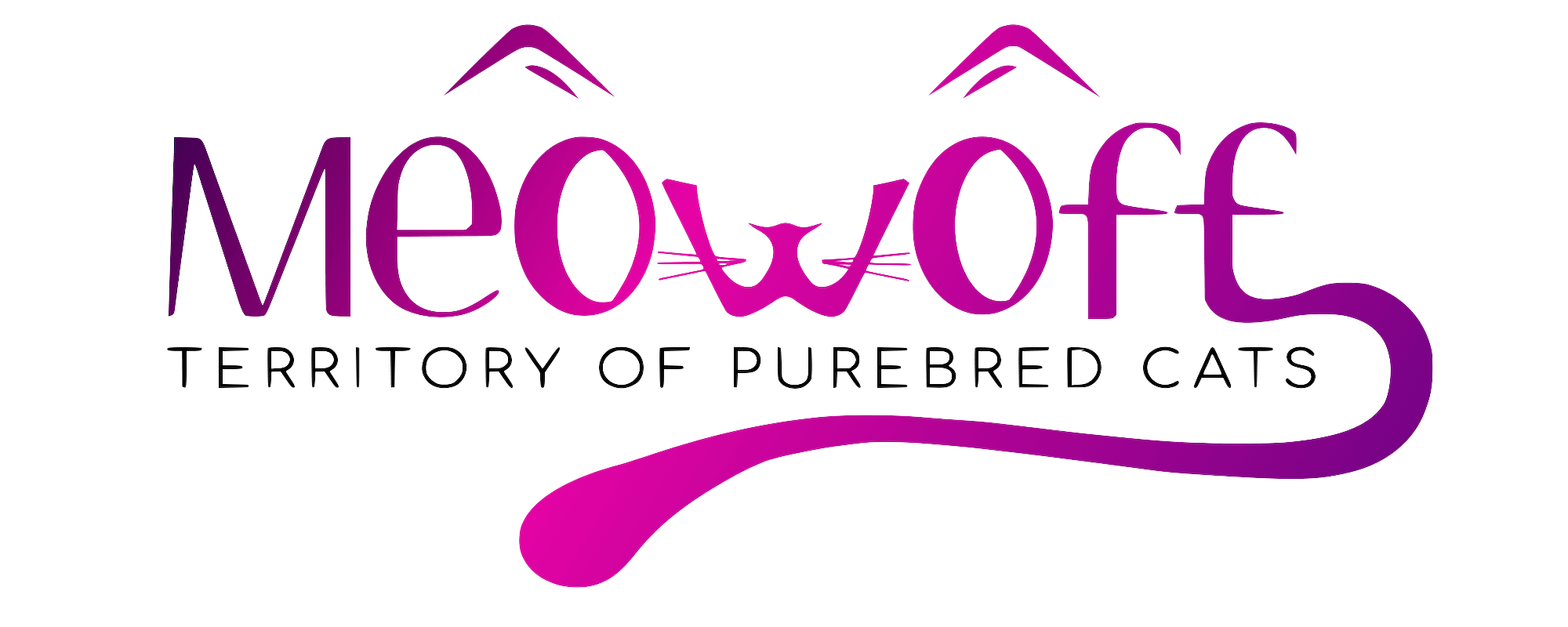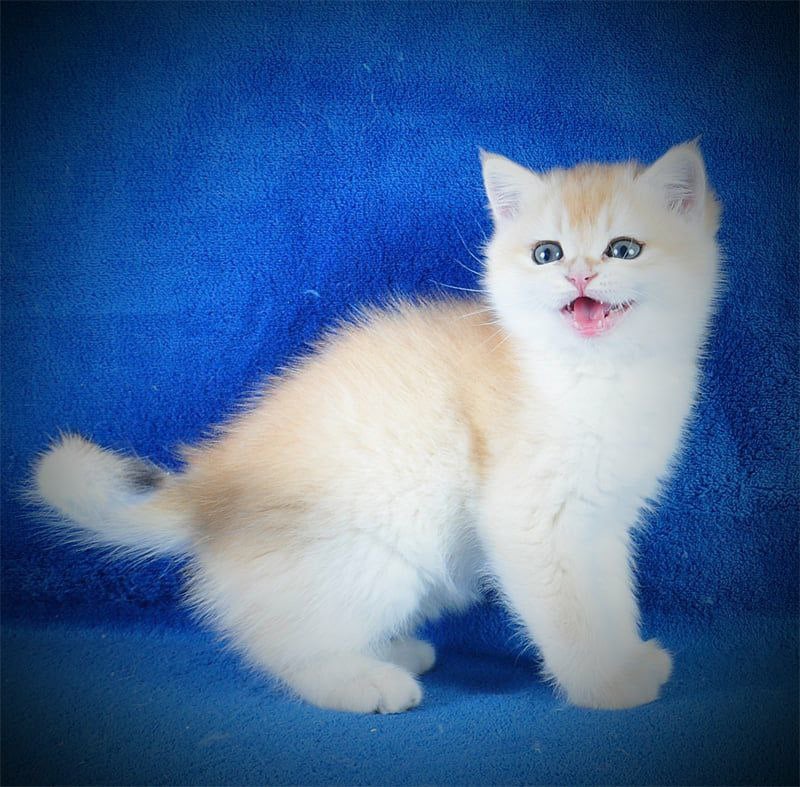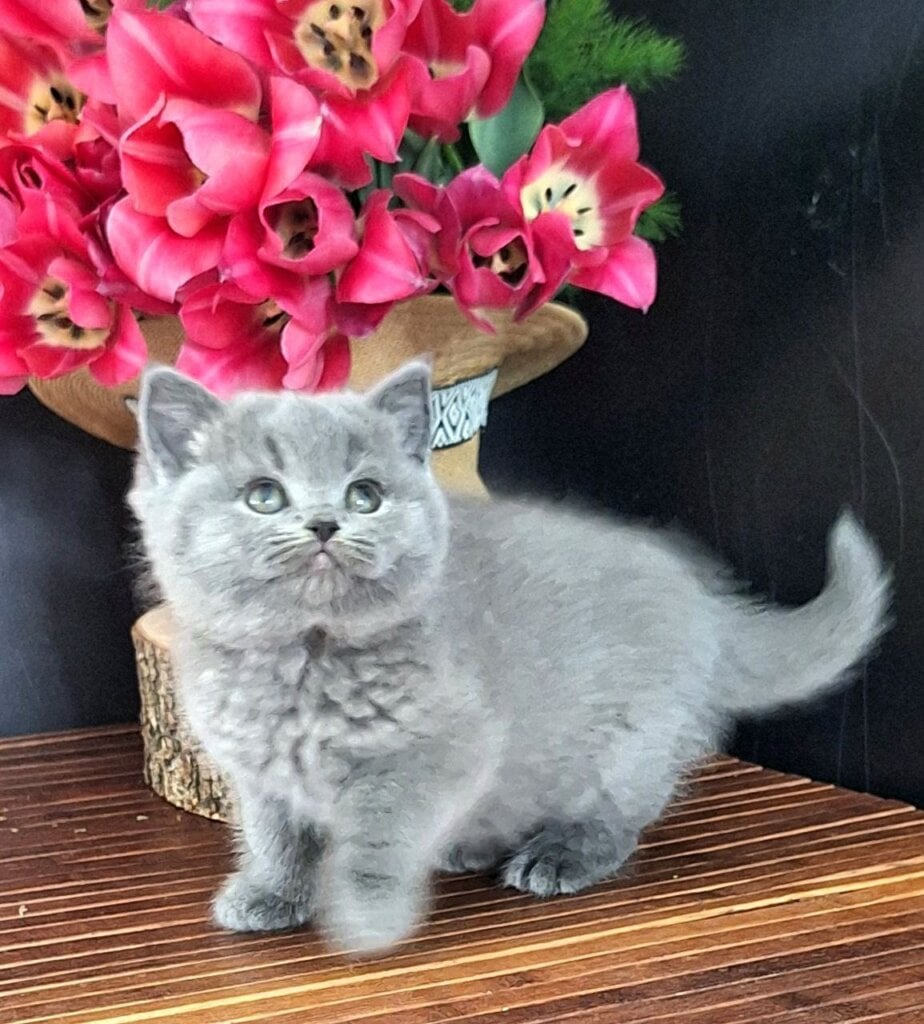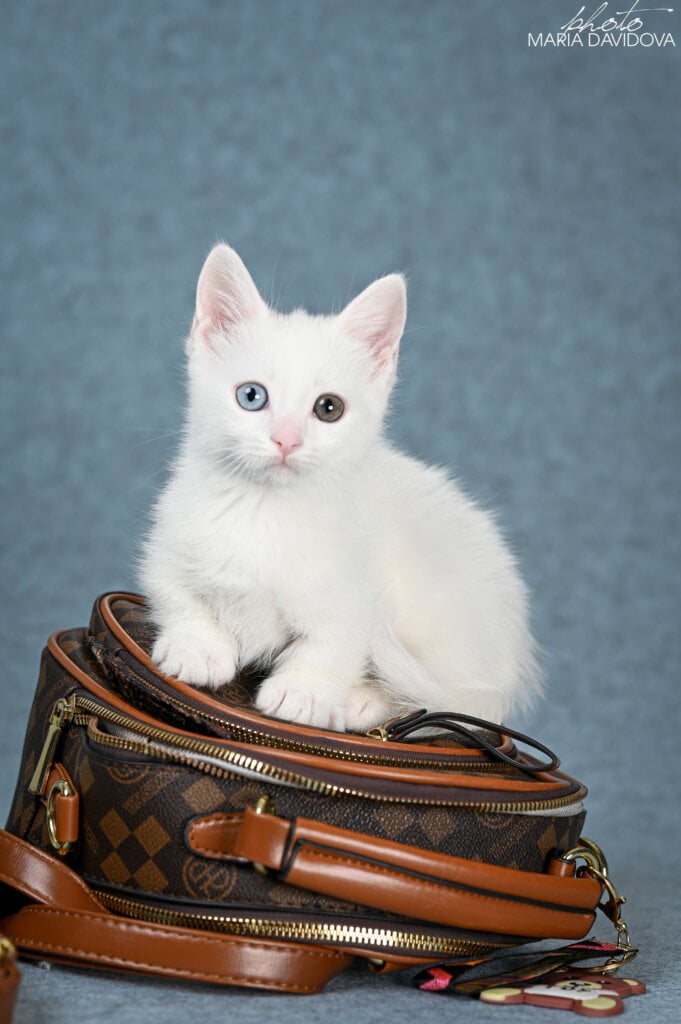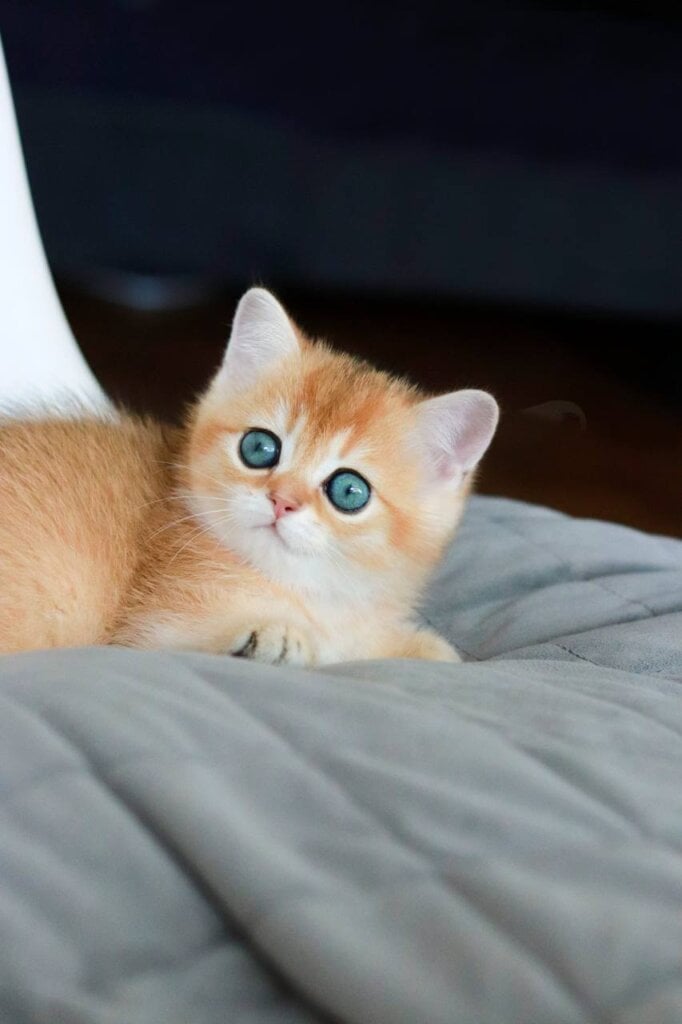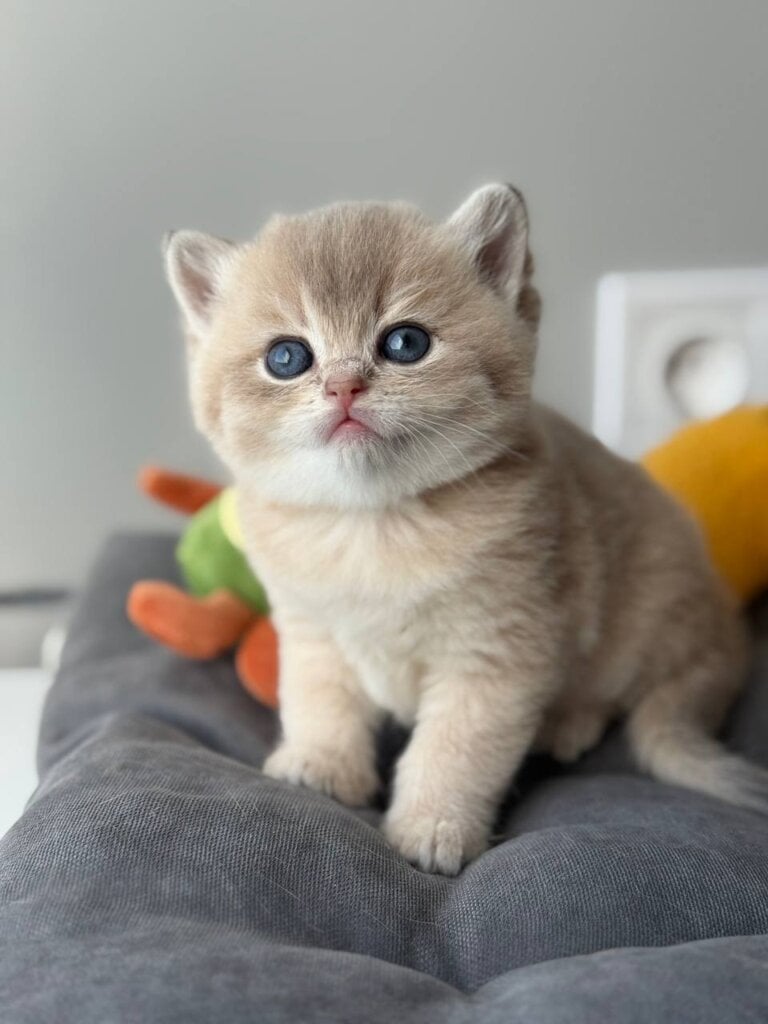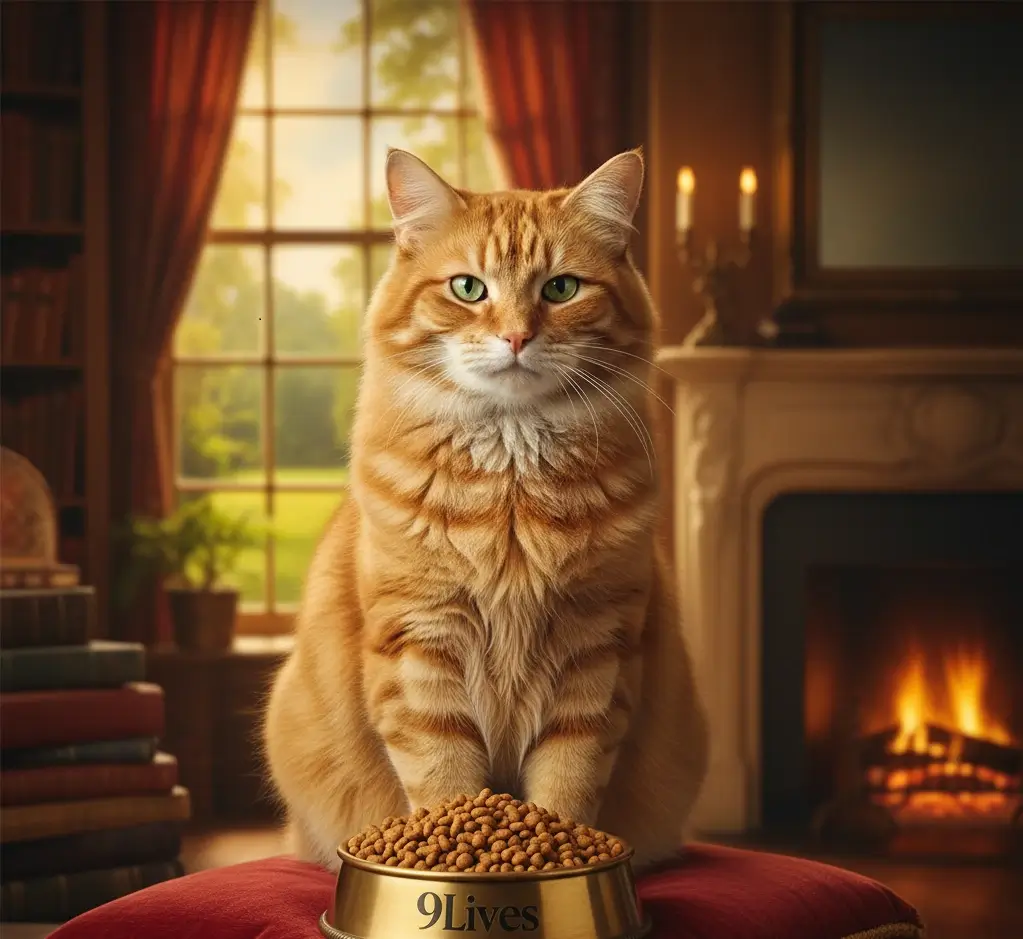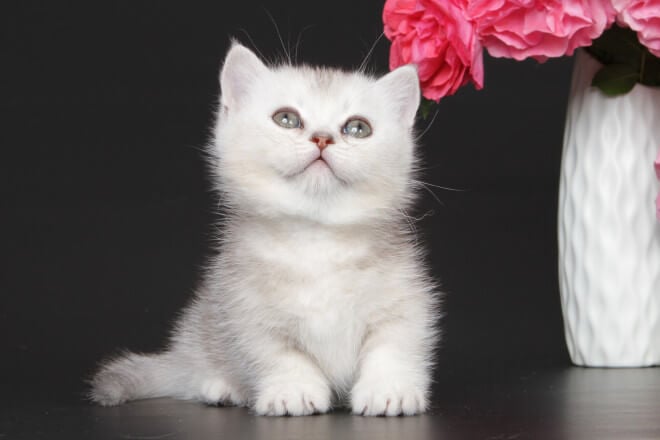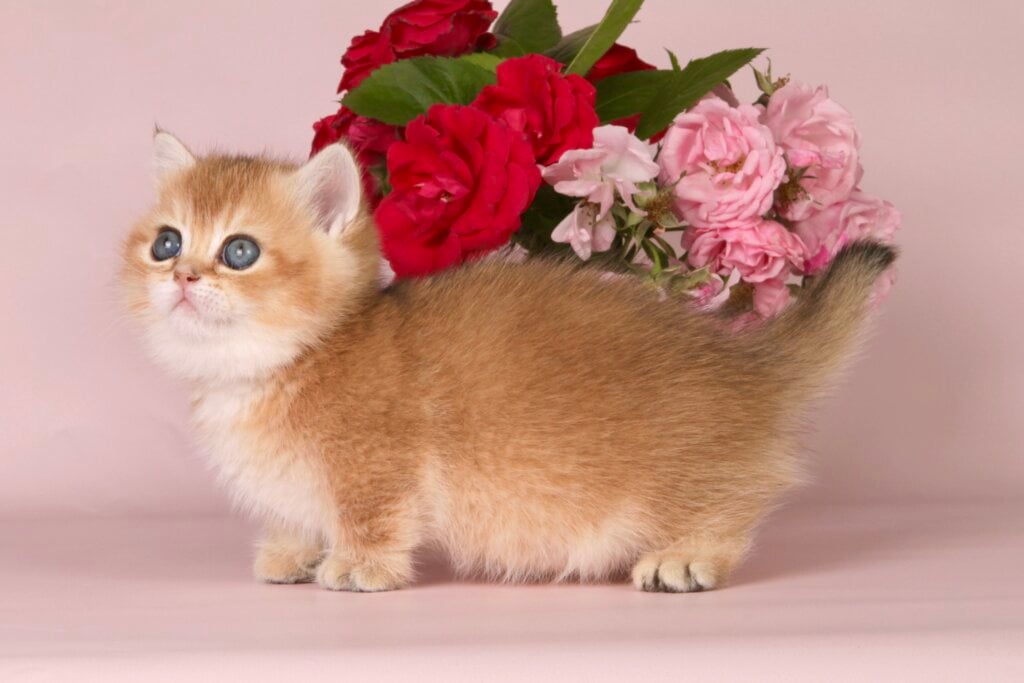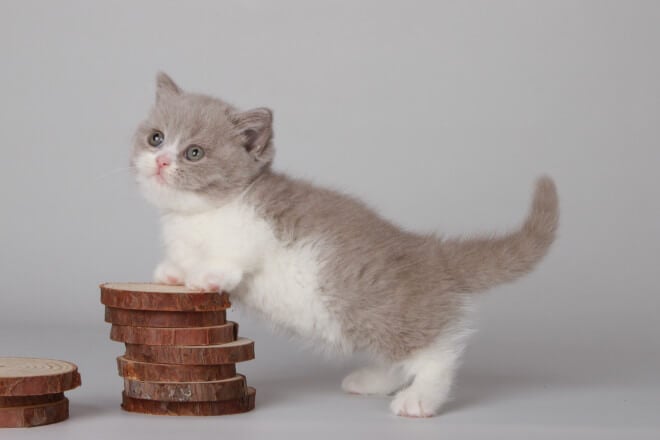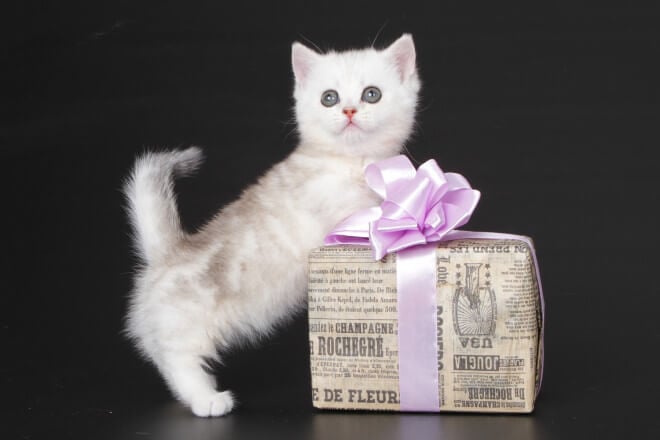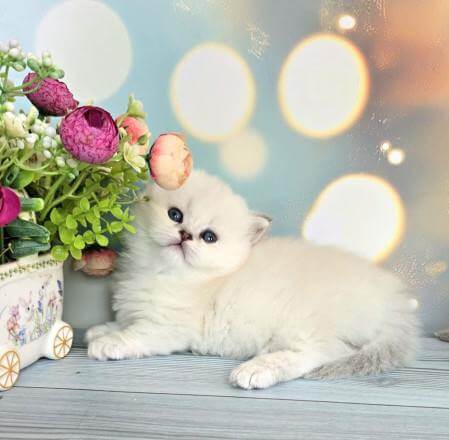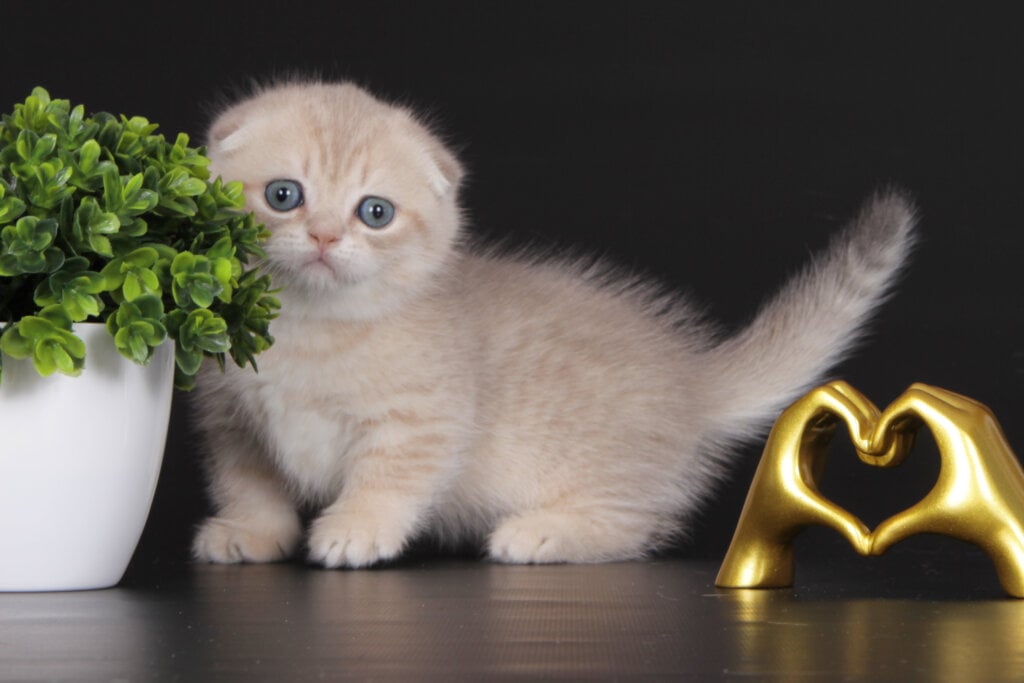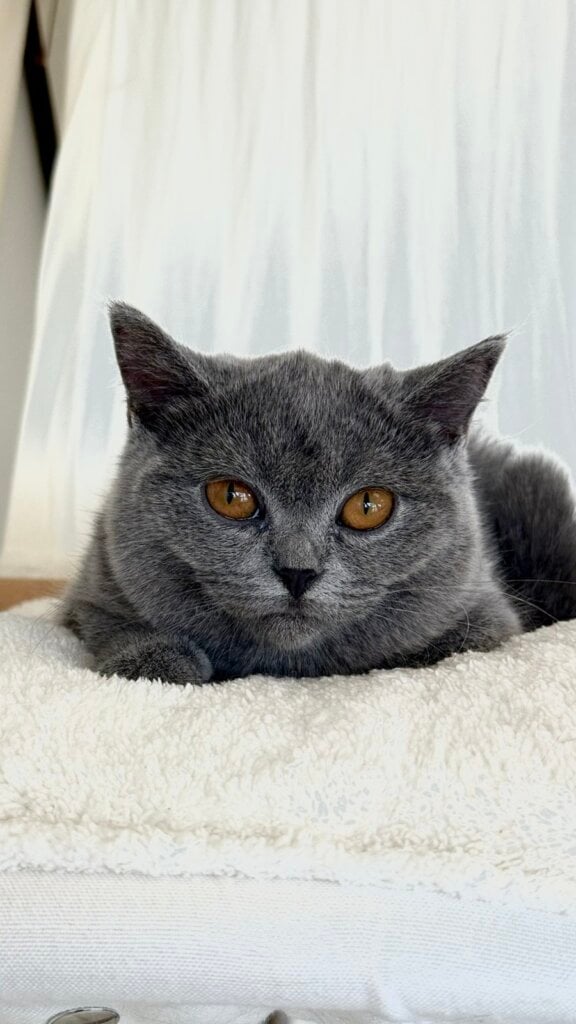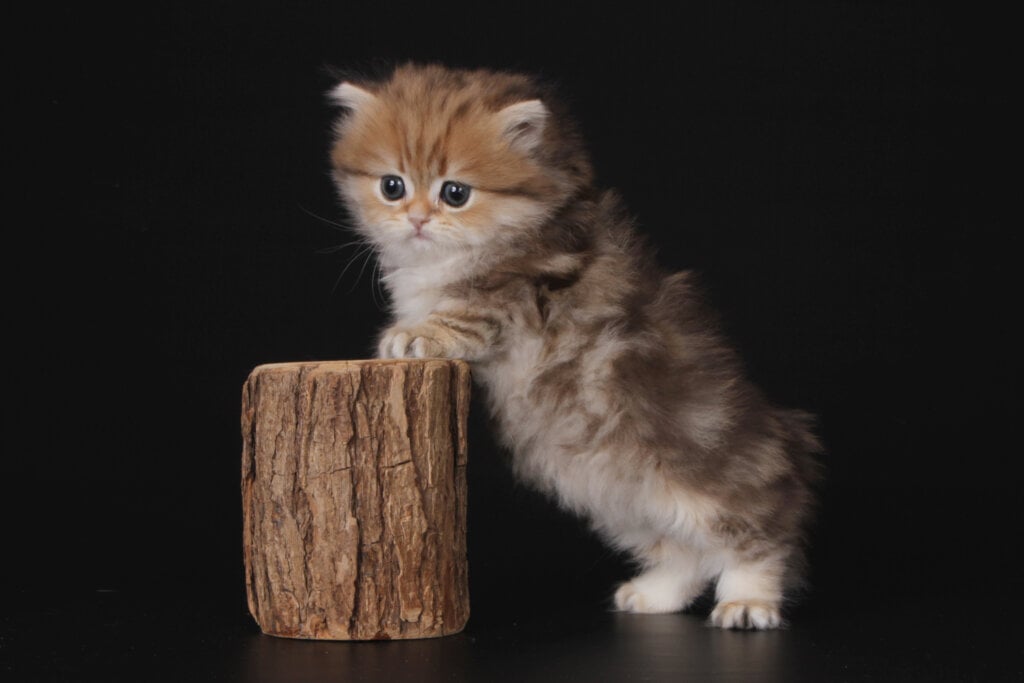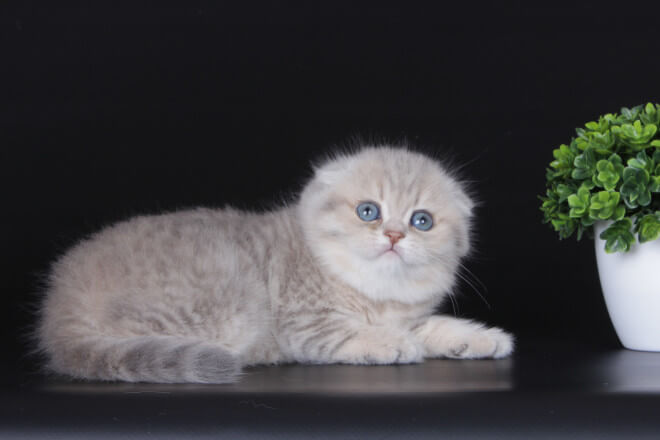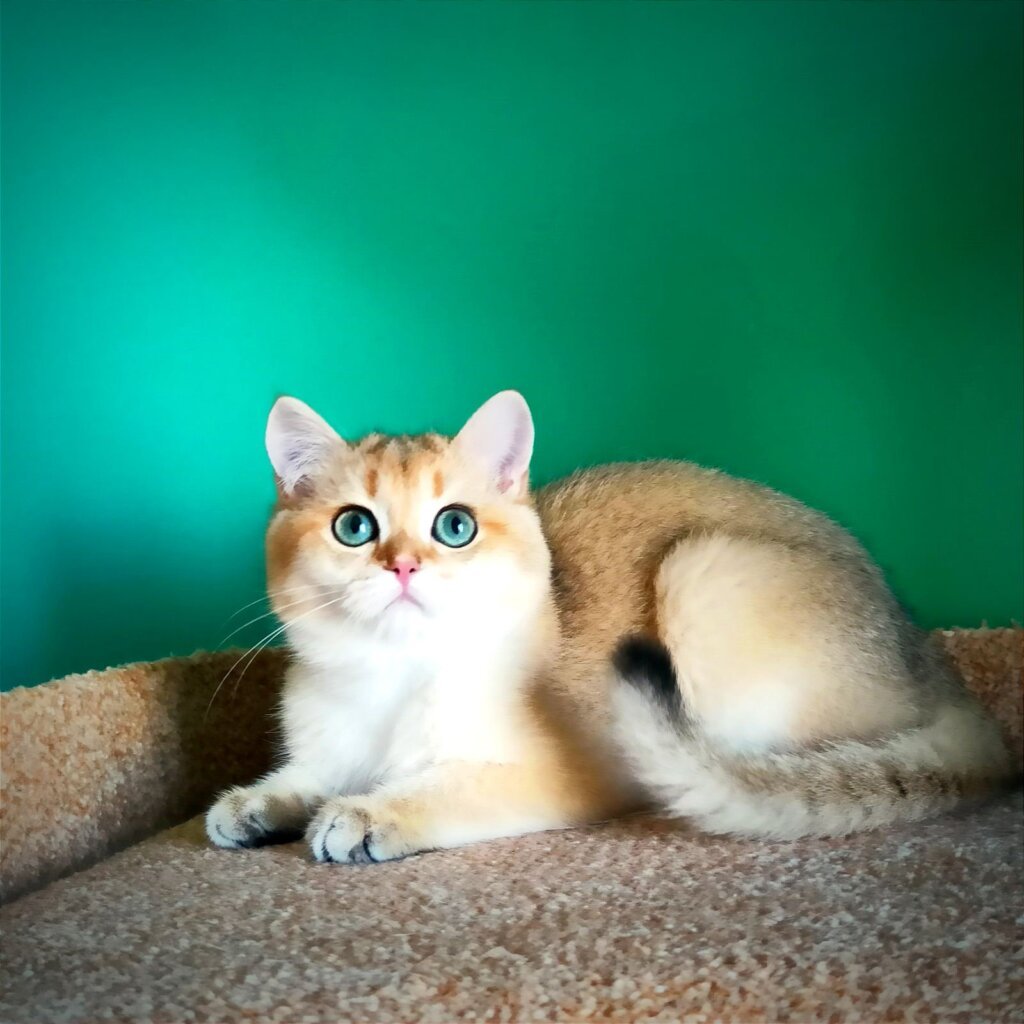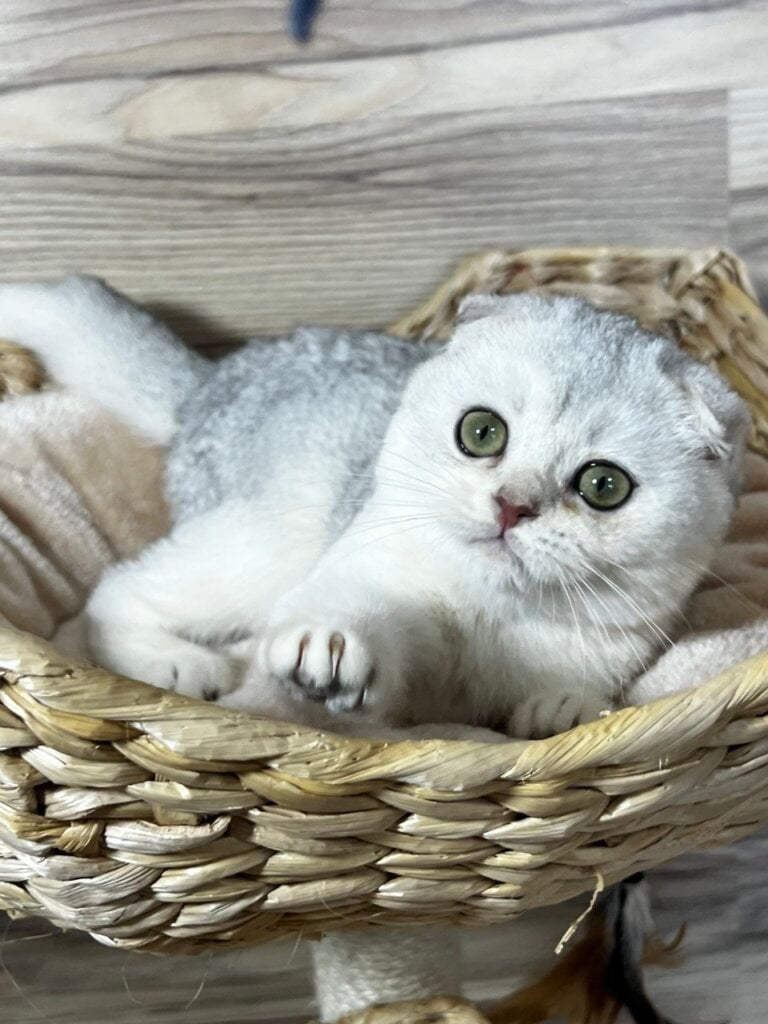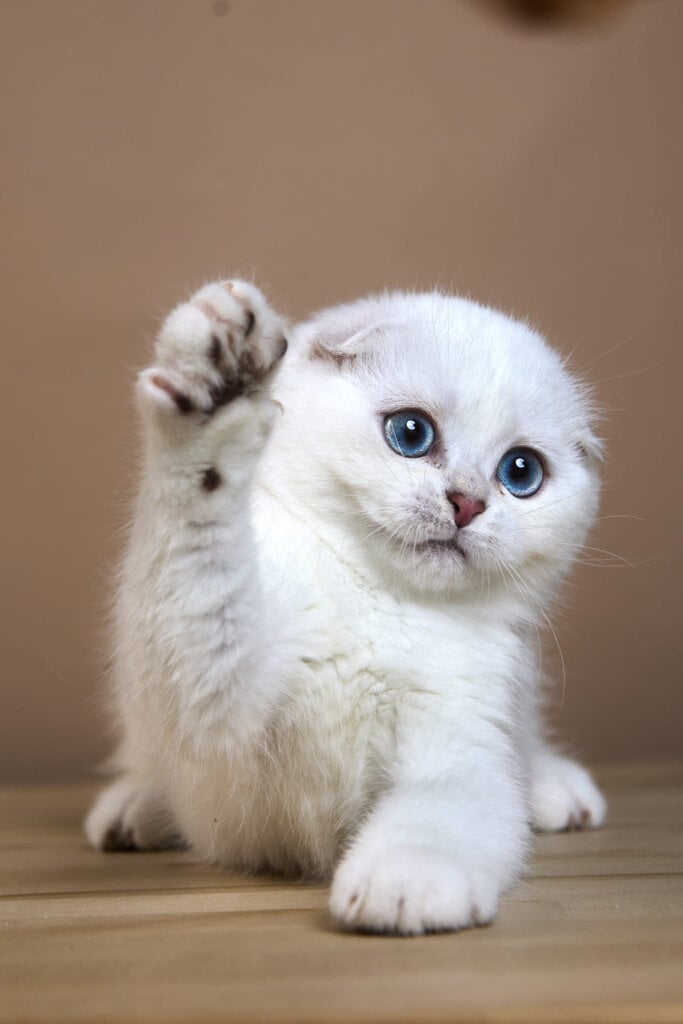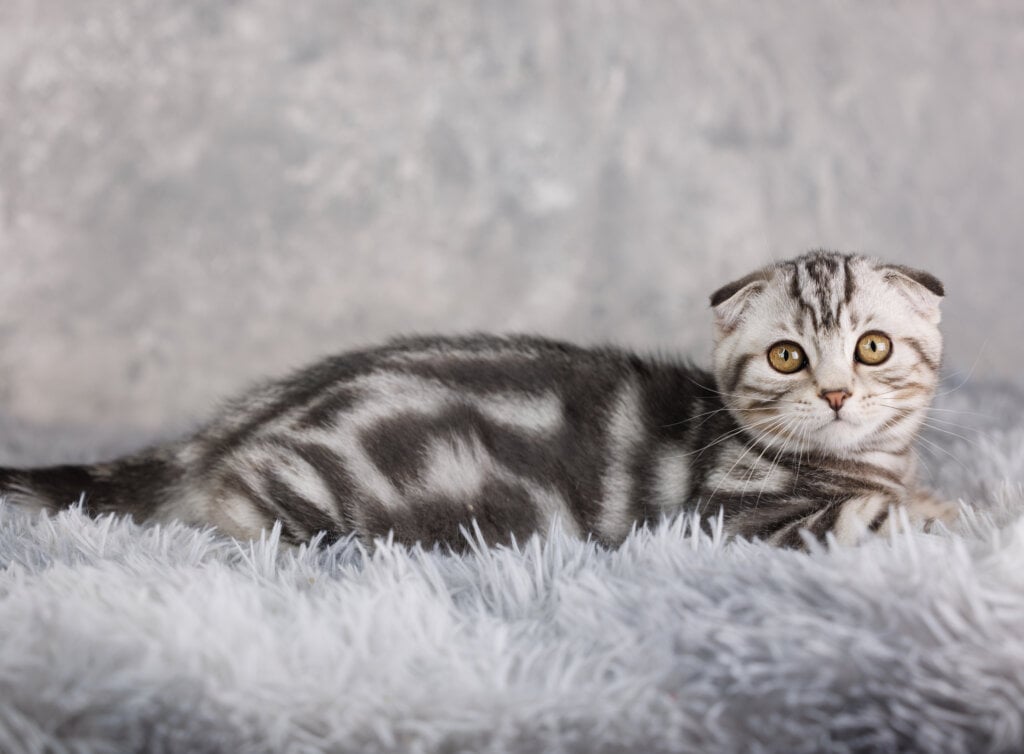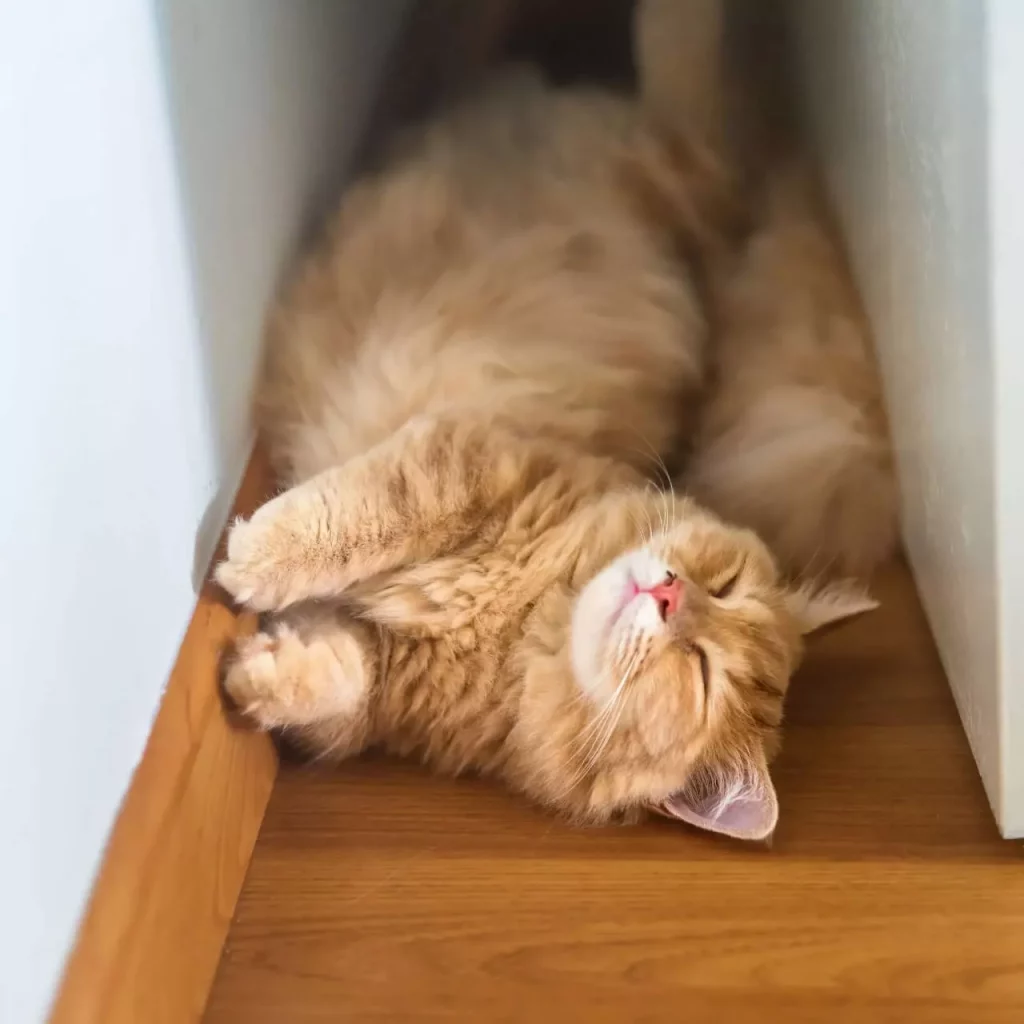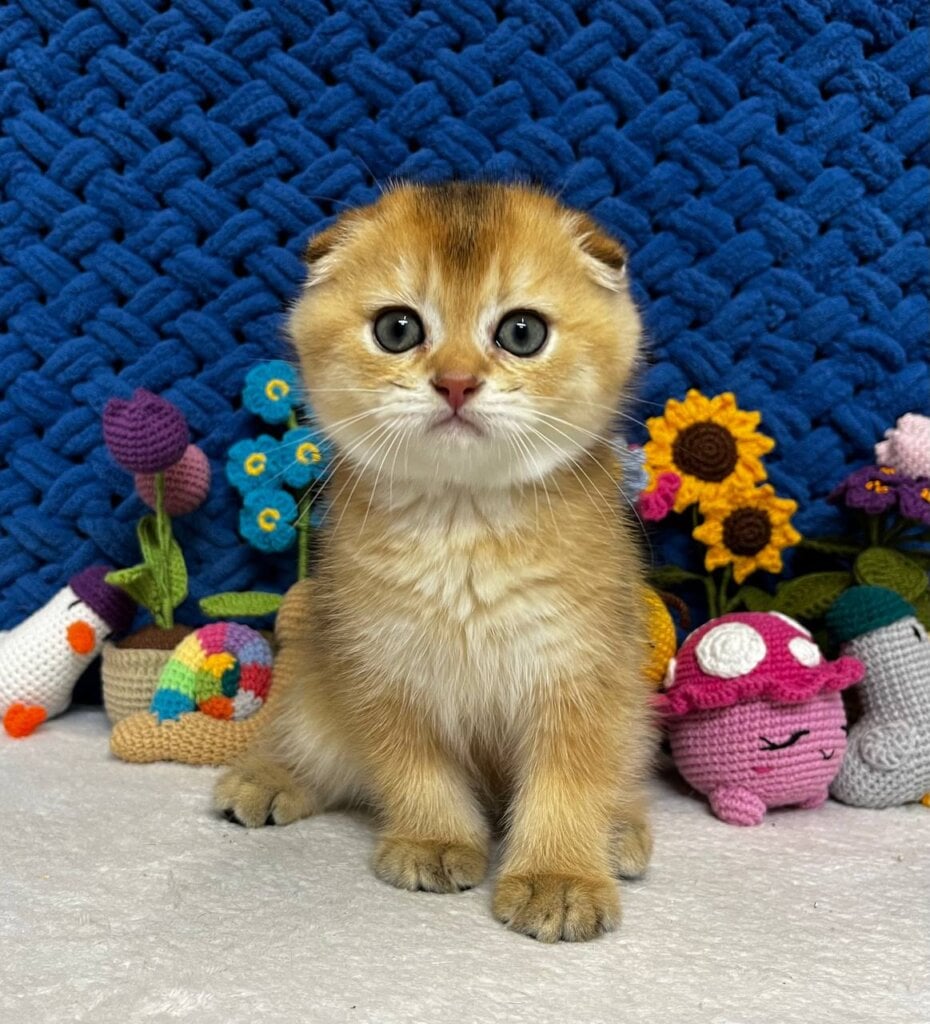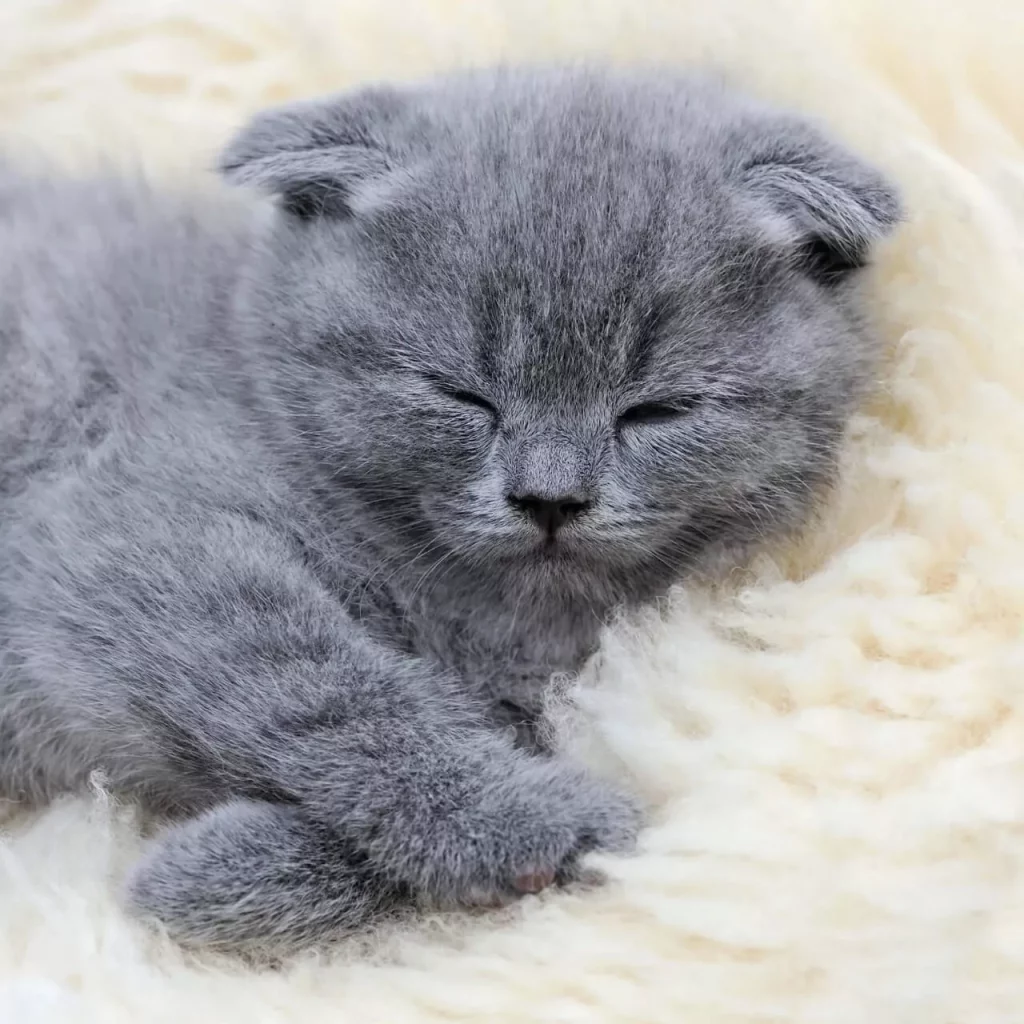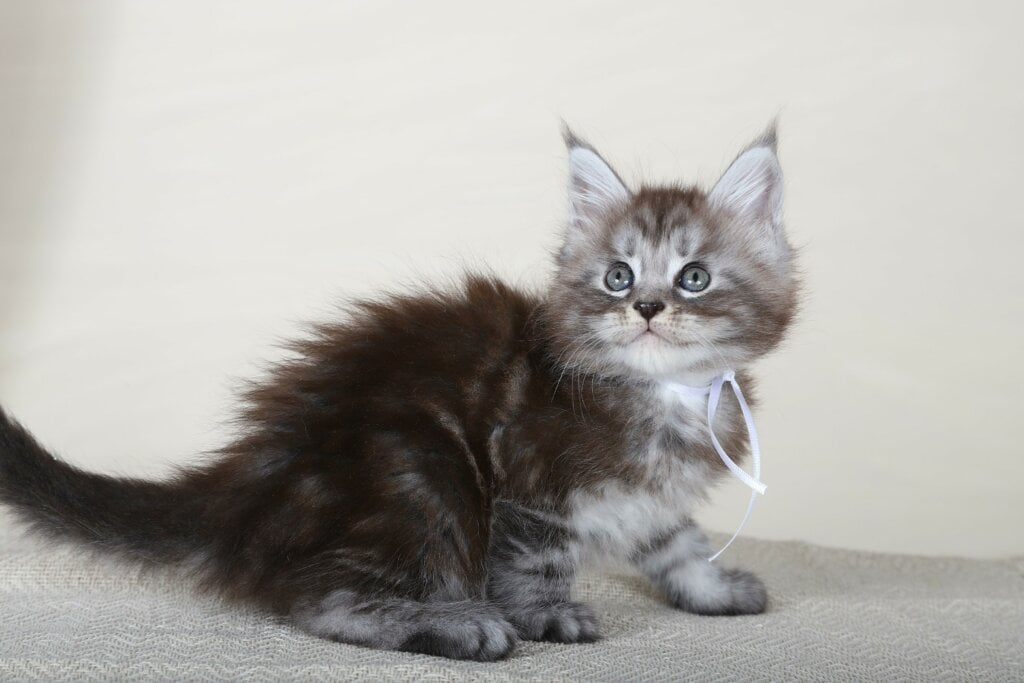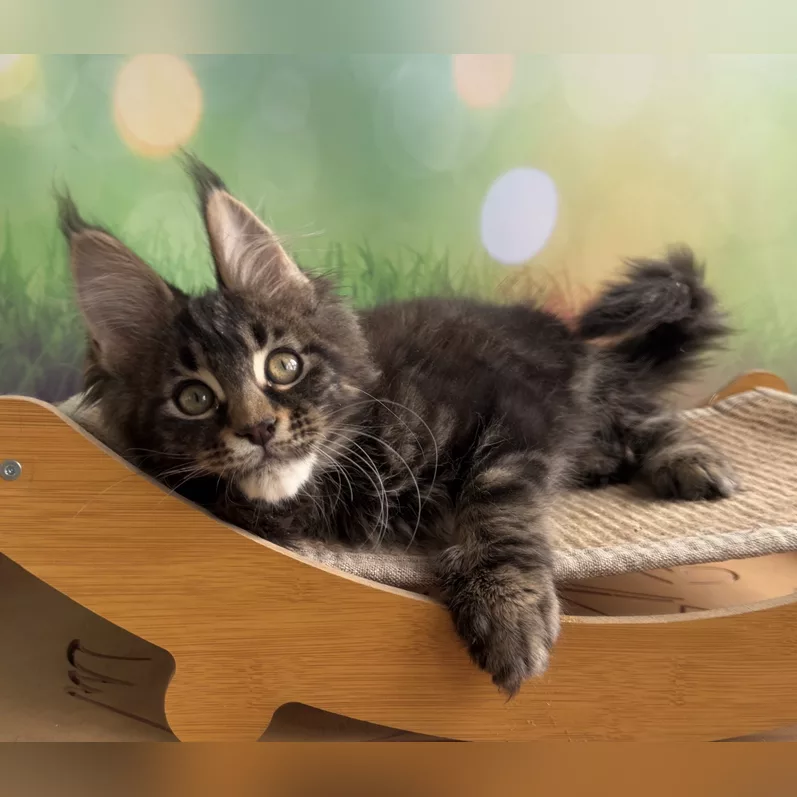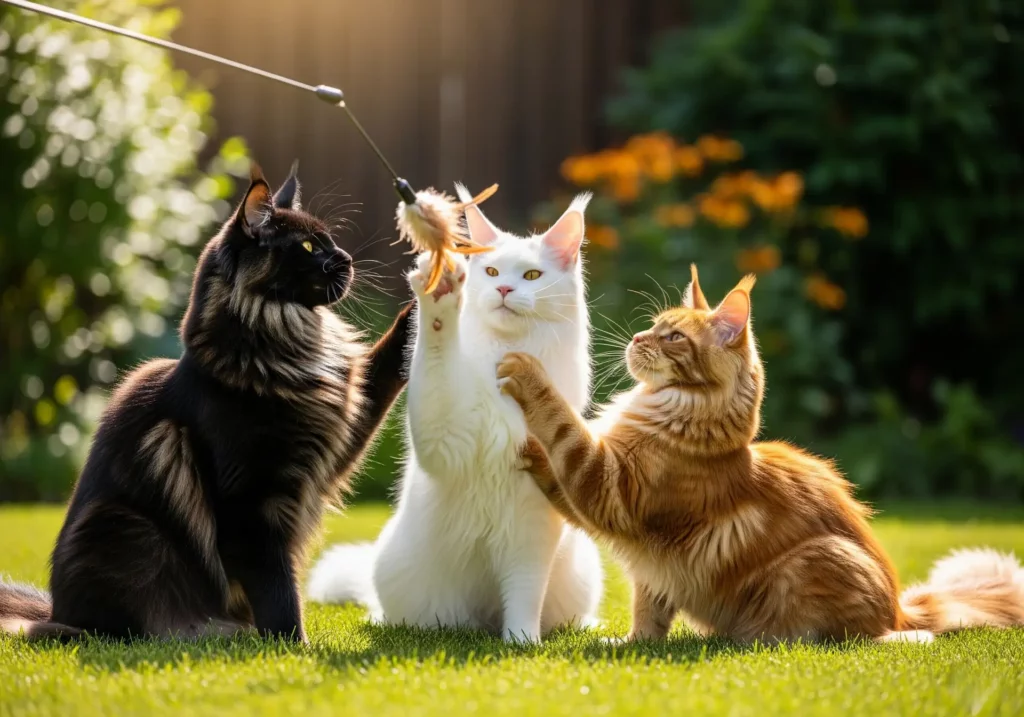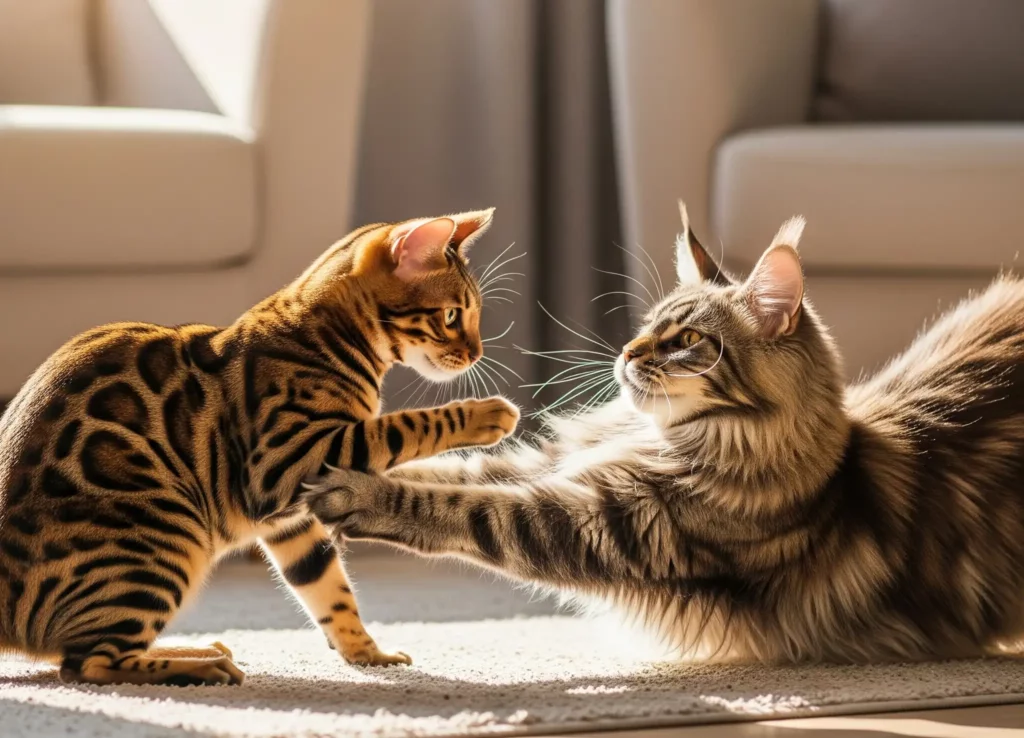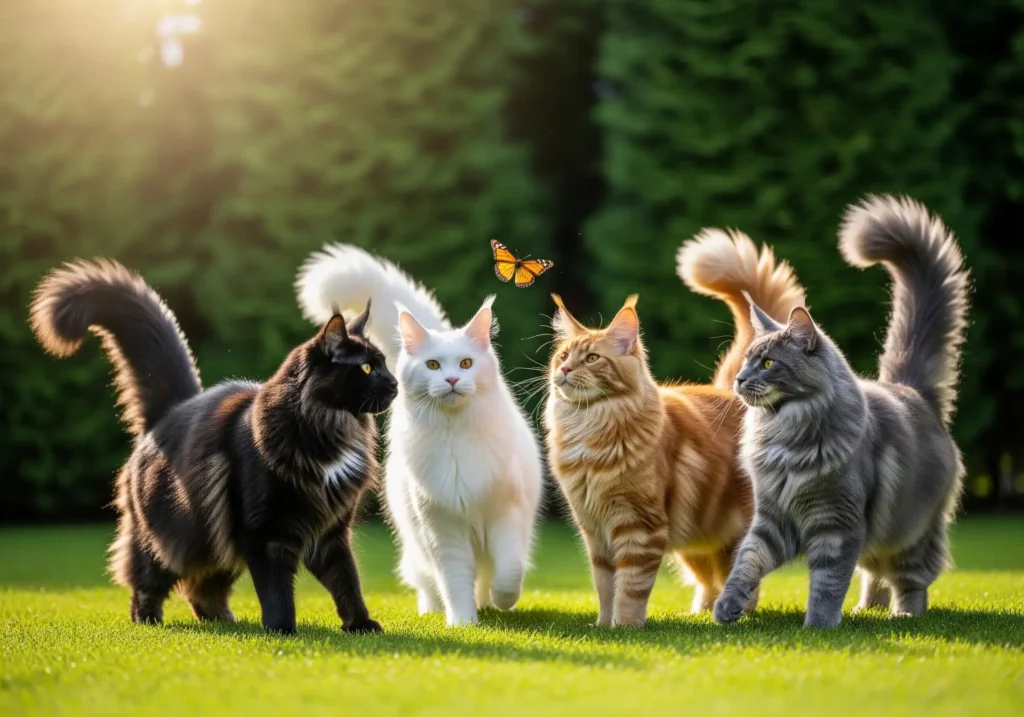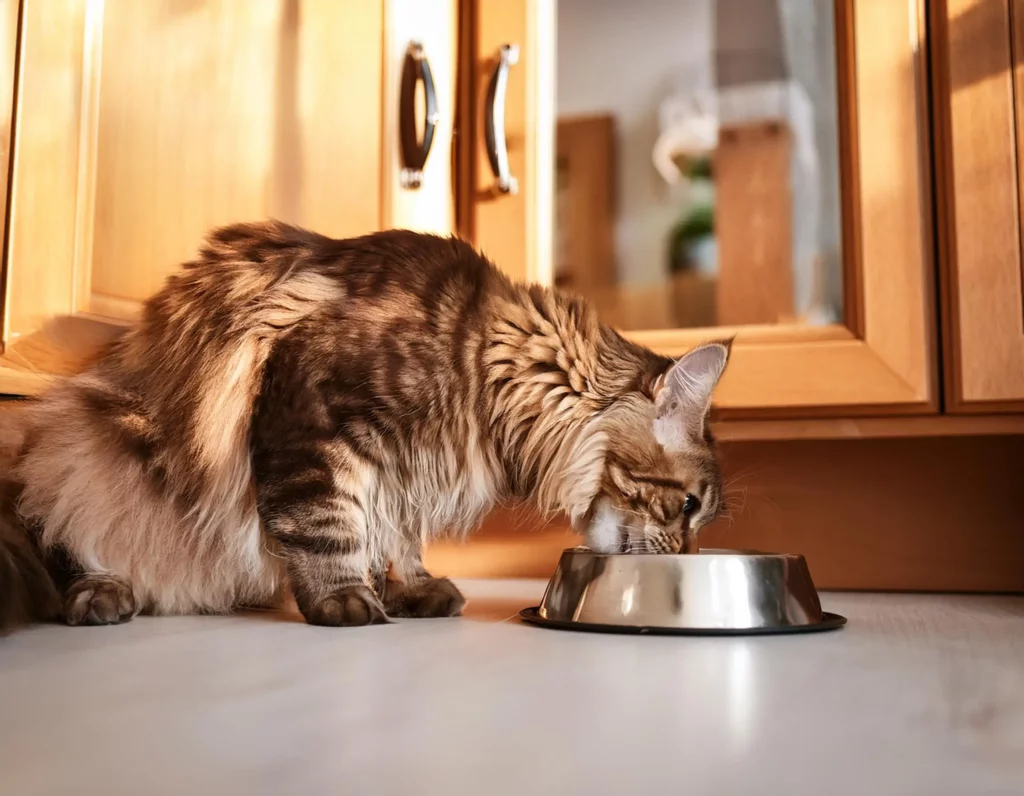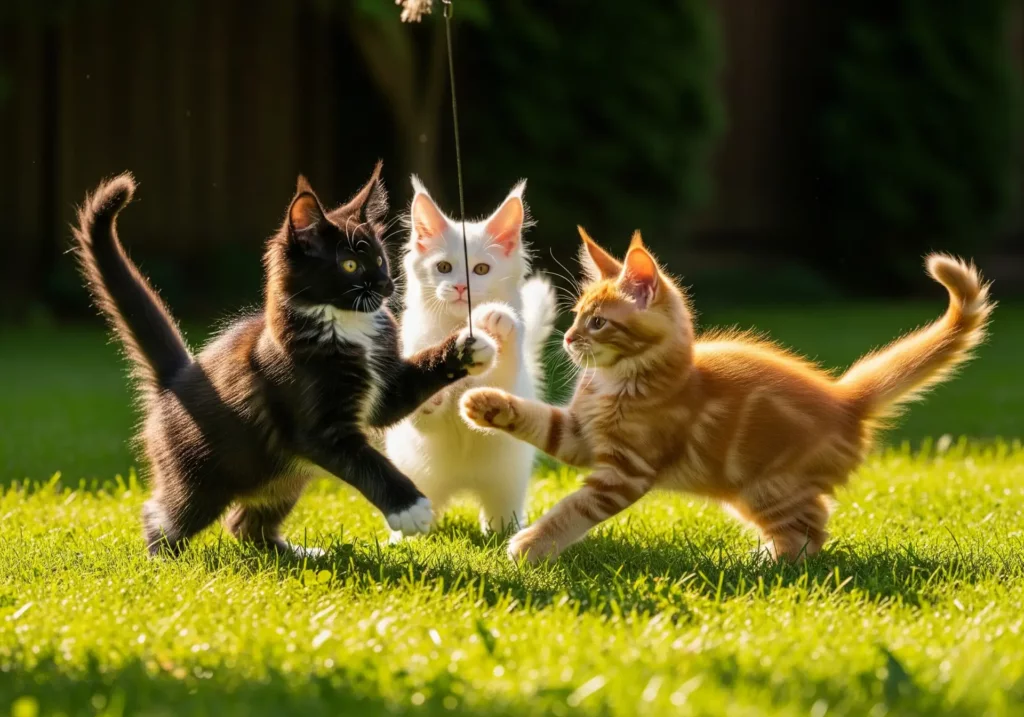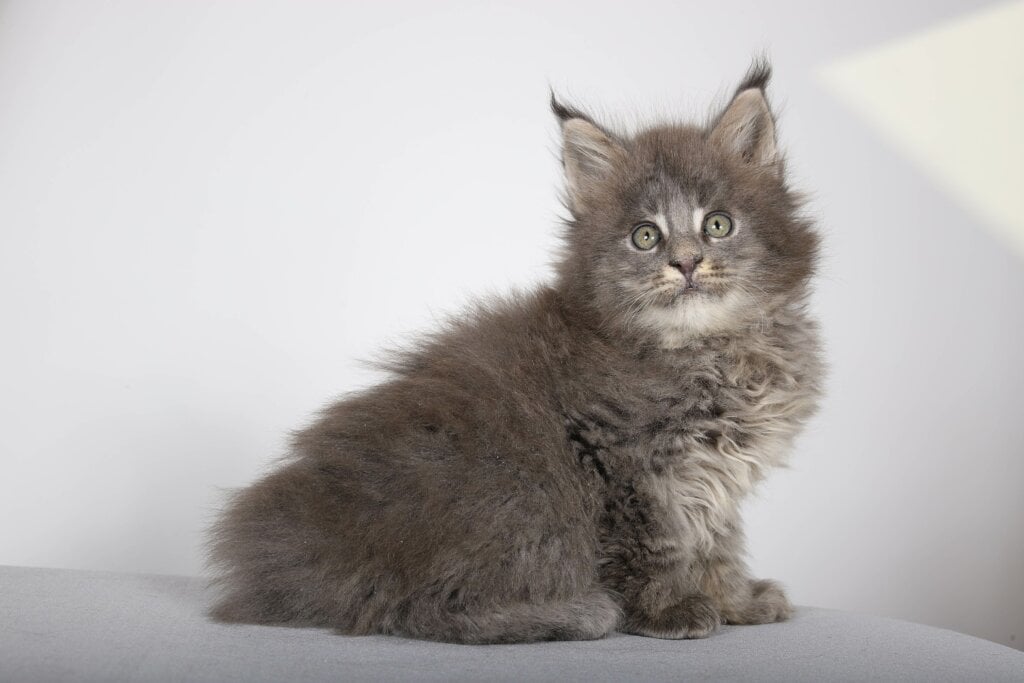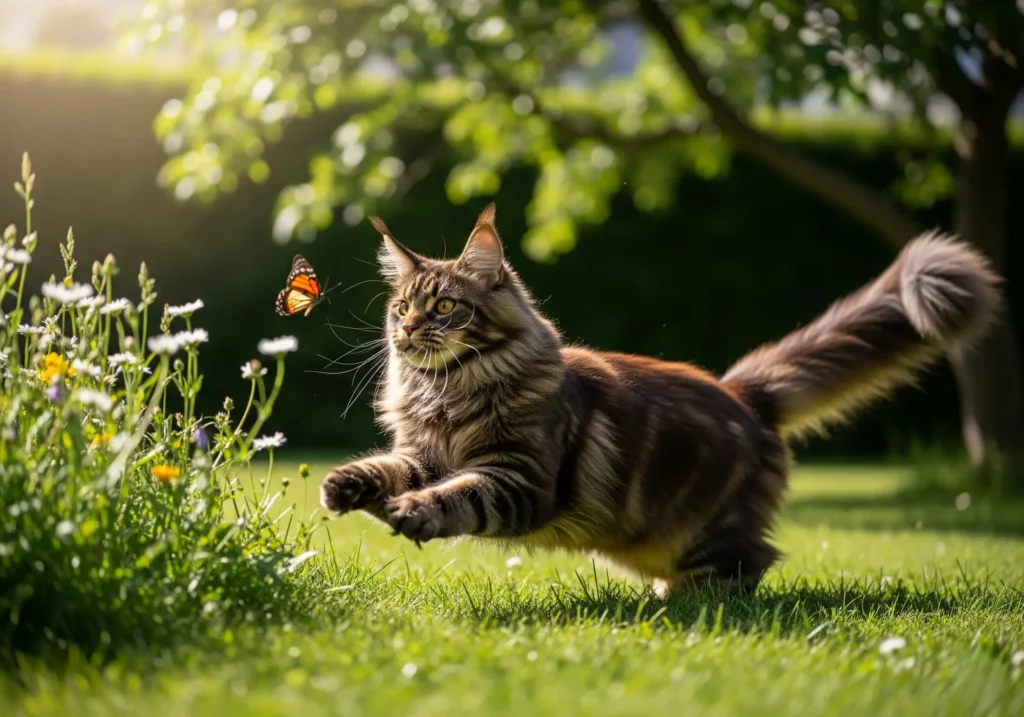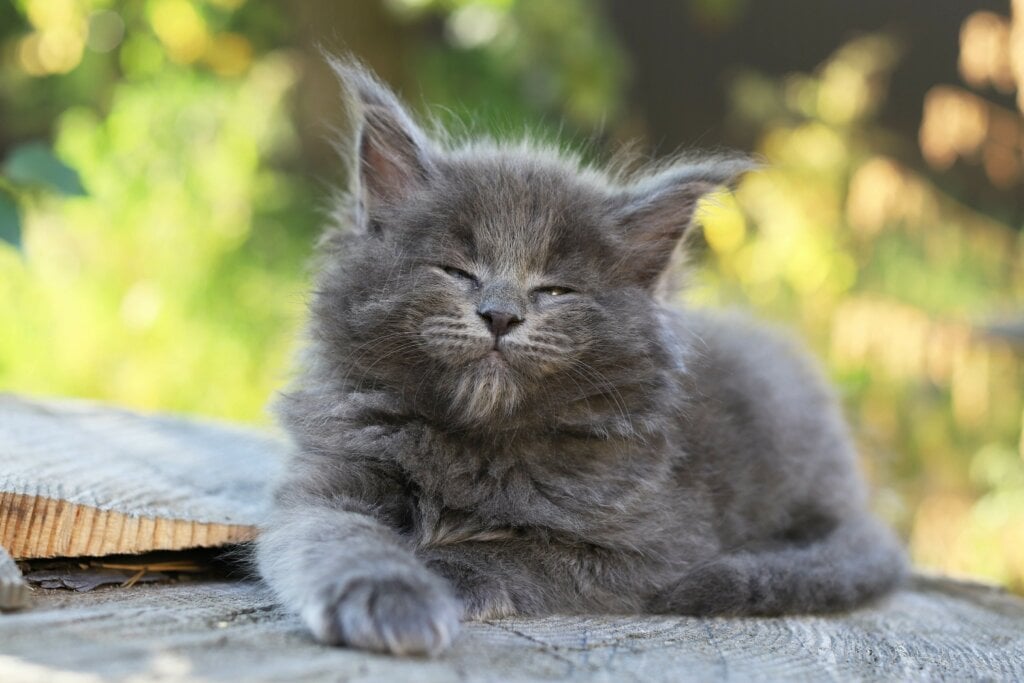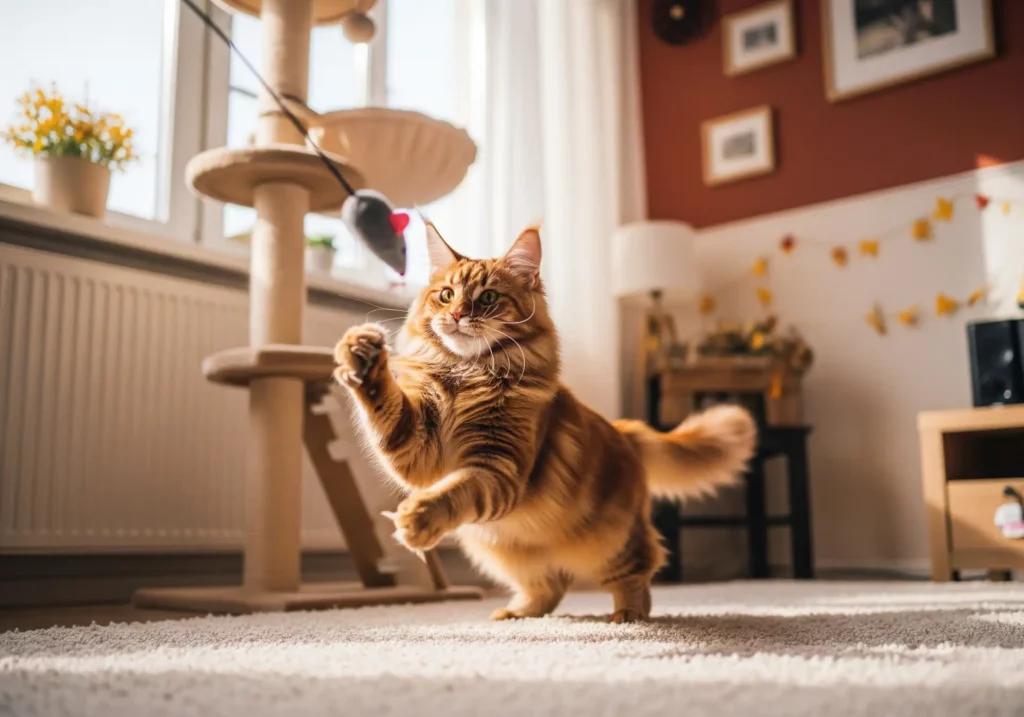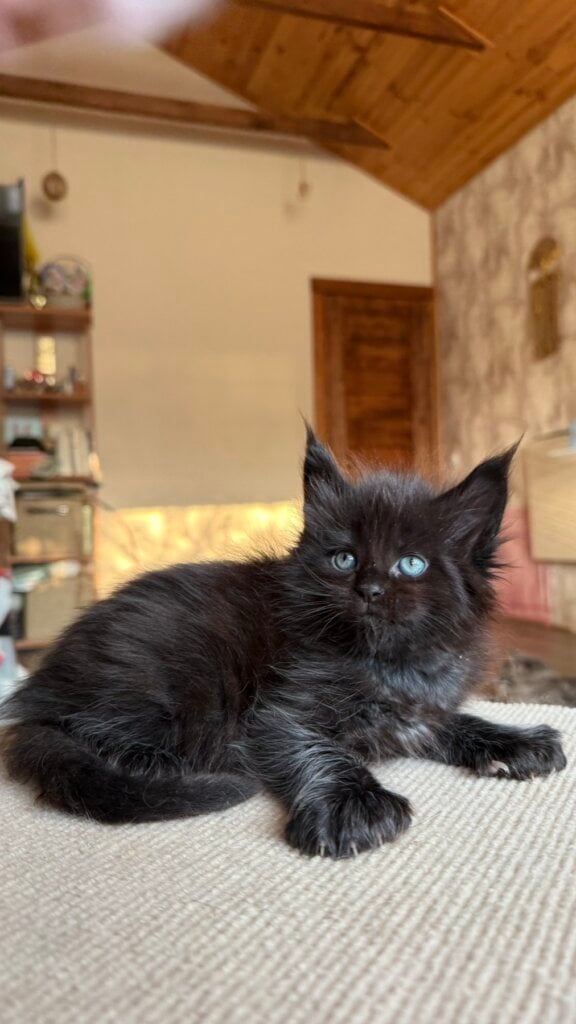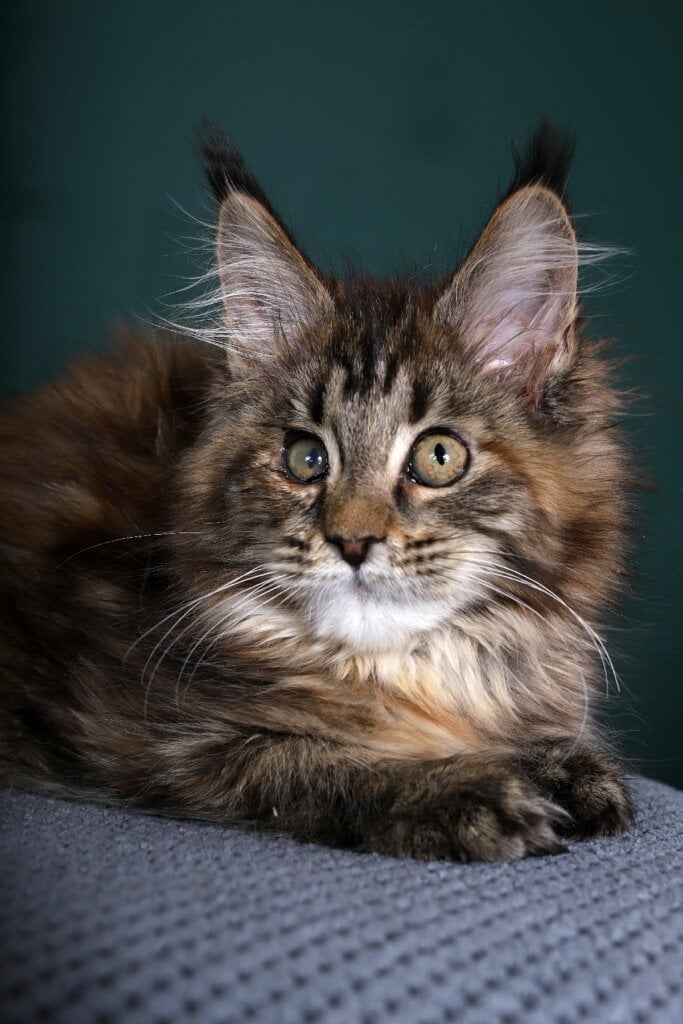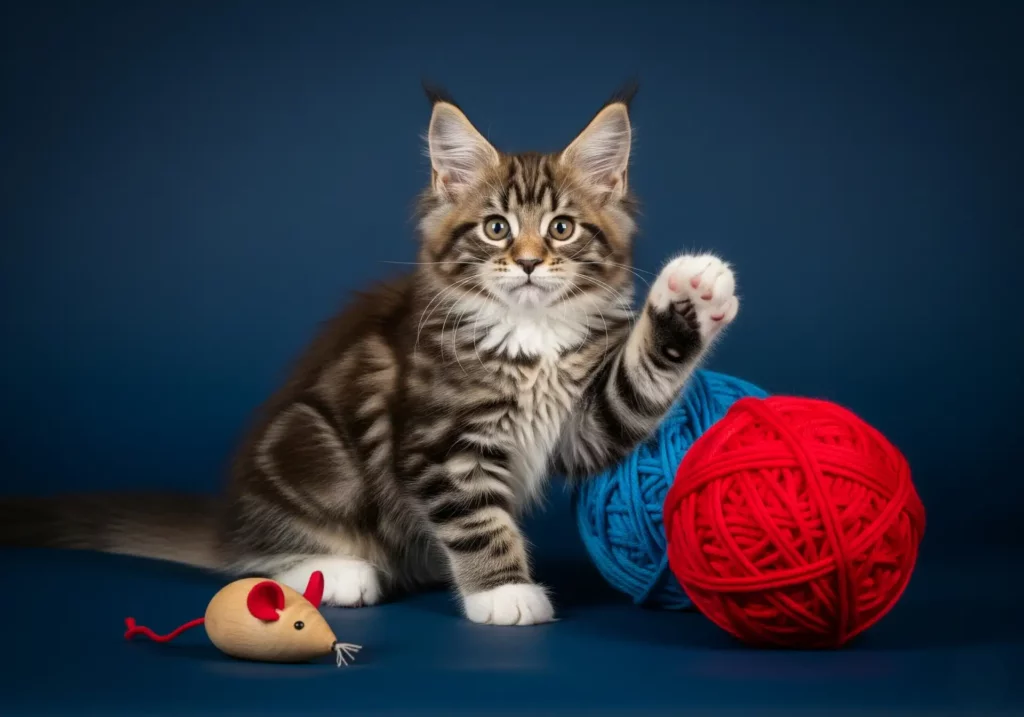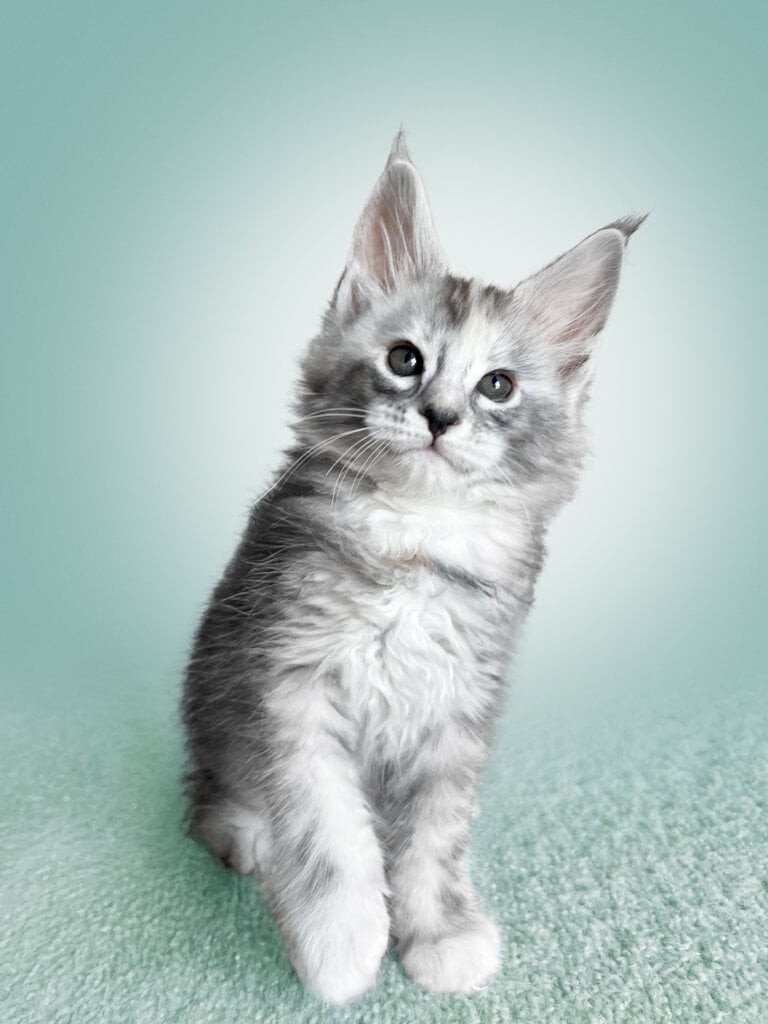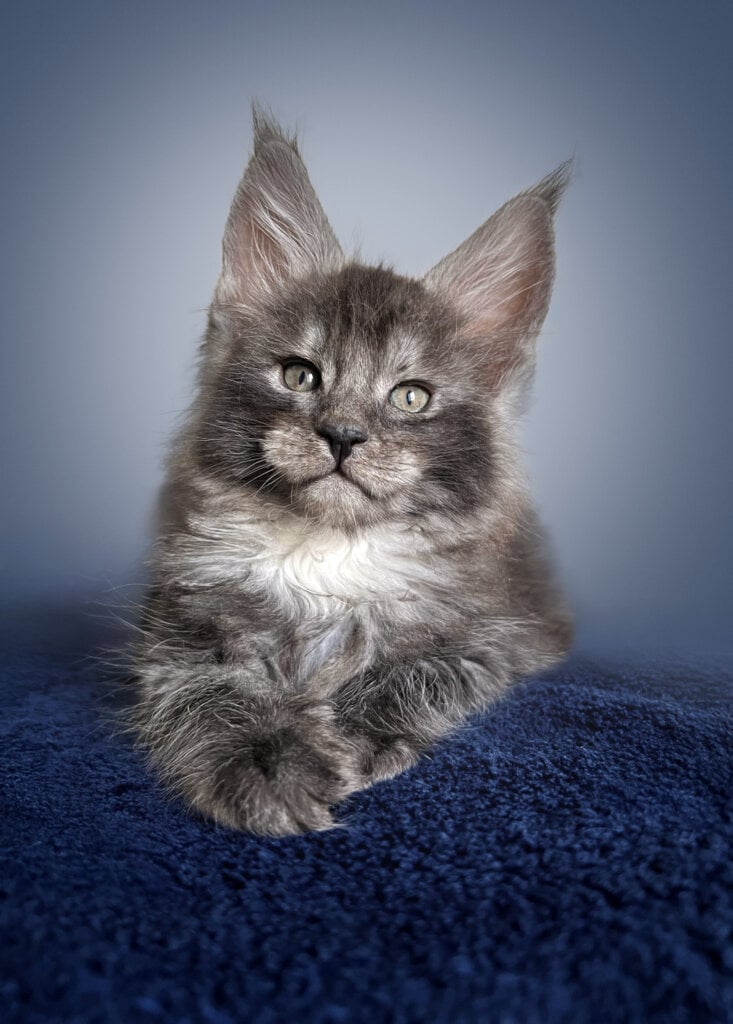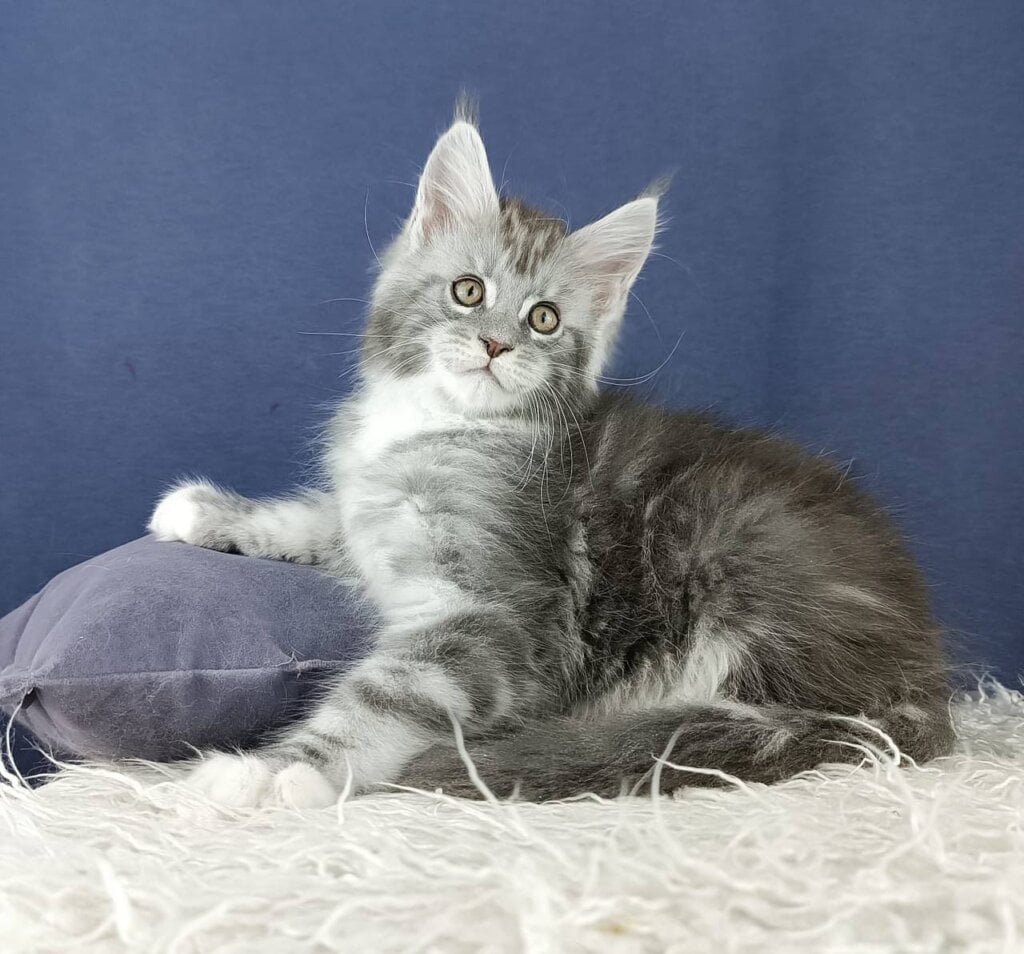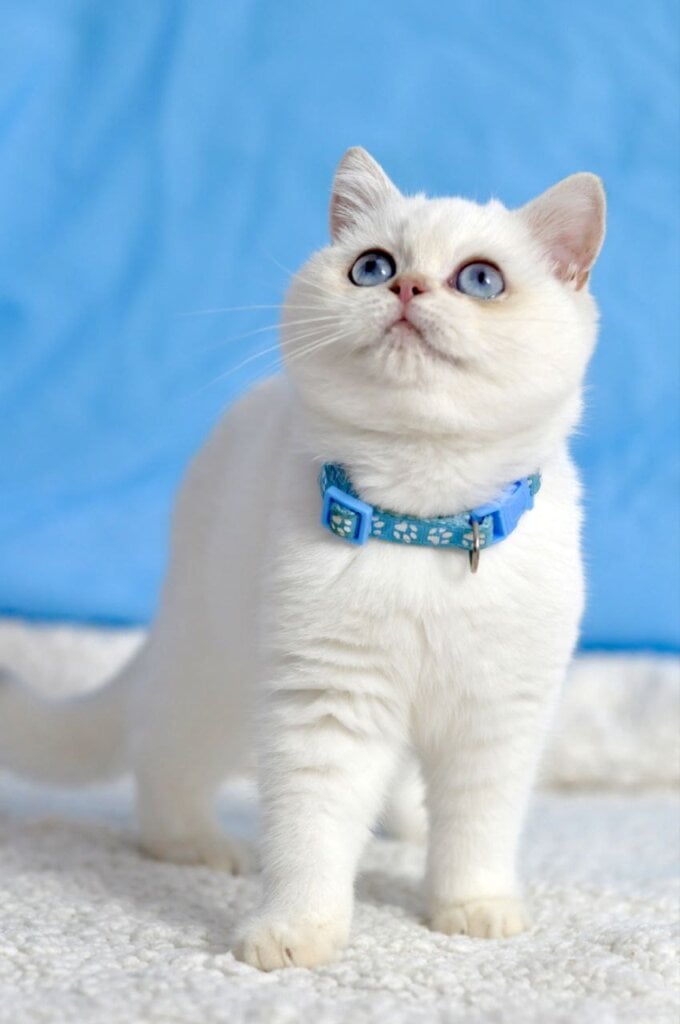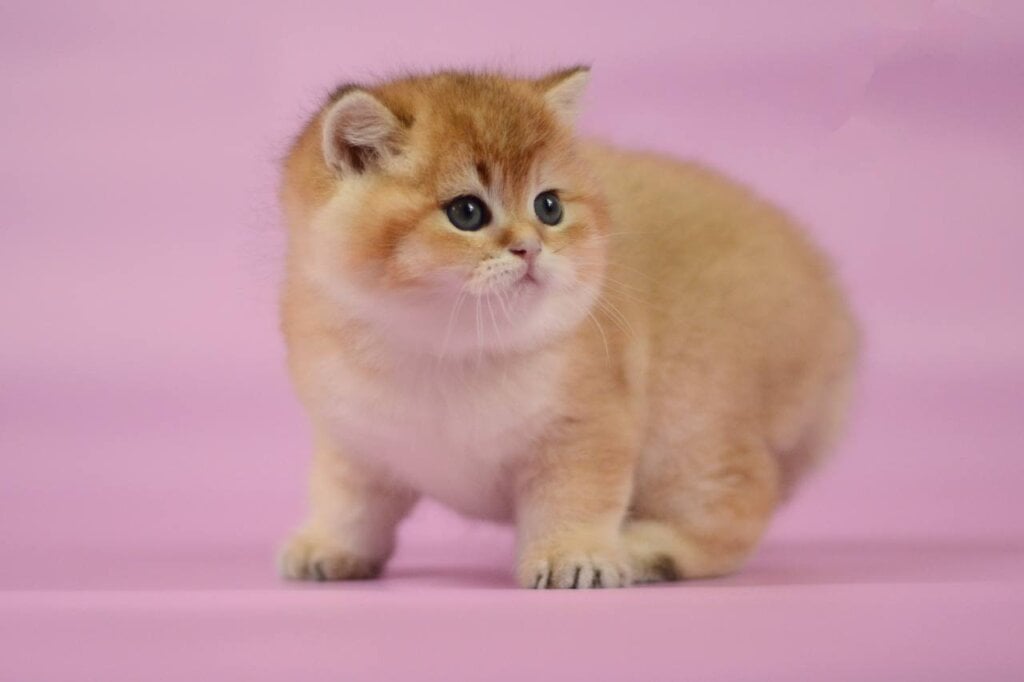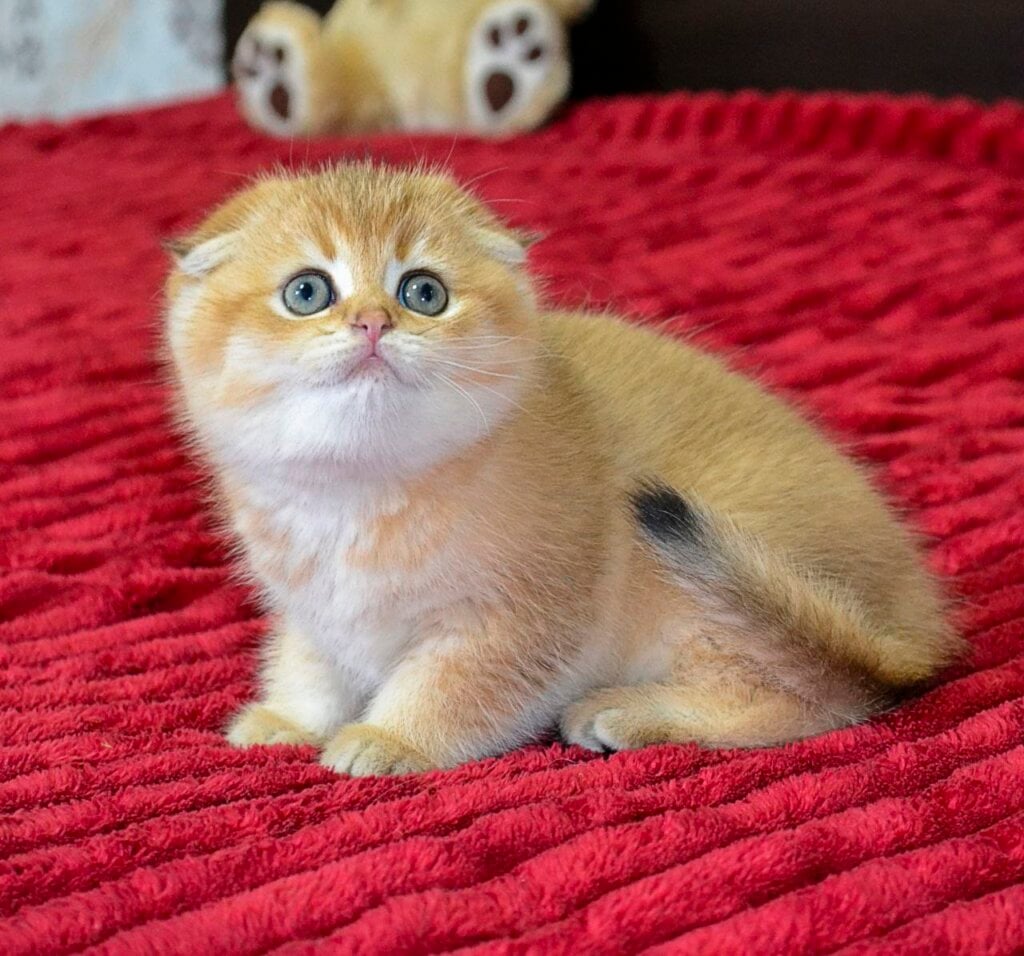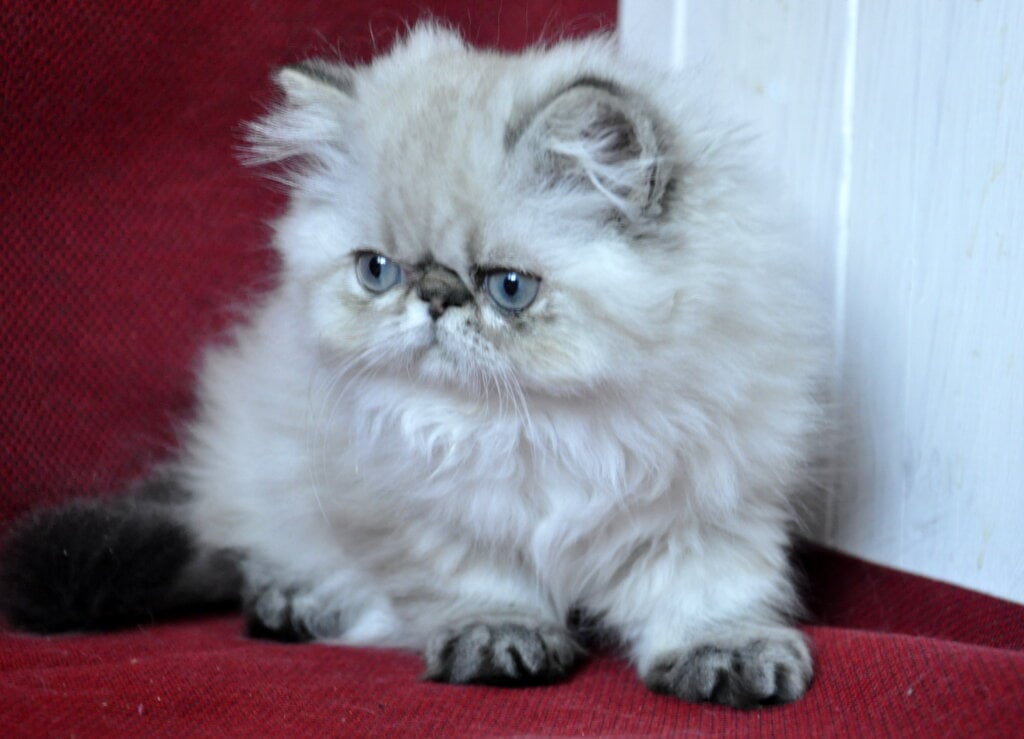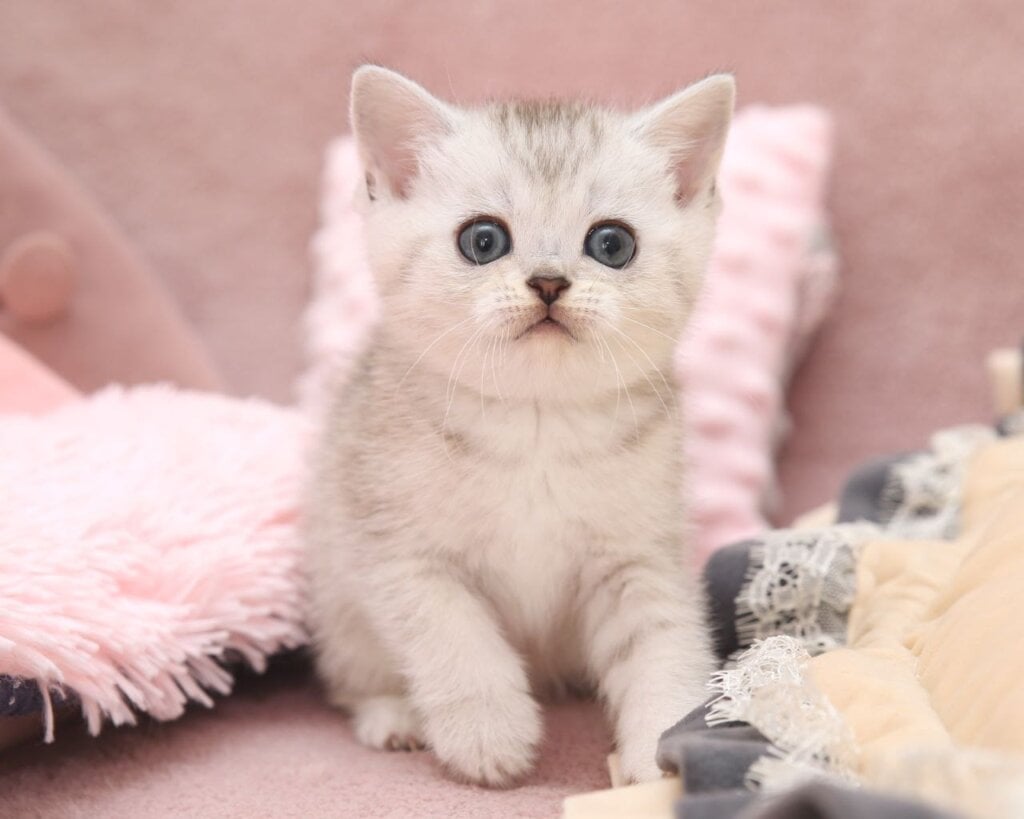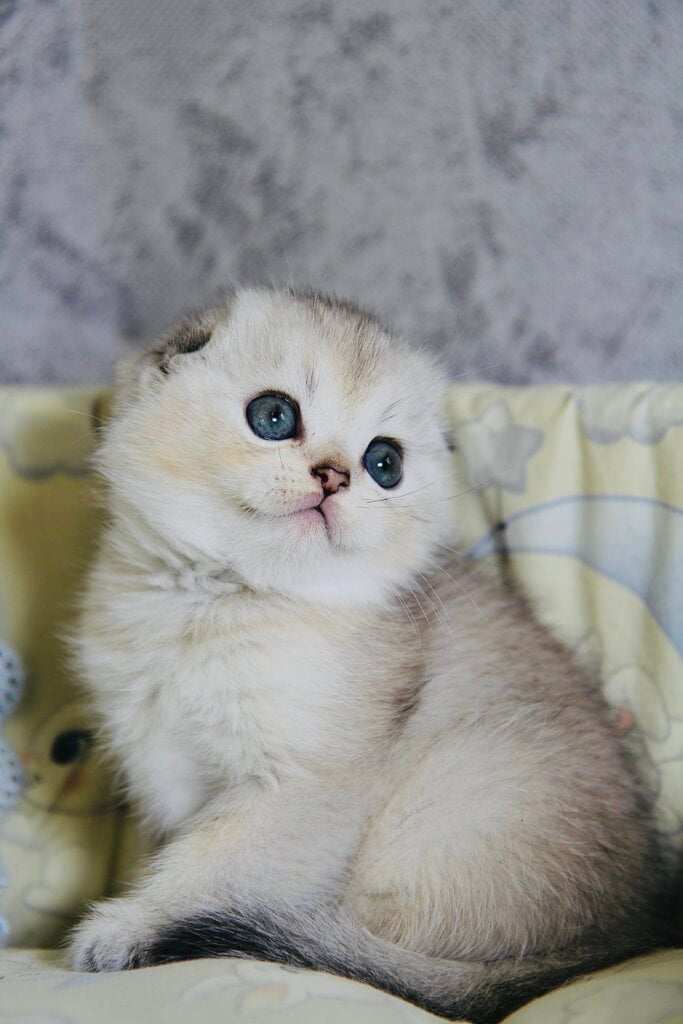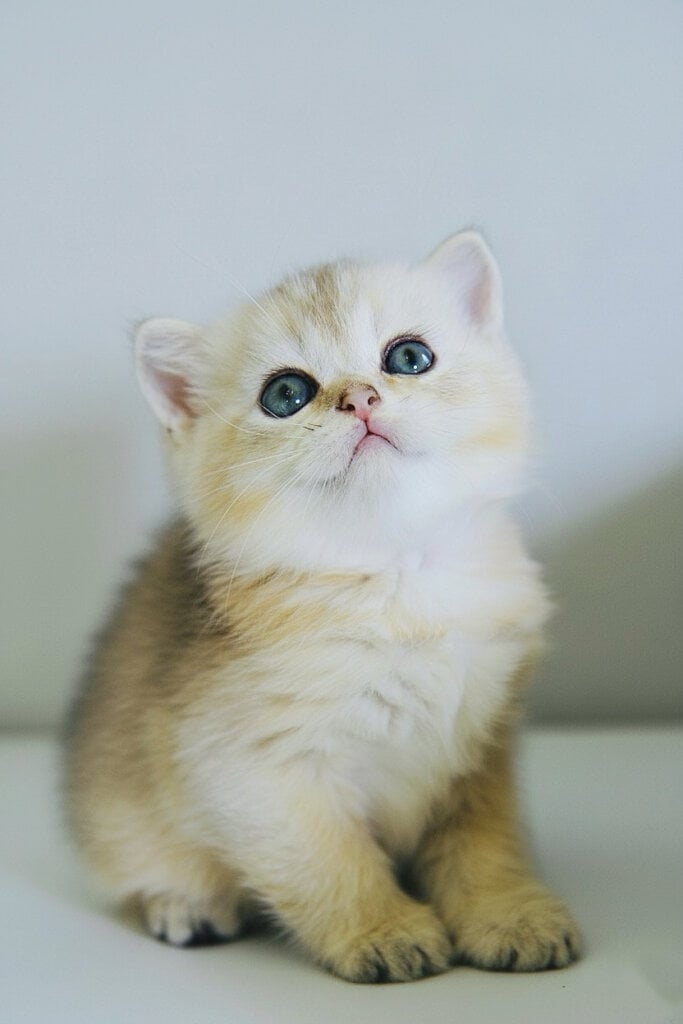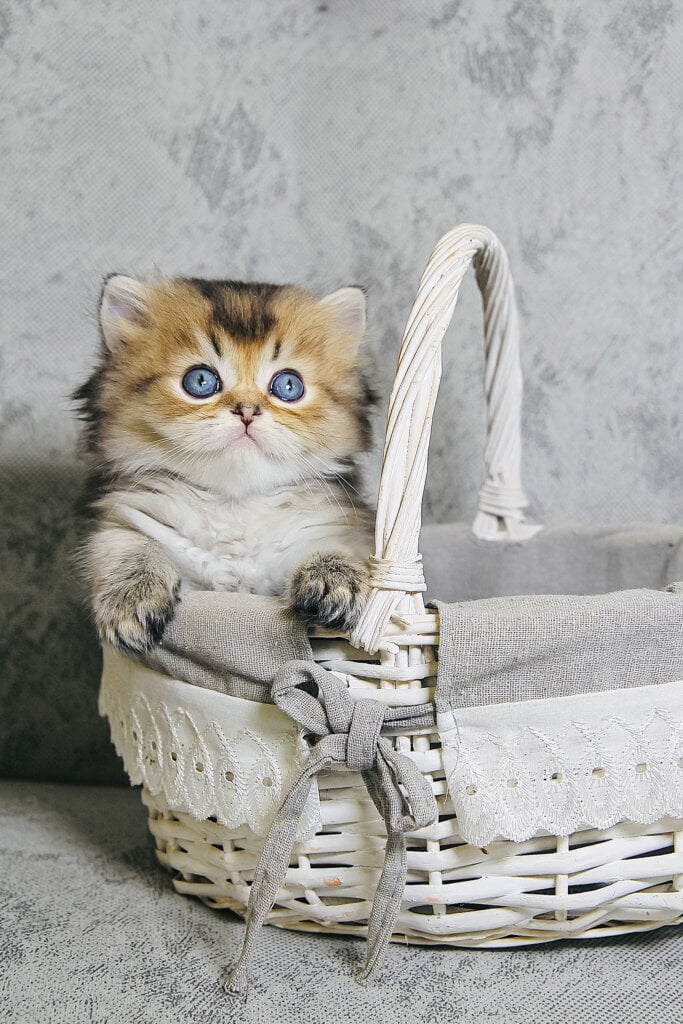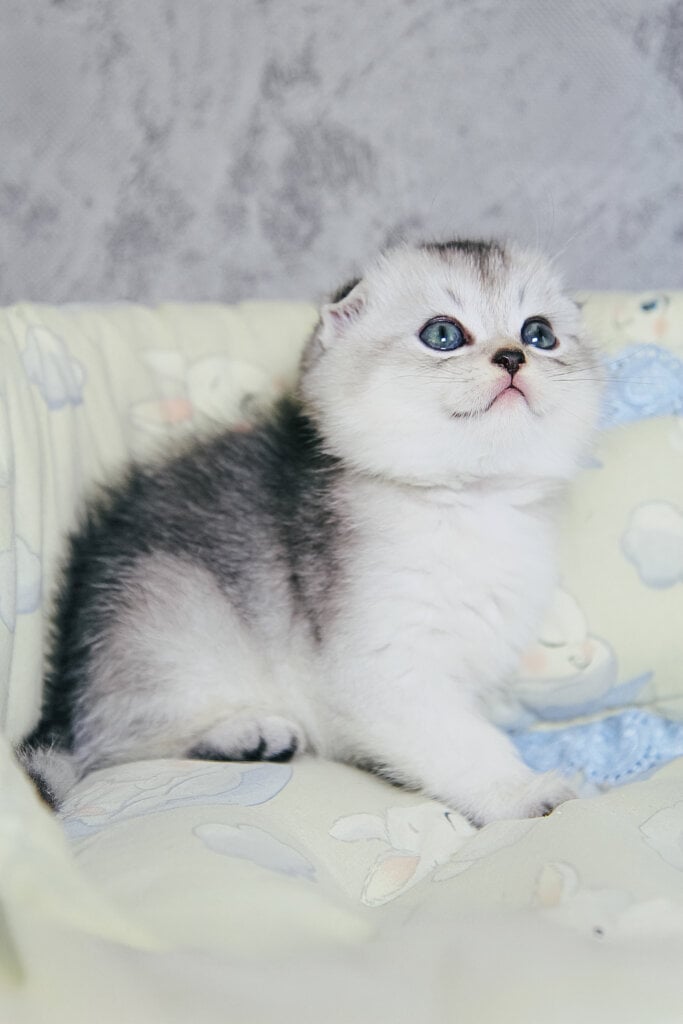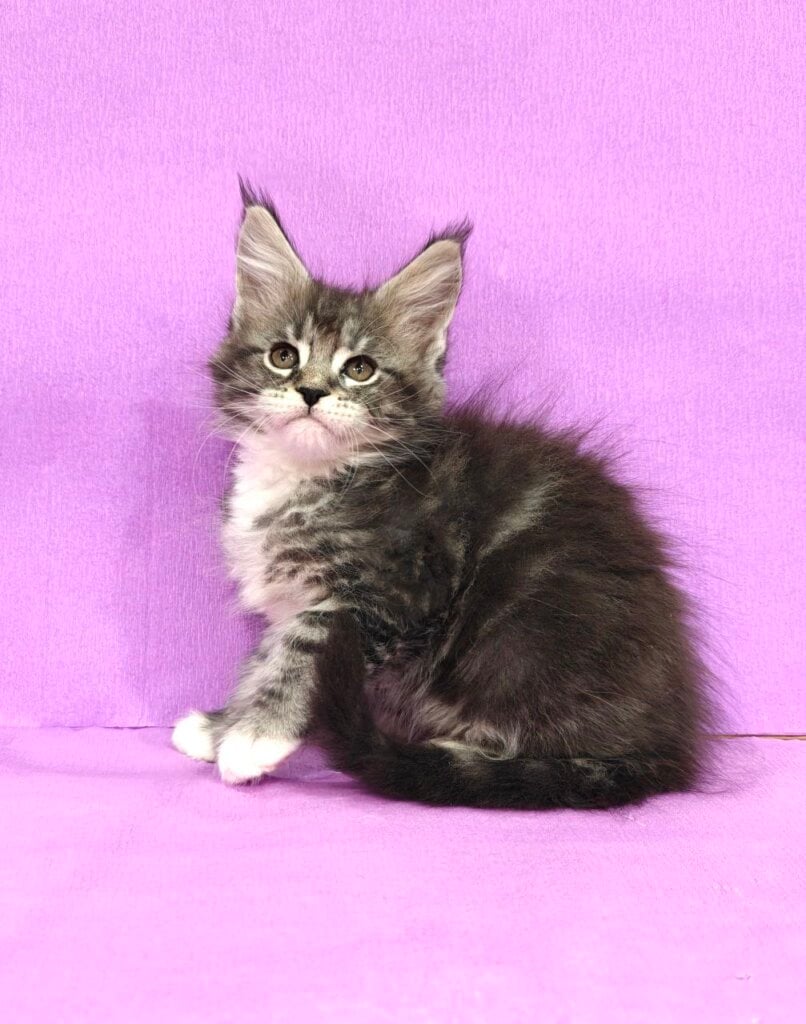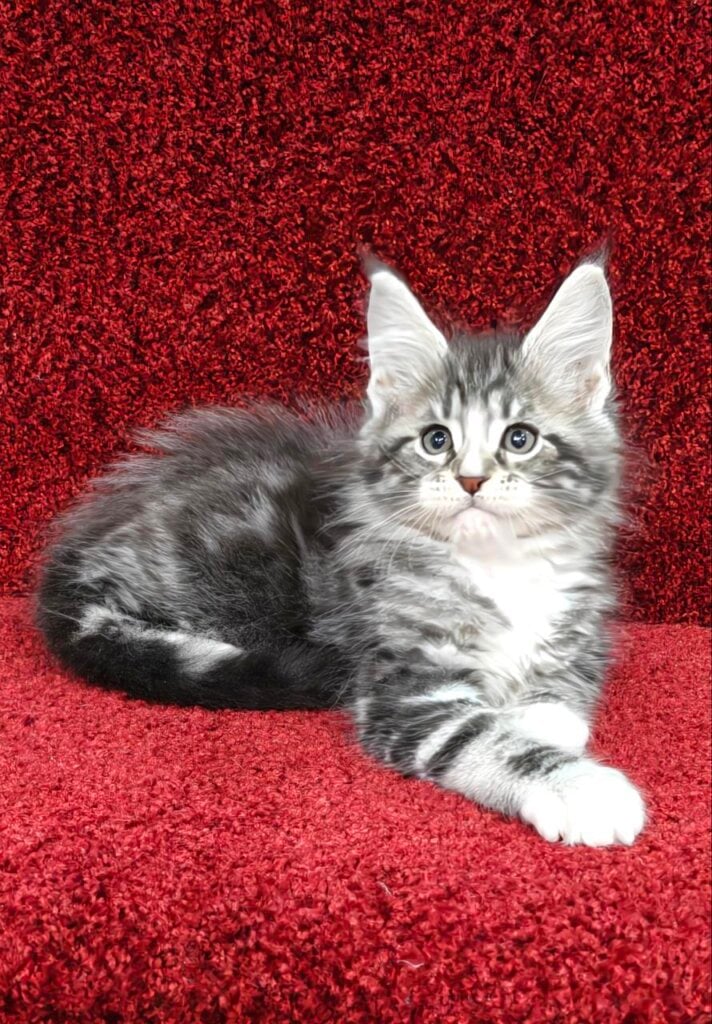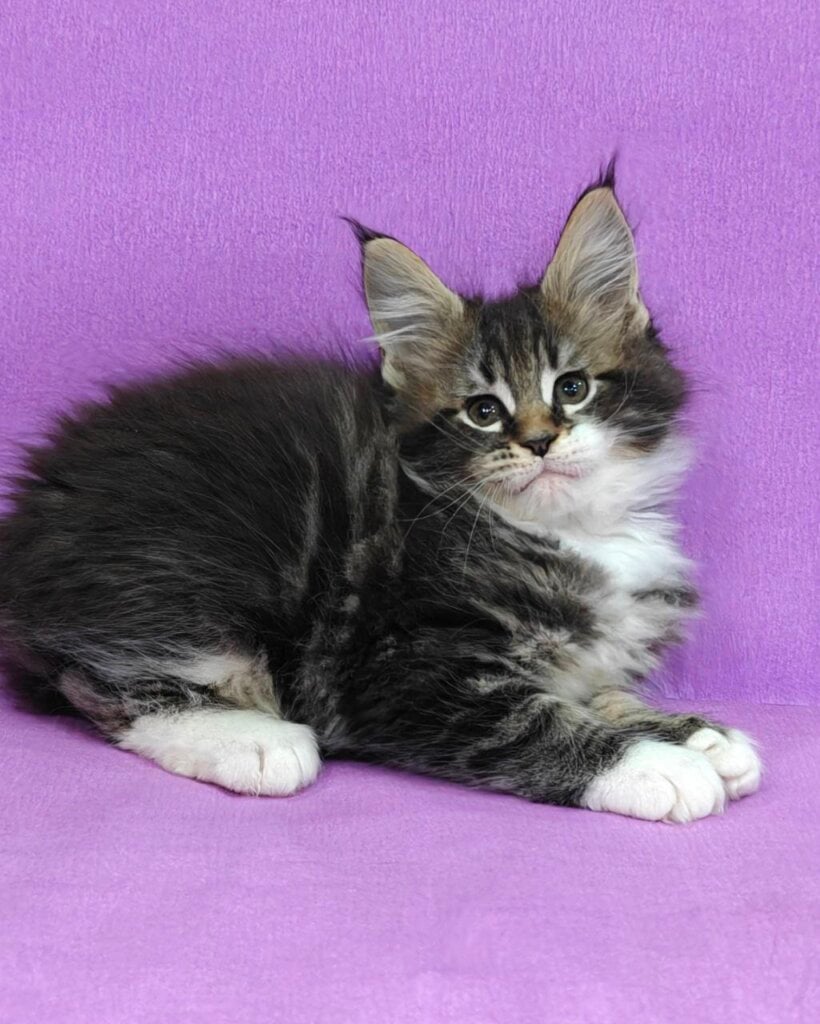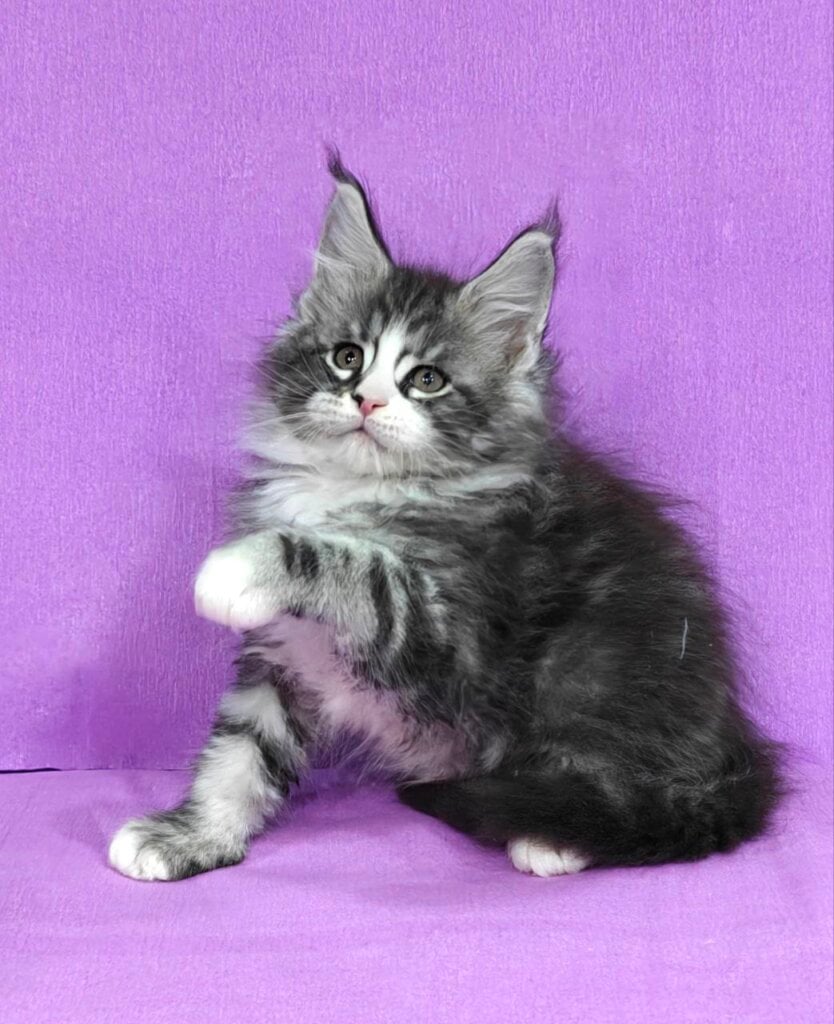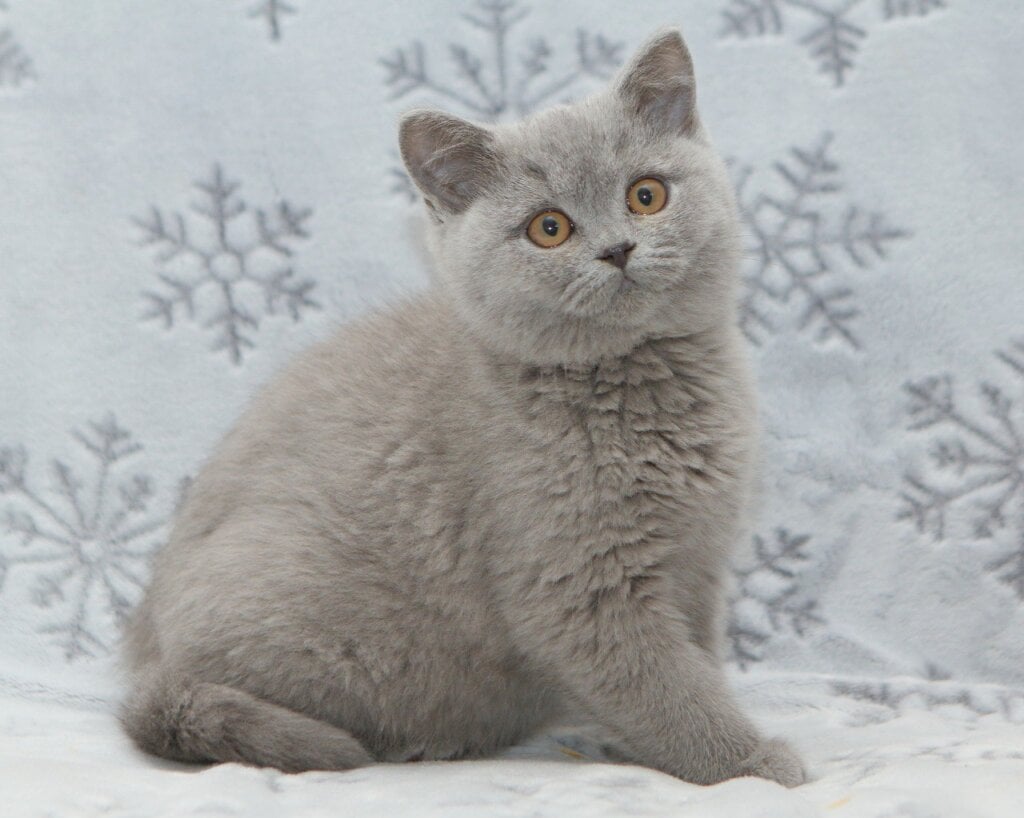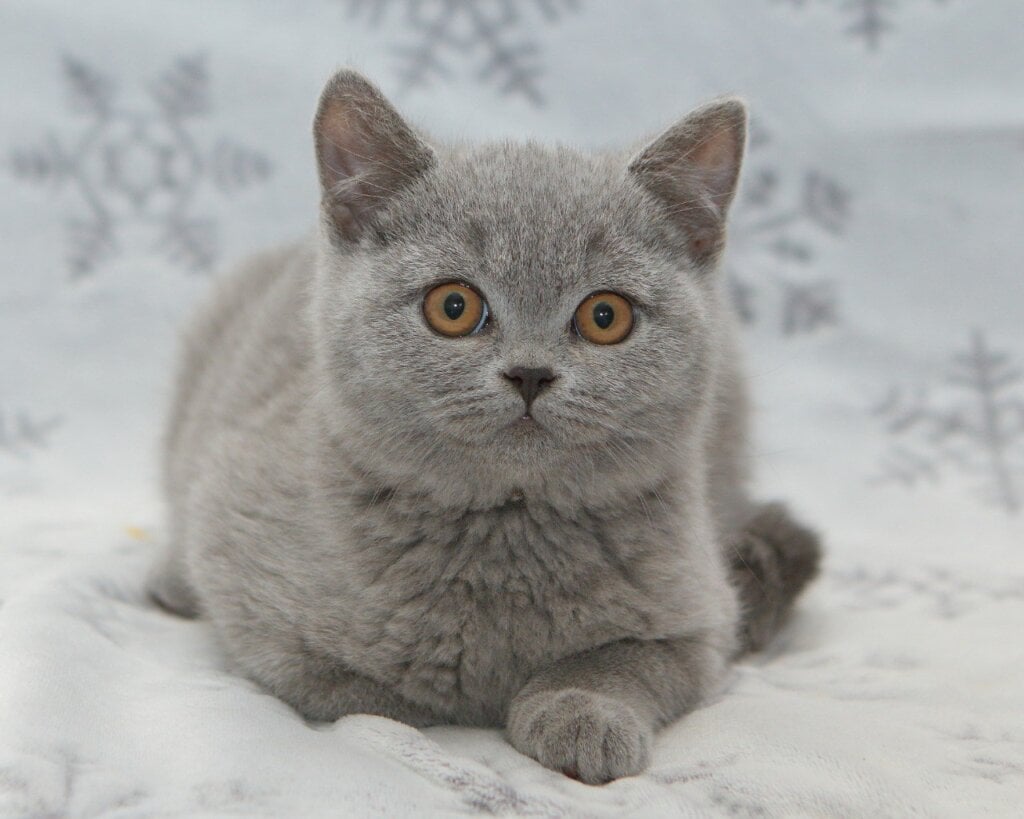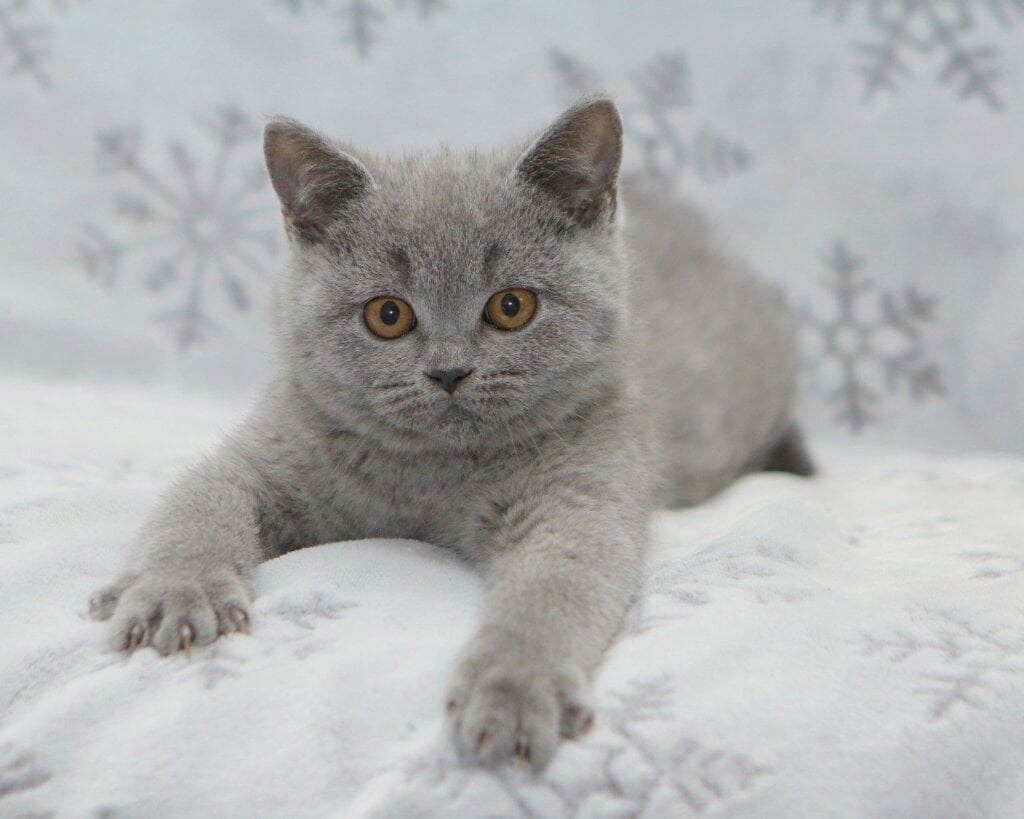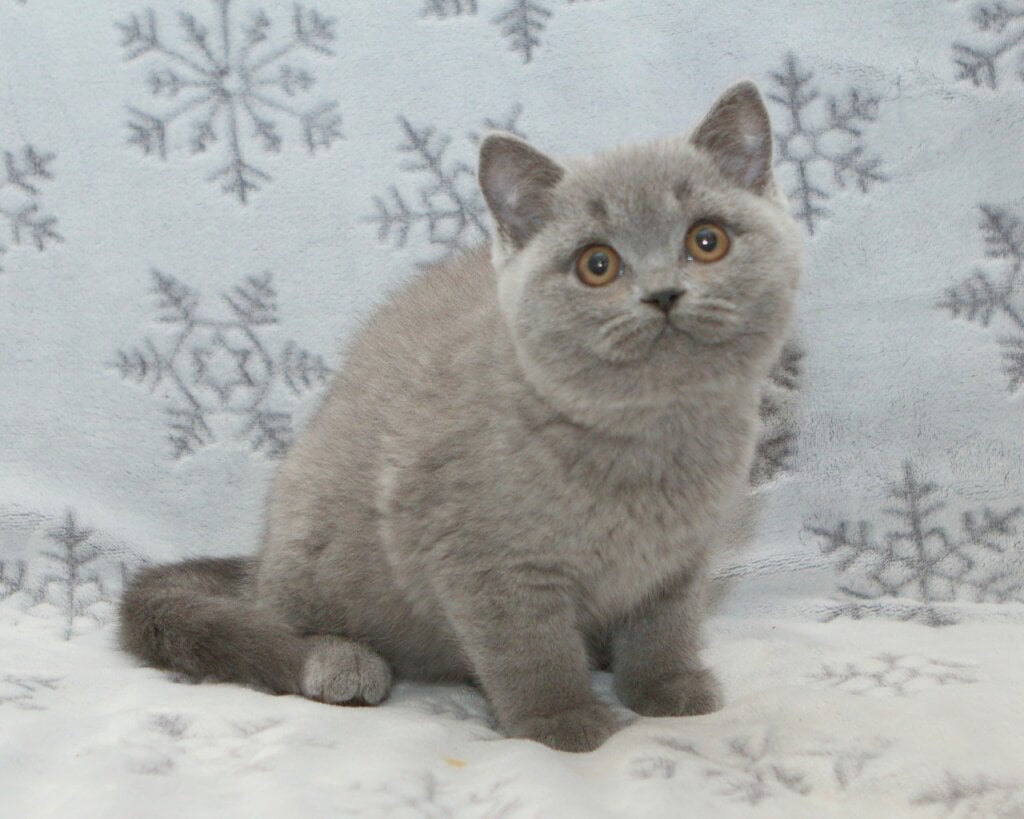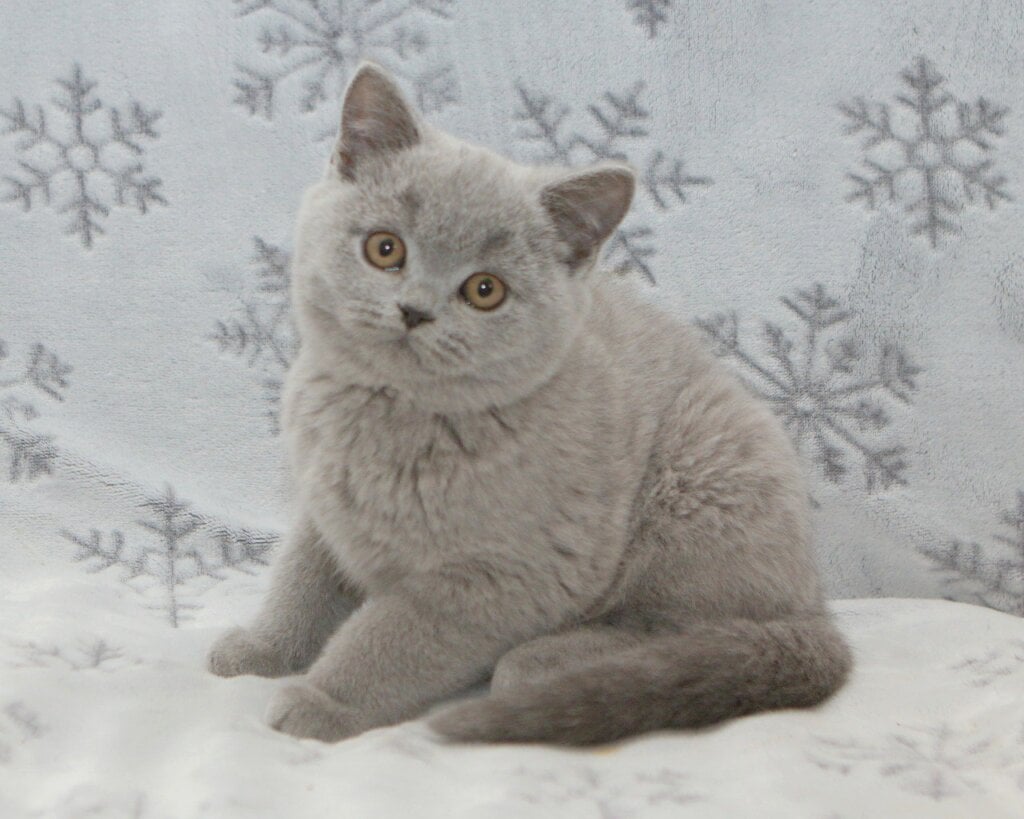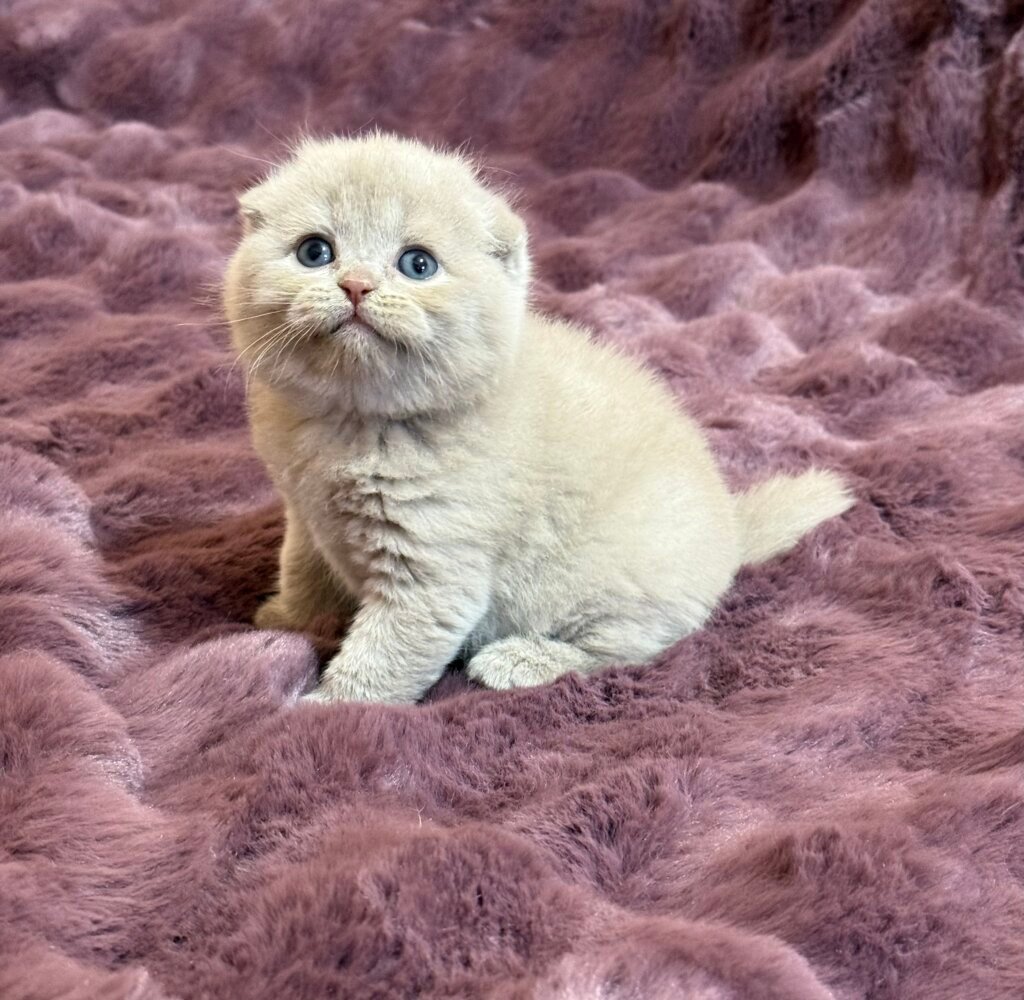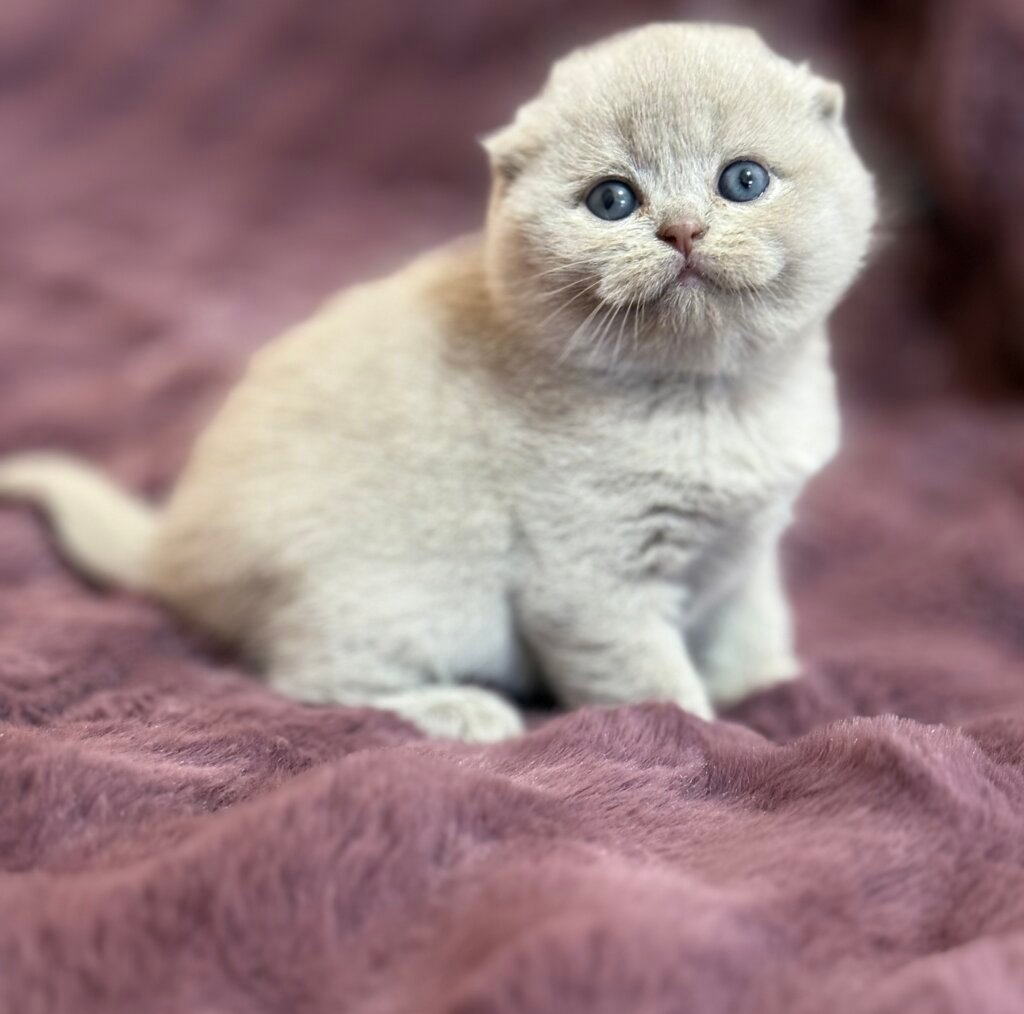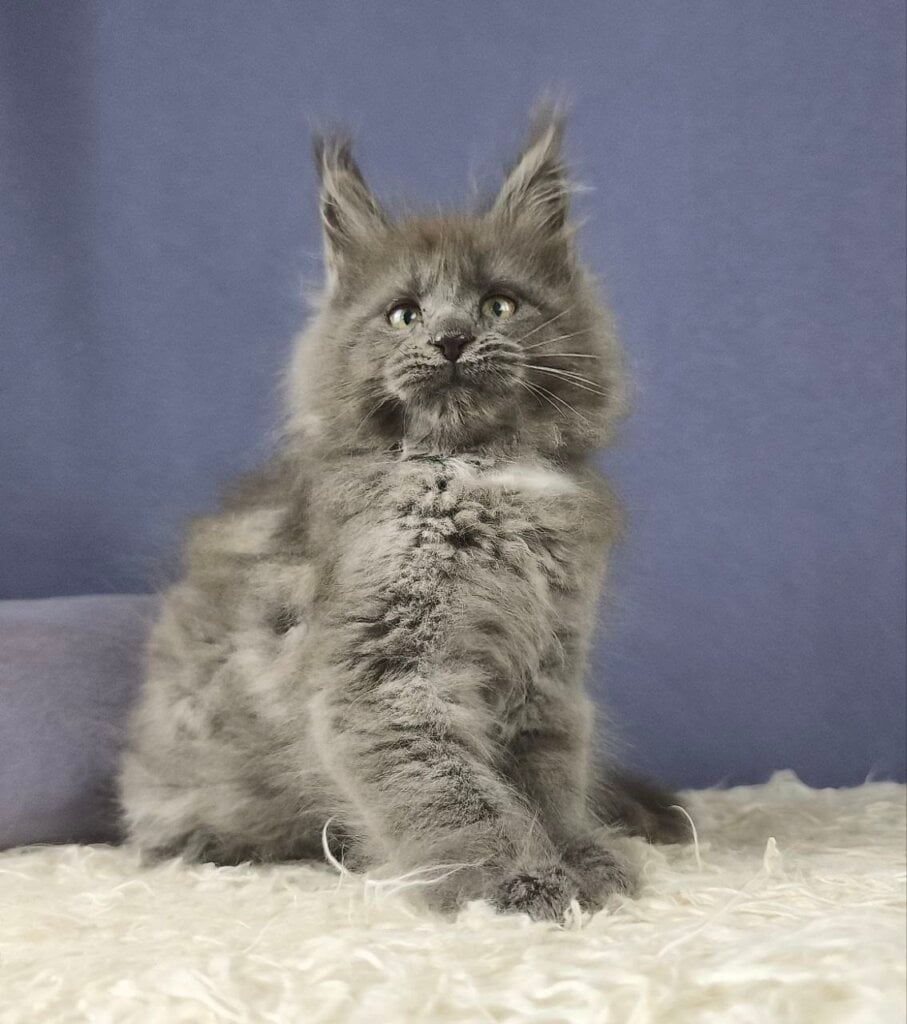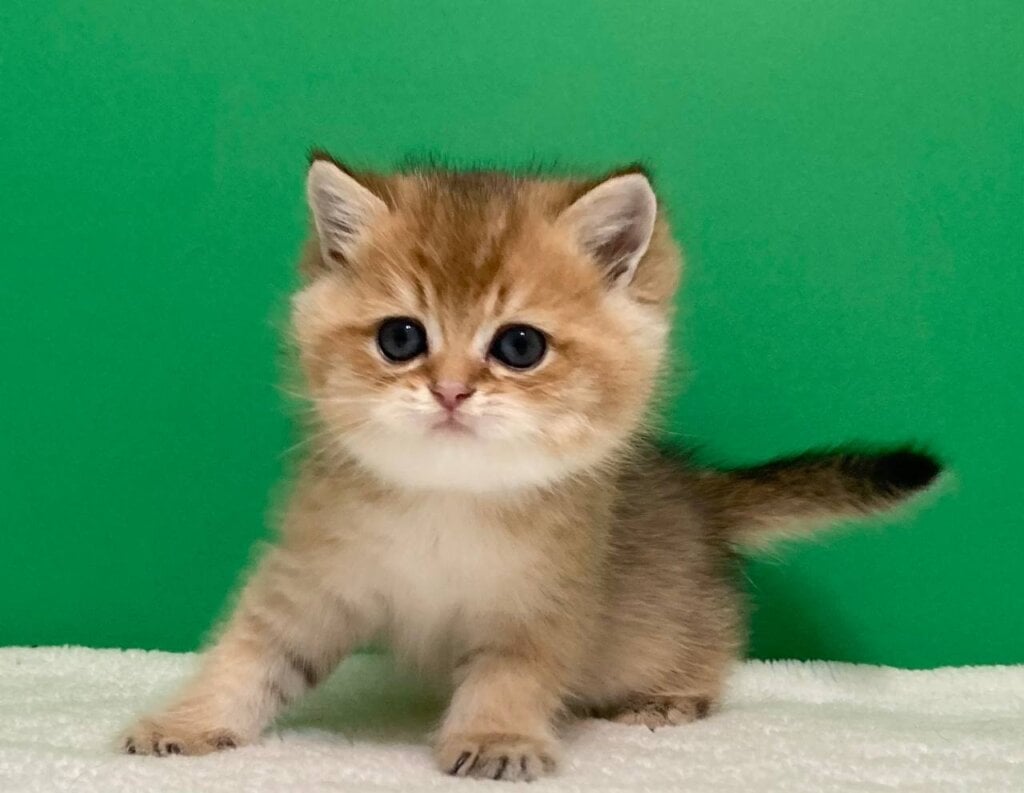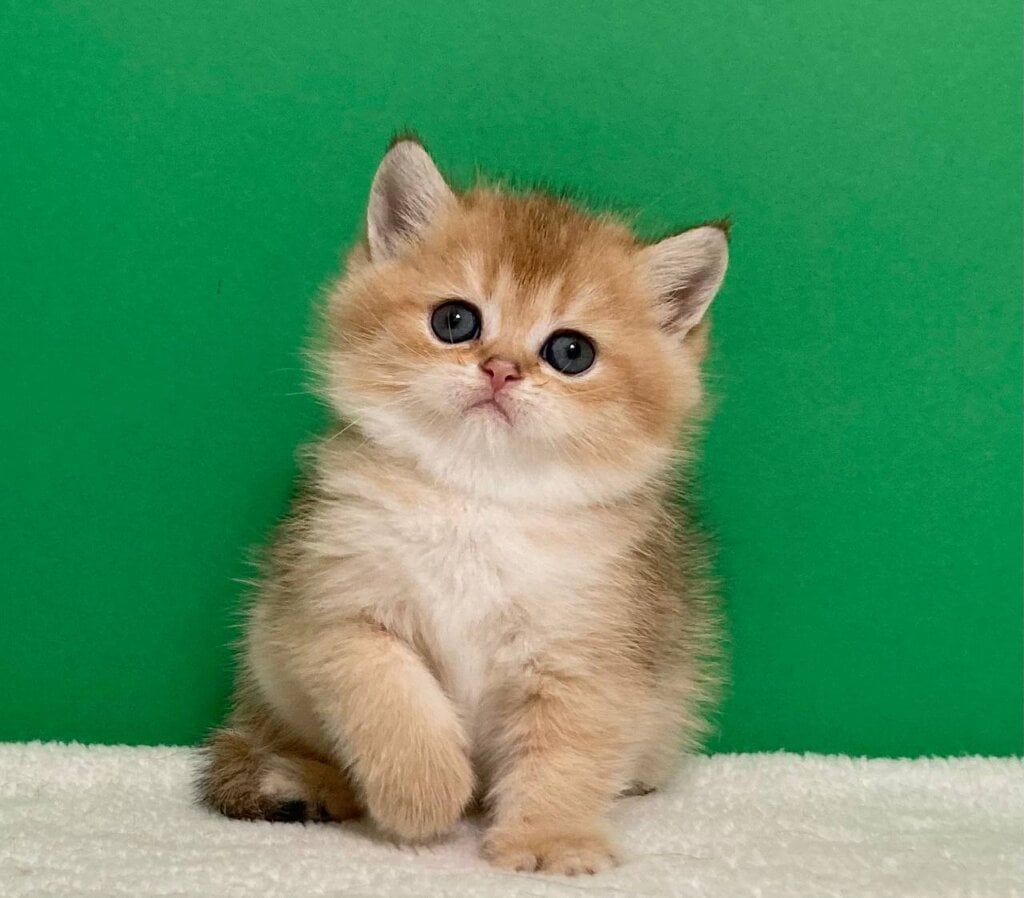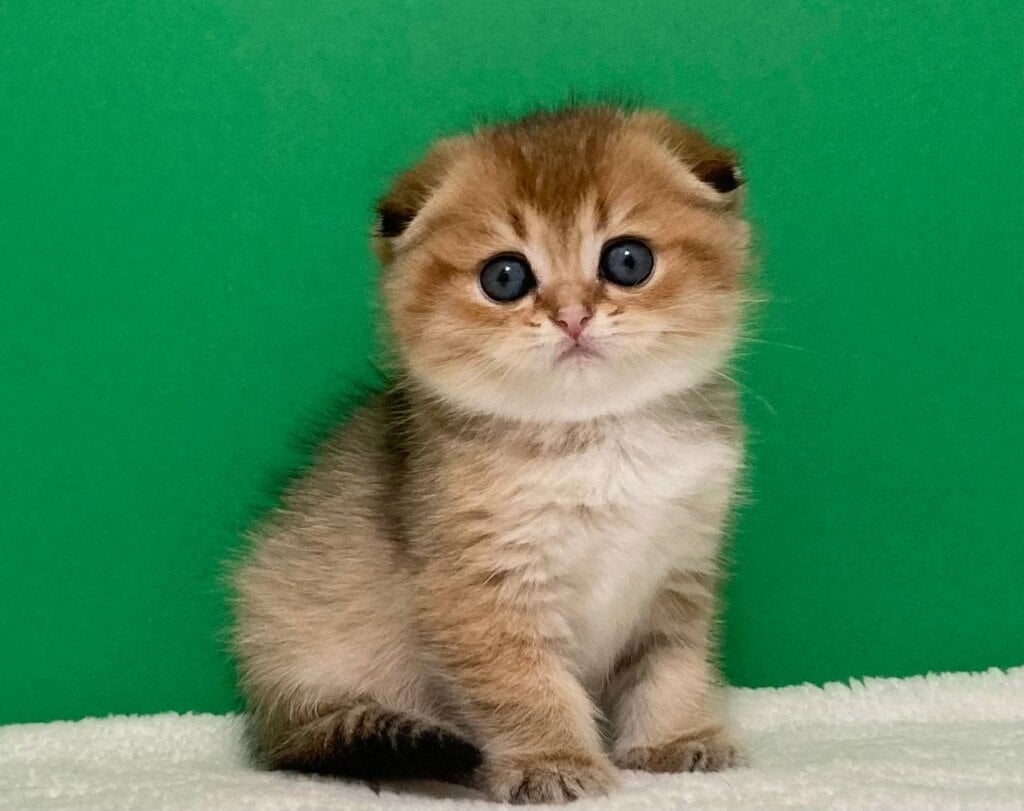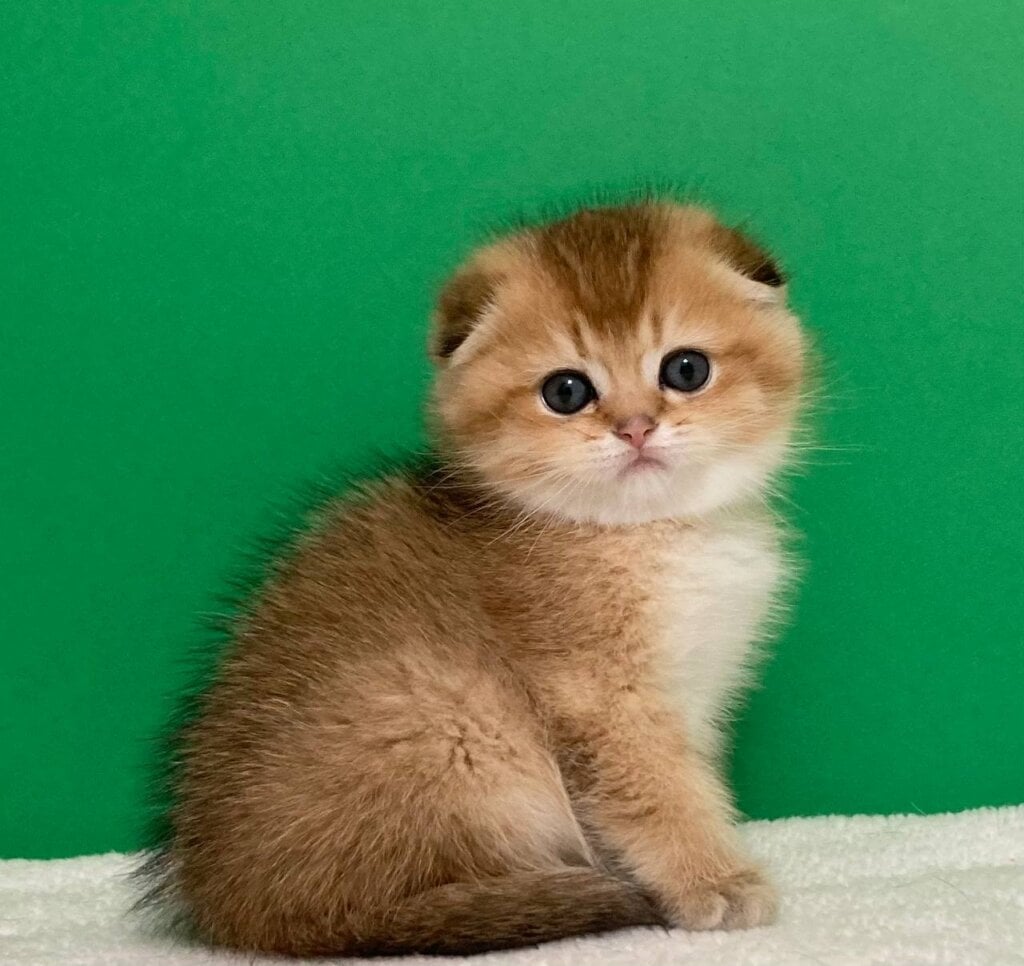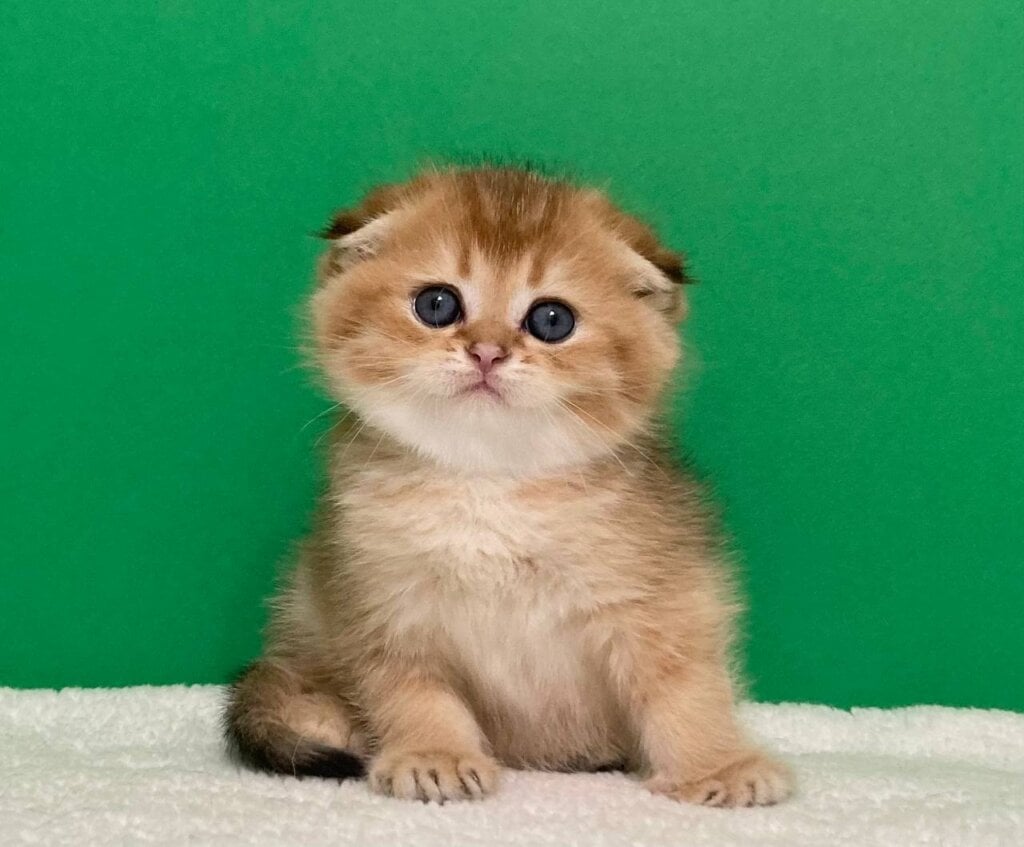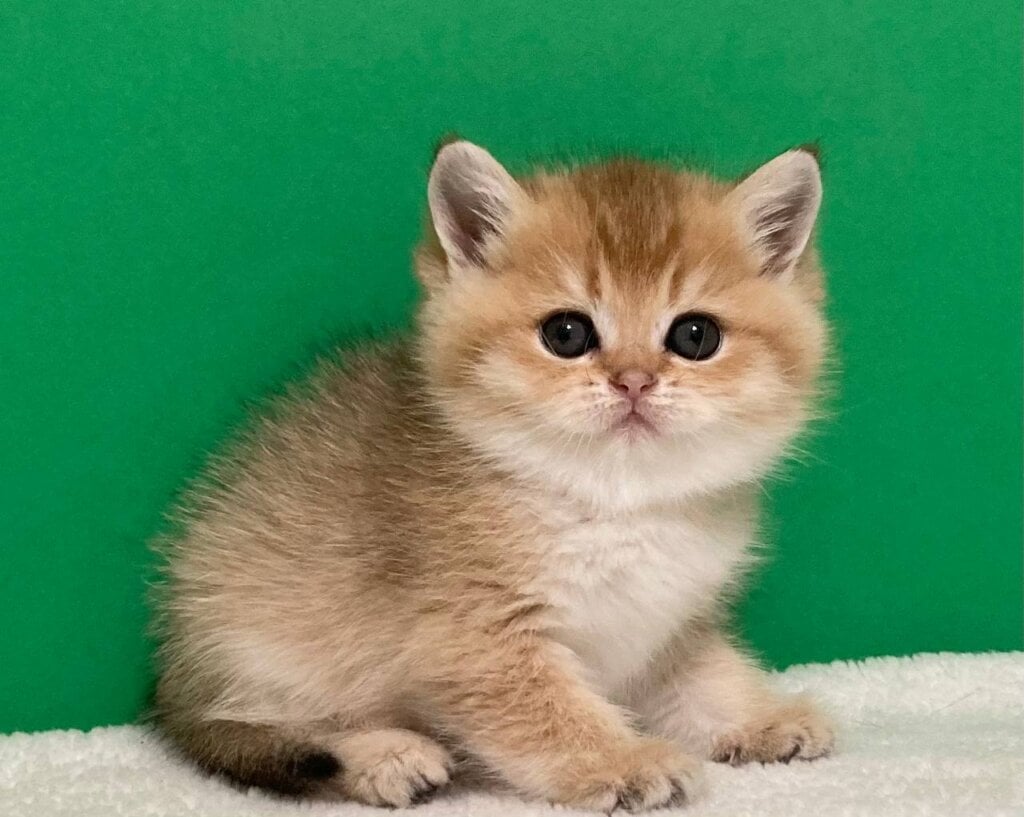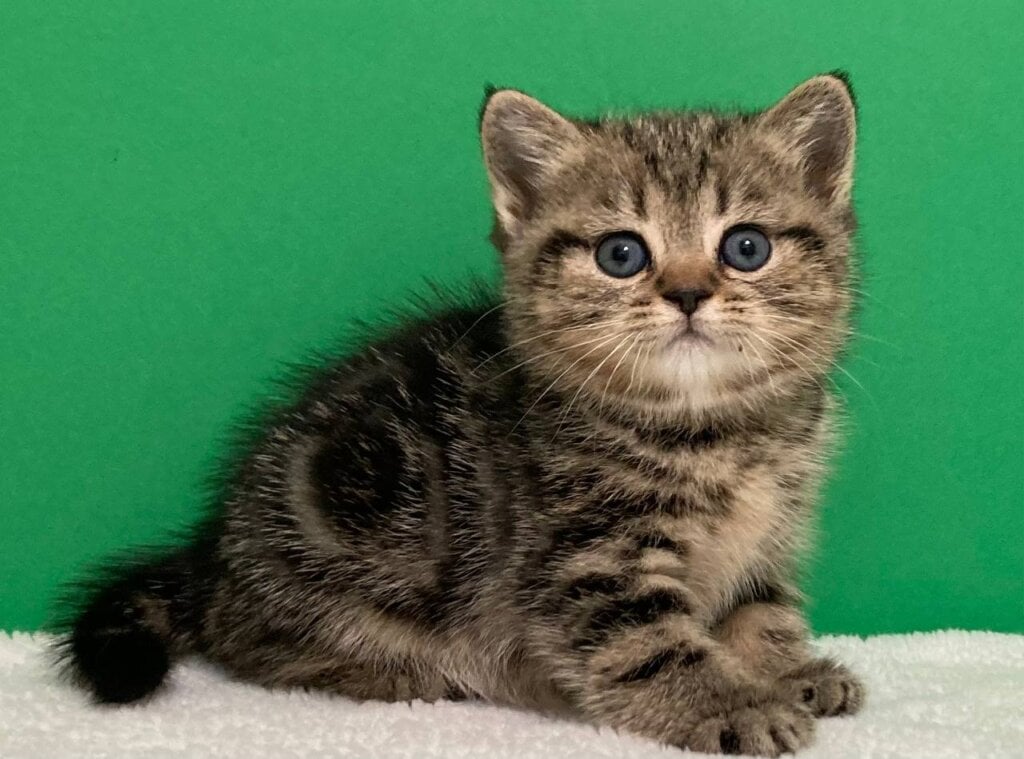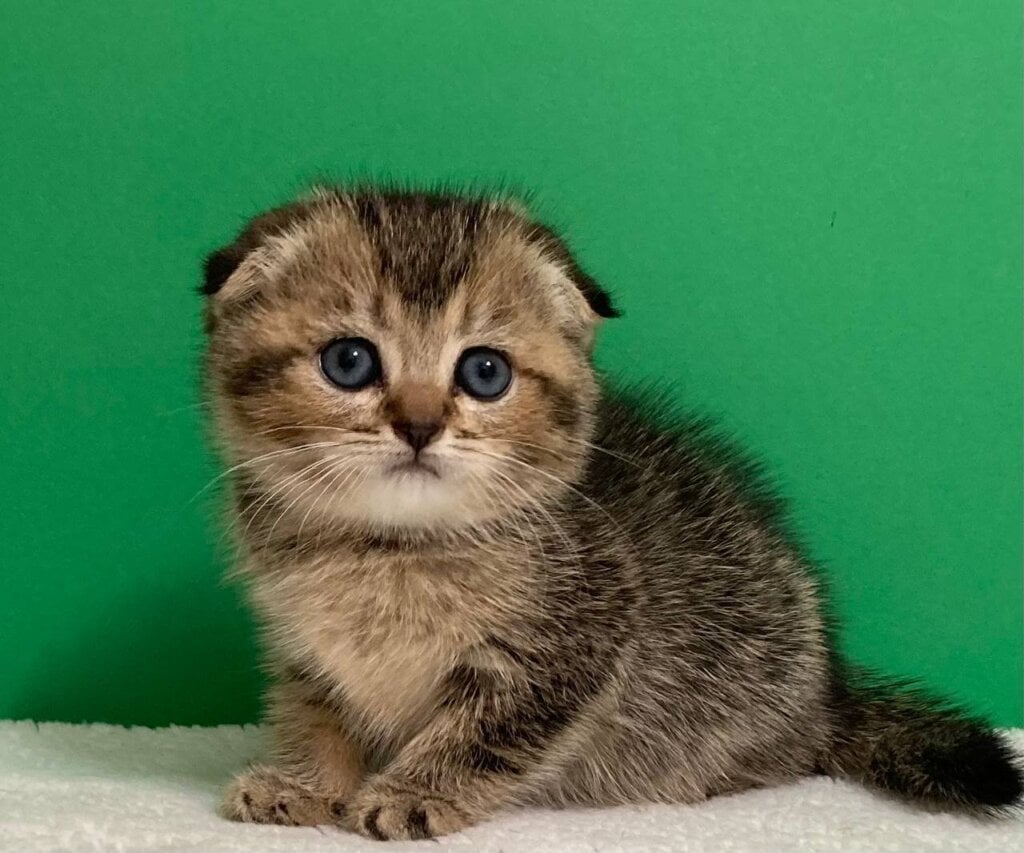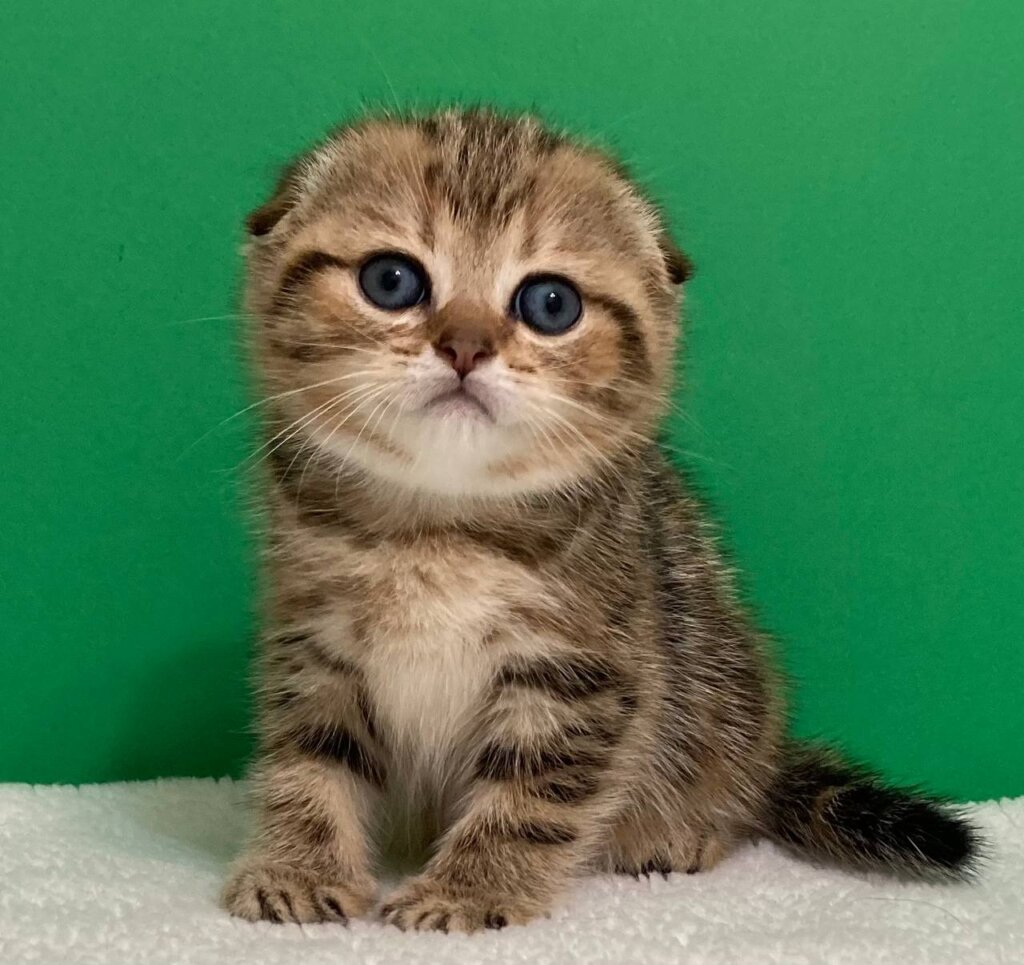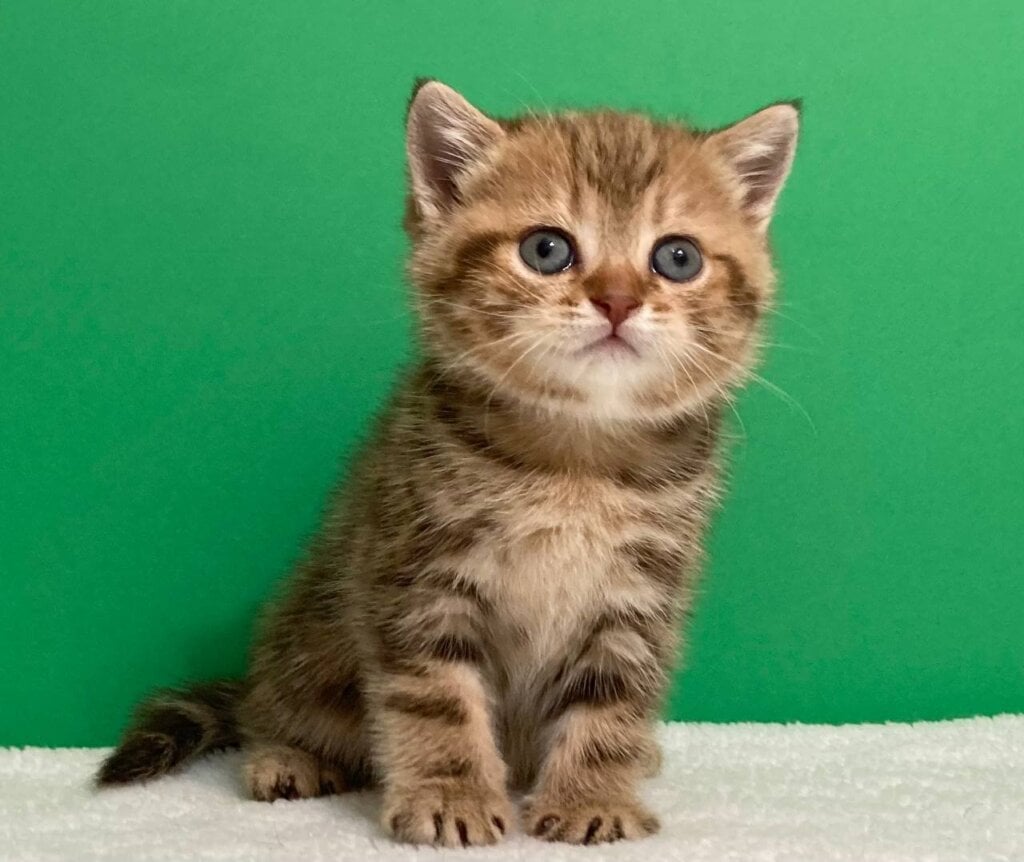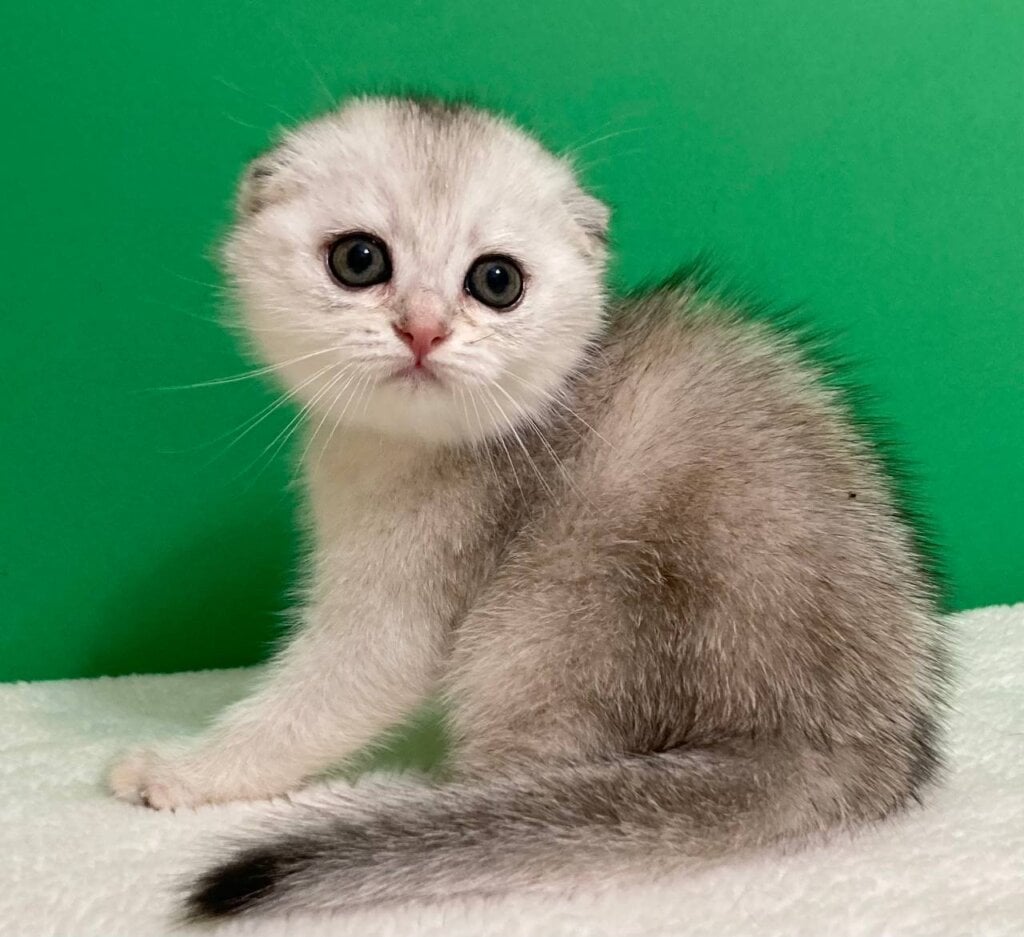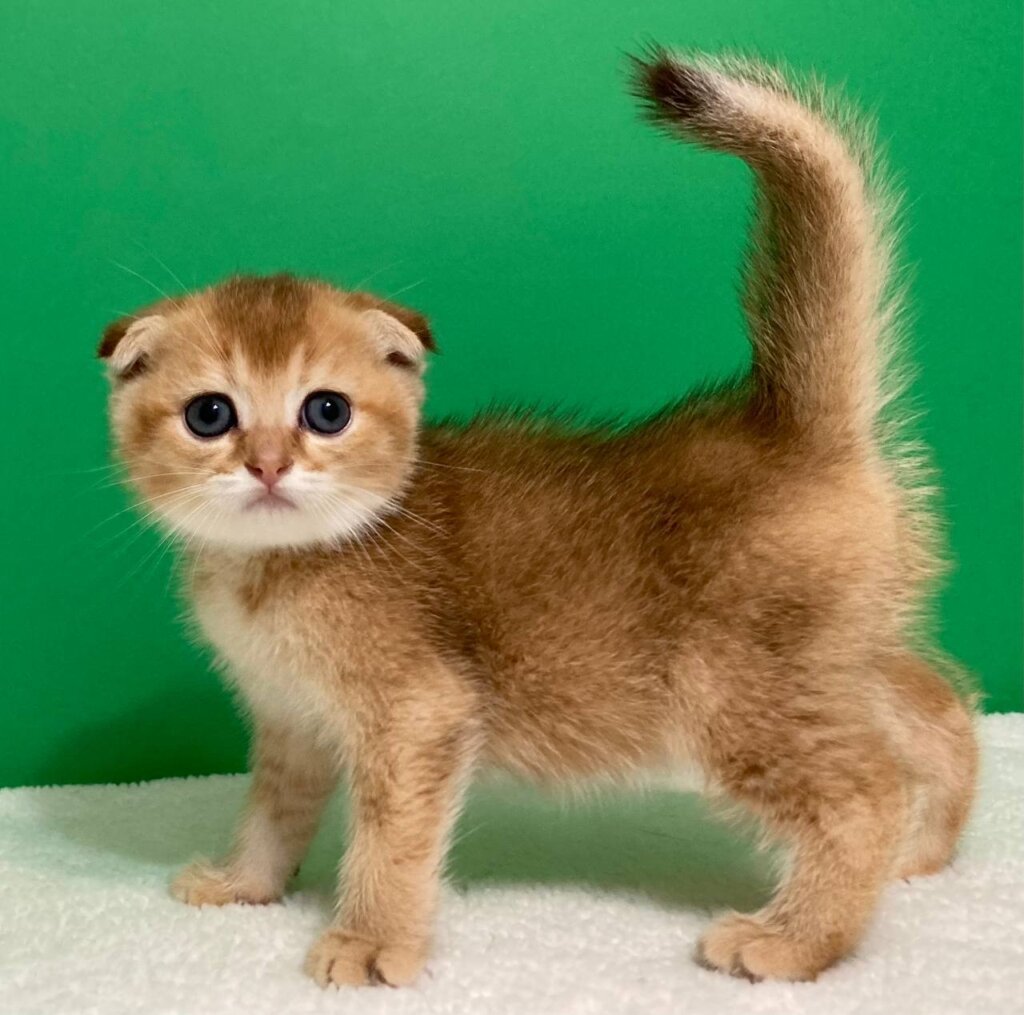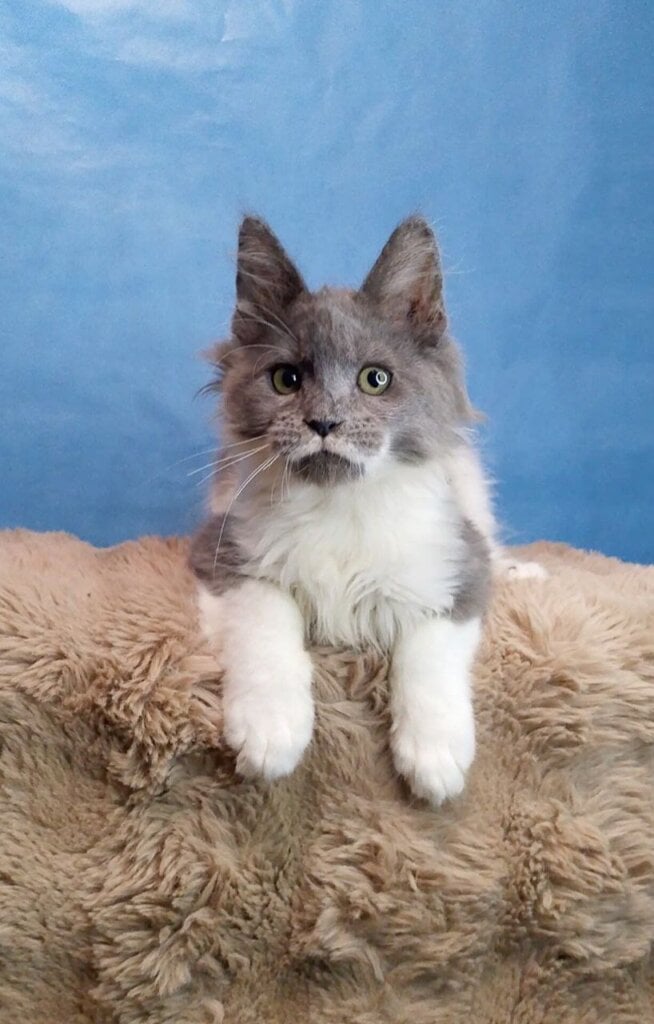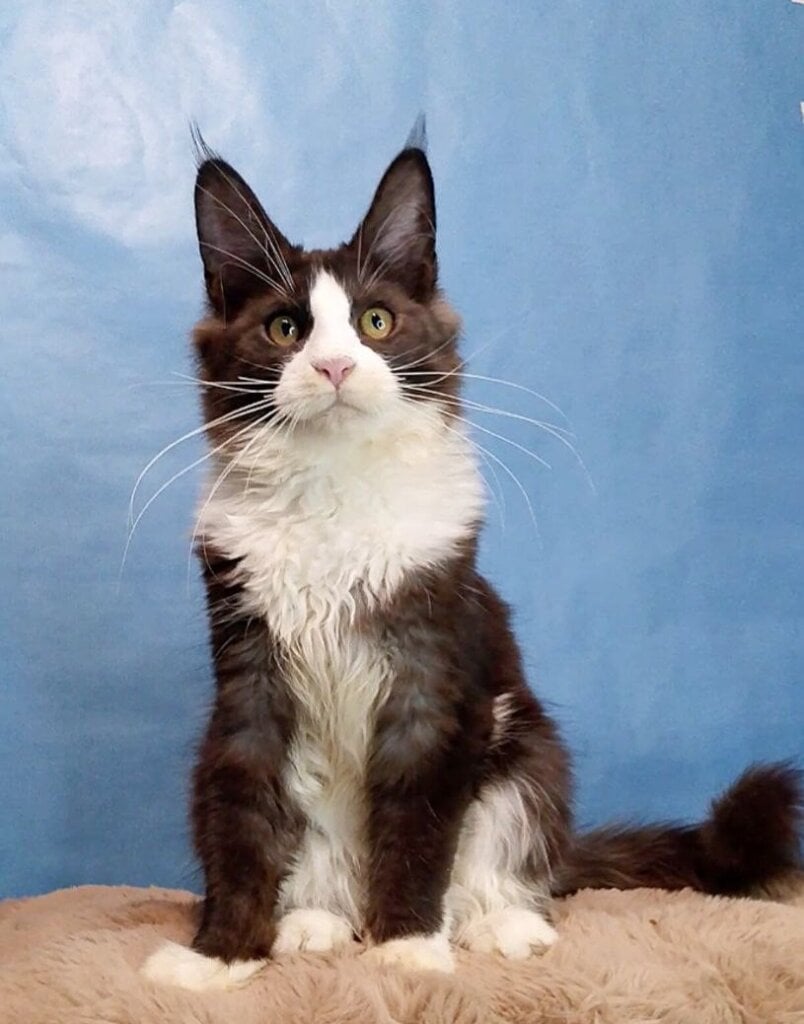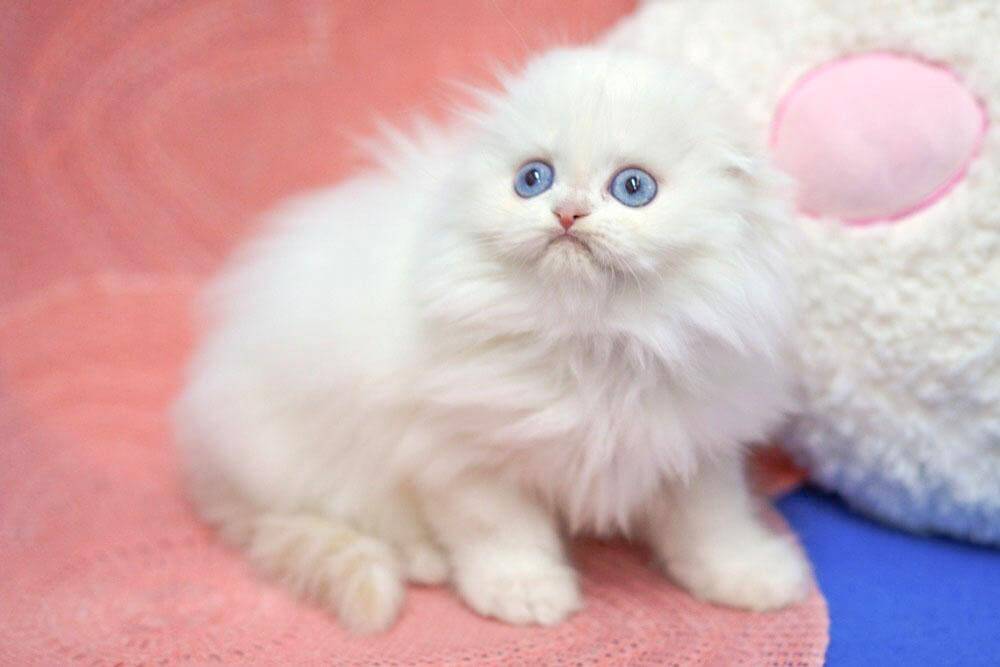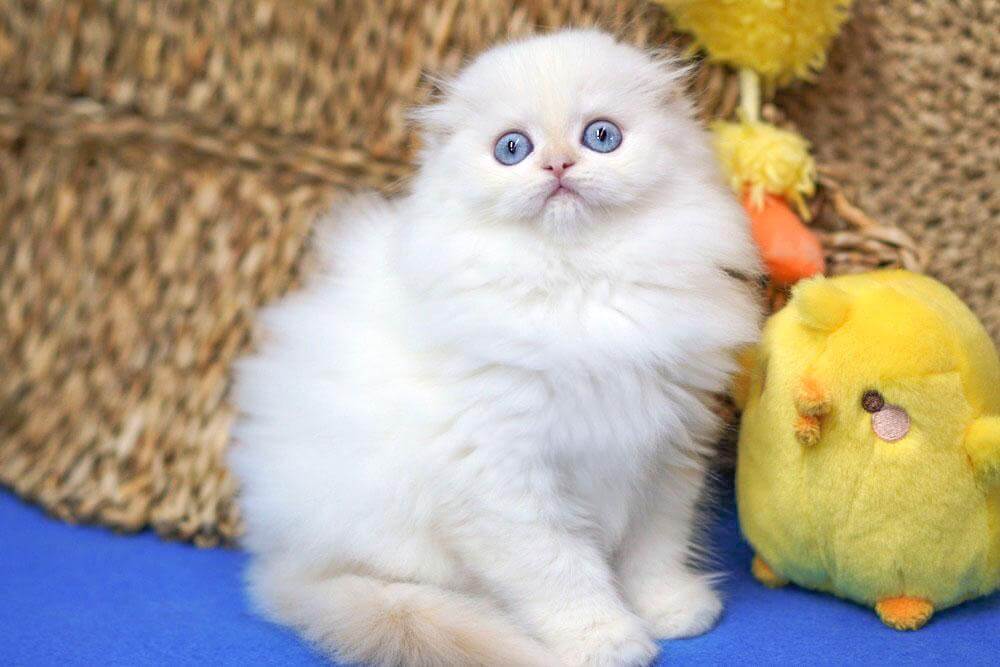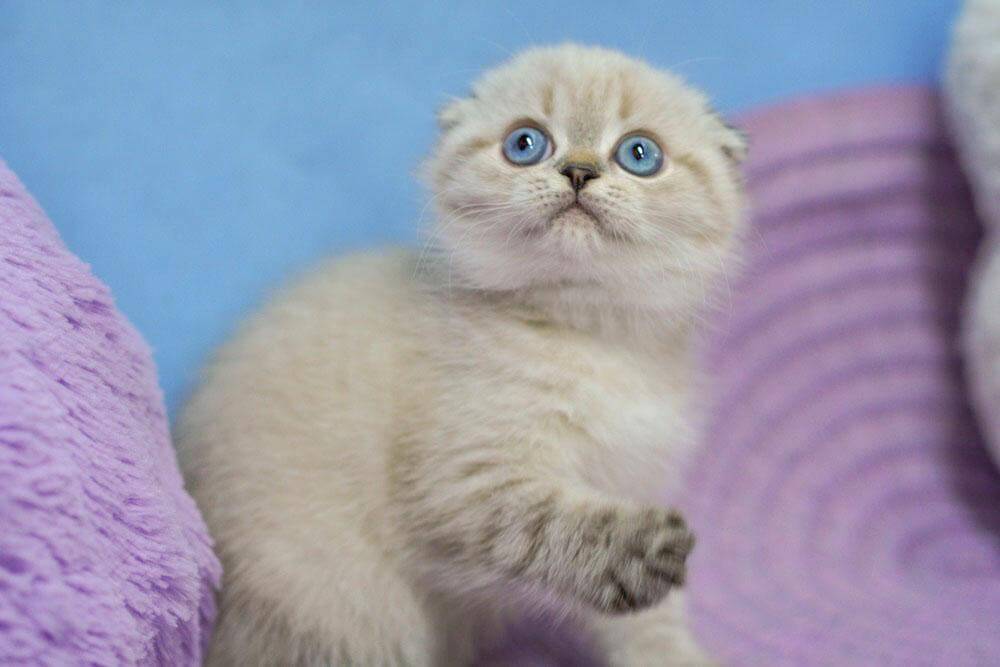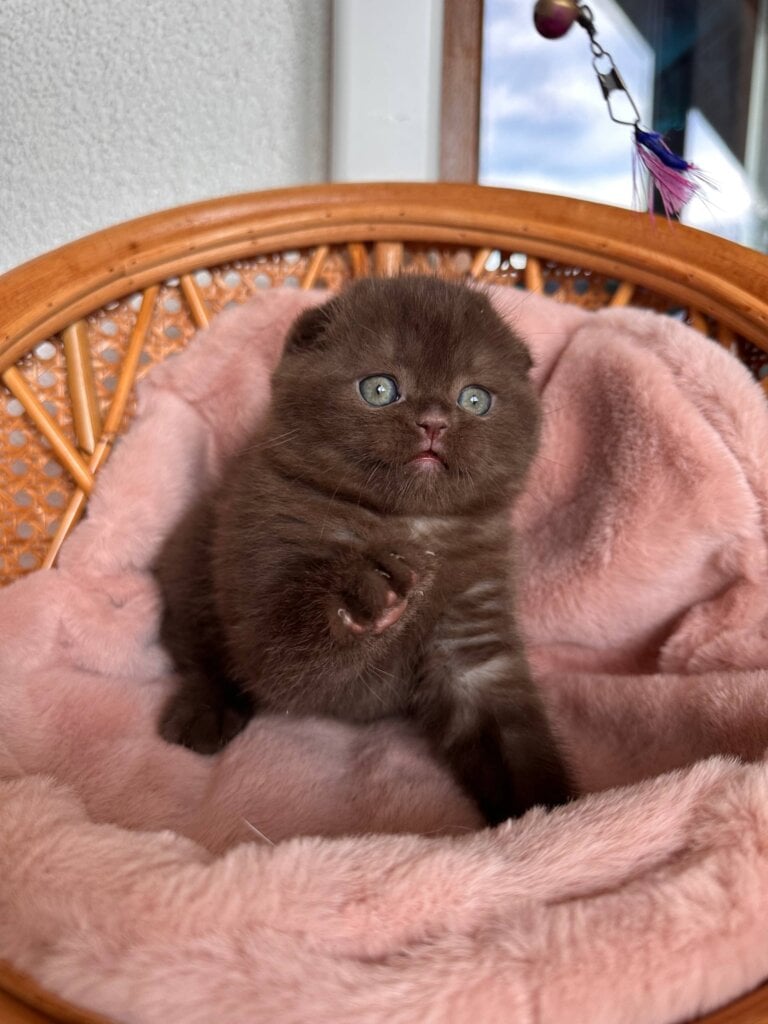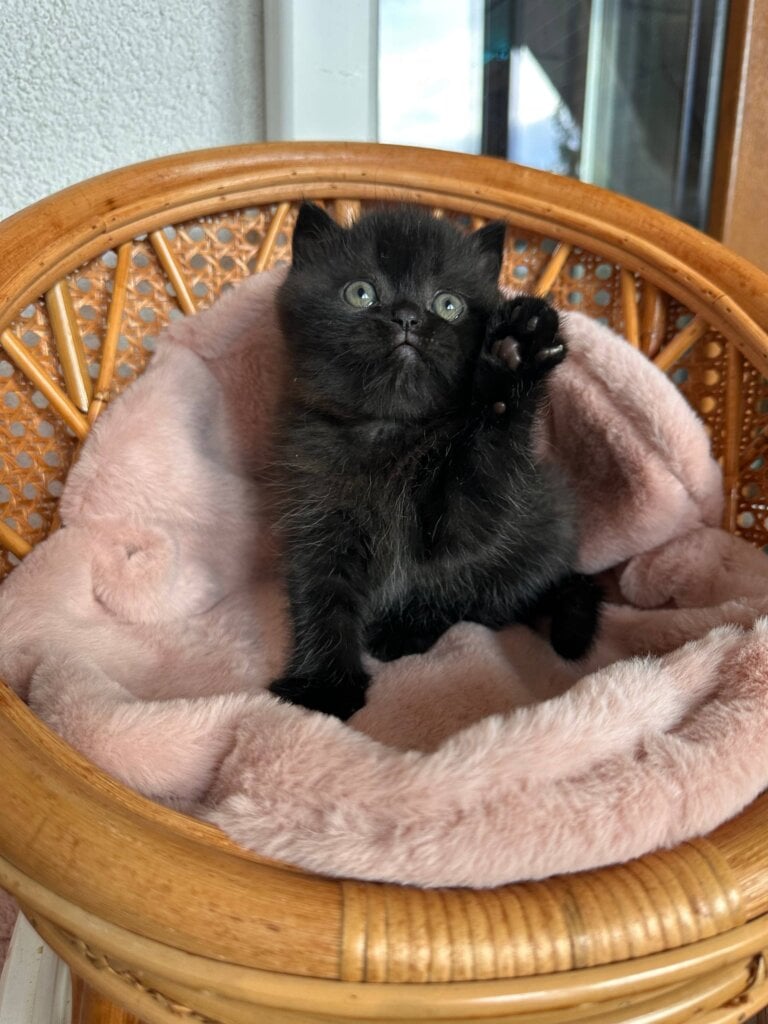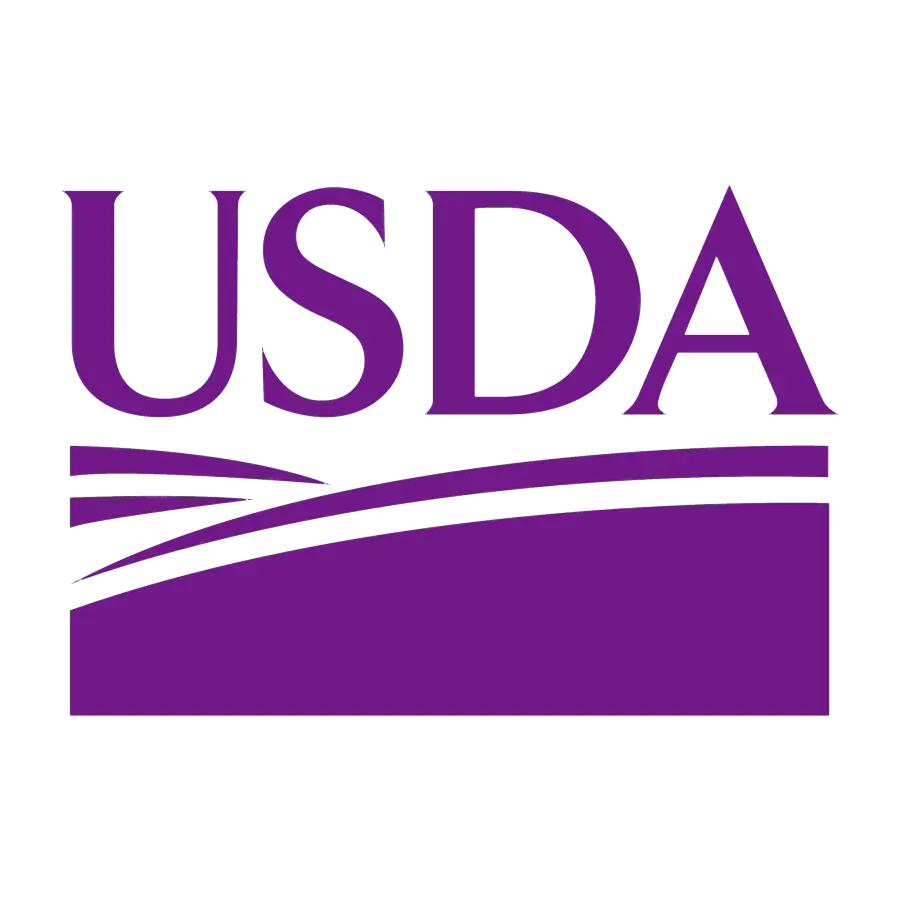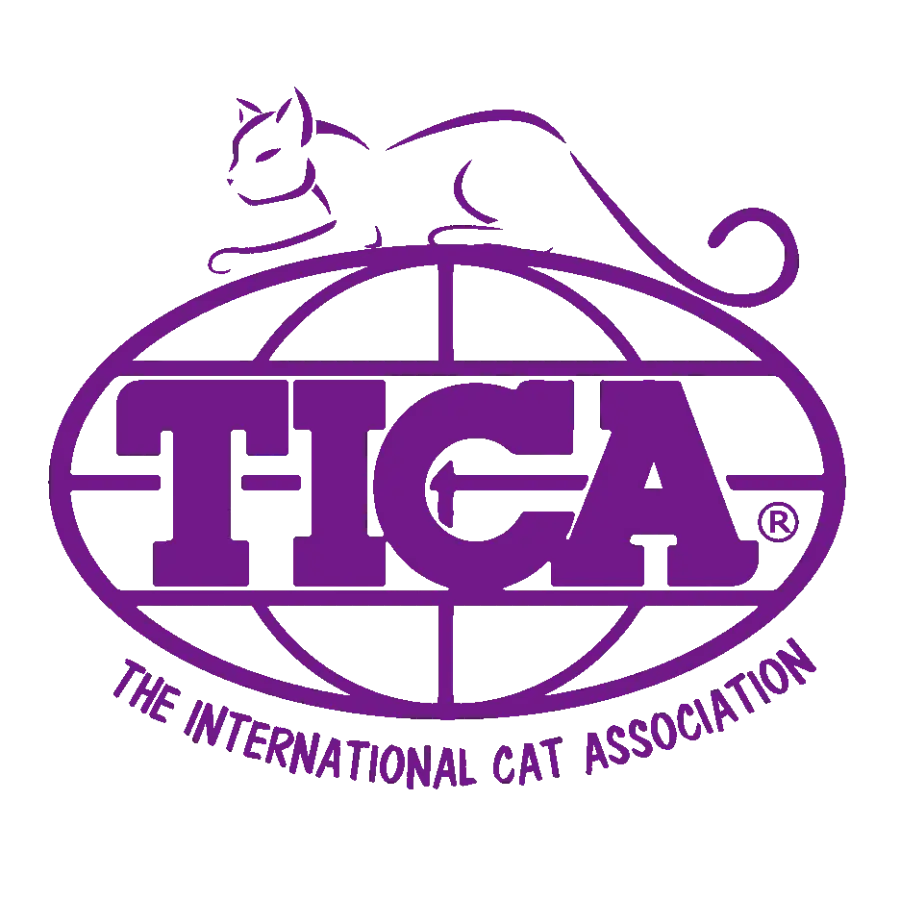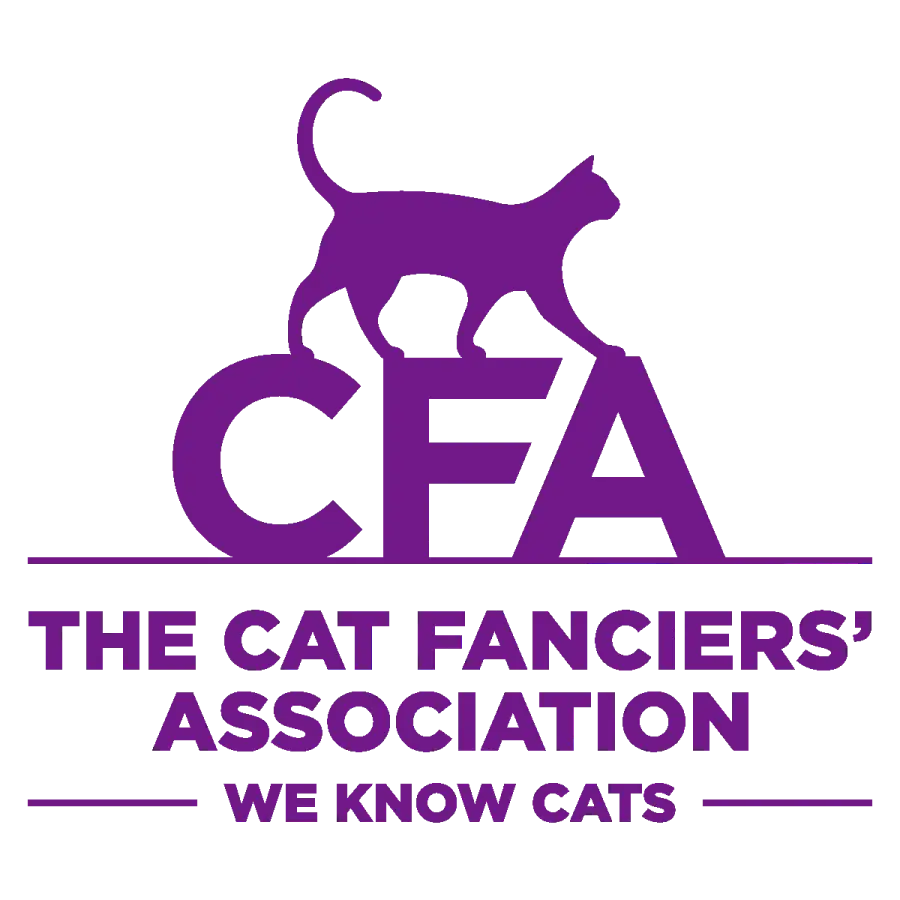Key Takeaways
- Maine Coons are different than any other cat breed in their growth process, taking a longer time than other cat breeds to mature completely. Male Maine Coons typically stop growing between 3-5 years of age with females maturing a little earlier.
- There’s no doubt about it – kittens mature quickly and their growth is astonishing. Though their growth slows in adolescence, it is still constant until they are considered fully mature. These stages serve to reinforce the need for patience as your Maine Coon matures.
- Genetics will have the most impact on your Maine Coon’s size. Proper nutrition – especially when they’re kittens – significantly improves their growth, development and health. Nutritionally complete, protein-rich cuisine is crucial for developing muscles and bones in a healthy and progressive manner.
- Environmental factors play a huge role in a Maine Coons growth and the same applies to spaying or neutering. These procedures can increase the time it takes for growth plates to close and result in somewhat taller cats.
- By taking measurements and weighing your Maine Coon at regular intervals you’ll gain a clearer understanding of their growth and weight trajectory. By utilizing growth charts and tracking developmental milestones, you can make sure your little monster is developing appropriately and reaching a healthy body condition.
- Determining your Maine Coon’s best body condition is critical to overall health. Monitor their weight by checking their ribs and body shape to make sure they are healthy. Look for signs of being overweight to help them flourish at all stages of their growth journey.
When Do Maine Coons Stop Growing?
Maine Coons are known for their huge size, which makes them unmistakable. Their unusual growth pattern is what sets them apart from almost every other cat breed. In contrast to the average domestic cat who is fully grown by one year old, Maine Coons have a much longer maturation period.
Knowing their growth timeline helps you enjoy their maturation! Providing this awareness ensures they get the care they need during this long life stage.
1. Maine Coon Growth Timeline Overview
Healthy Maine Coons grow quickly, reaching their fastest growth during the first 12 months. As they turn one year old, they typically weigh around 80% of their full weight. Their growth doesn’t stop there.
While most cats stop growing around this age, Maine Coons continue to develop and gain size for several more years. As a late-maturing breed, Maine Coons’ growth often slows significantly after nine months.
They won’t be at their full size until they are at least 2, if not 3, years old. Some Maine Coons continue to gain muscle mass and weight well into maturity. More precisely, their growth period isn’t completed until they reach 5 years of age – and in exceptional instances, this may take as lengthy as 7 years!
2. Typical Growth Duration for Males
Male Maine Coons usually get bigger and grow for a longer time than females. For males, they weigh on average 13-18 lbs. Some might even get as large as 25 pounds at full maturity.
It can take up to 3 to 5 years before they are fully grown. During the early years, they pack on the muscle, especially in their shoulders and chest area, developing lots of bulk and muscle.
3. Typical Growth Duration for Females
As the female Maine Coons are still somewhat smaller than males, those sizable girls are sure to impress, even in comparison to other larger breeds. Their weight typically falls between 8-12 pounds, though they can exceed this weight due to genetics and care.
Similar to males, they too undergo their biggest growth spurt in the first year. They do not typically stop growing until they are 2 to 3 years old. Their muscle mass and body structure can keep developing until 5 years of age.
4. Growth Slowdown and Maturation
After the first growth spurt, Maine Coons will enter a phase of rapid growth. Even so, their bodies are still maturing much more slowly. By the time they are 2, their skeletal structure is generally fully developed.
Their muscularity and seriousness of weight will not stop until they’re a couple of years older. This long maturation time is one factor that makes Maine Coons so loved for their hearty and noble physique.
5. Factors Affecting Growth Completion
There are a number of factors that determine how long it will take for a Maine Coon to fully mature. Genetics are a big factor, as kittens born to larger parents tend to be bigger kittens.
Nutrition is also important to growth. Feeding a high-quality diet with the right mix of protein and nutrients helps ensure strong growth. Having an active lifestyle contributes to their building muscle mass efficiently.
Most importantly, note that spaying or neutering won’t have a big impact on when Maine Coons stop growing overall. It can have a small effect on their overall body composition.
Maine Coon Growth Stages Explained
Maine Coons are celebrated for their impressive size, friendly personalities, and slow growth rate, which makes their development unique compared to other cat breeds. Understanding their growth stages – from tiny kittens to fully-grown adults – helps you provide the best care and nutrition at every phase of their journey.
Kitten Stage: Rapid Development
During the kitten stage (from birth to about 10 months), Maine Coons experience fast and noticeable growth. Their demeanor changes quite a bit during this period as well. As young as three weeks old, they’re already beginning to explore the world around them, improving their motor skills and coordination.
At five months, their growth is starting to become more apparent, especially in their overall length and height, just like a young teenager. A Maine Coon baby’s diet is incredibly important during this stage considering their tummies are very tiny. Give them wet food in smaller, more frequent portions.
Start with two to six servings a day to help them get the nutrients they need to fill their bodies’ energy needs. That’s a good place to start measuring their growth and size. For instance, when getting their height measurement, ensure your kitten is standing on all four feet flat to be exact.
Though their full adult size is still years off, Maine Coon kittens make impressive strides in these first few months.
Juvenile Stage: Continued Growth
From 10 months to approximately 1 year old, Maine Coons go through their juvenile stage. Slow, steady growth does continue but at a much slower pace. Their body structure starts to elongate, as their iconic long tails and large tufted paws start to contribute to their impressive frame.
During this stage, their dietary needs change drastically as well. Even though they’re still very active, they might need a little bit less calories as their metabolism shifts. Feed them healthy, measured diets to avoid overfeeding.
This is a breed that can pack the pounds quickly if you’re not mindful of their food intake.
Adolescent Stage: Slowing Down
After a year, Maine Coons reach adolescence, and their growth rate will begin to slow down significantly. At 6 months old, Maine Coons are still just past half of their maximum size. Their bones, muscles and overall structure don’t finish developing until they’re a solid three to five years.
Male Maine Coons are usually around 15 to 25 pounds, and females about 10 to 15 pounds. Routine vet visits help catch early signs of health problems. Hypertrophic cardiomyopathy is just one genetic heart disease that is often prevalent in this breed.
Key Influences on Maine Coon Size
Understanding the factors that influence the size of a Maine Coon is essential for anyone who shares their home with this majestic breed. It’s no wonder Maine Coons are some of the very largest domestic cats! Like all animals, their development can be influenced by genetics, nutrition, hormones and the environment.
Now, let’s analyze these four factors one by one.
Genetic Predisposition Explained
Genetics is one of the most critical factors that will influence how large a Maine Coon cat ultimately gets. The breed is naturally large due to its genetic heritage. Despite the average size of the Maine Coon, not all of them will grow to be that big.
Parentage is a huge factor – kittens from bigger parents tend to be bigger themselves. A male Maine Coon may weigh in excess of 18 pounds if he is from a line of healthy, big males. Conversely, females generally weigh 8 to 12 lbs and tend to be smaller.
As with many breeds, some Maine Coons can carry recessive genes. These recessive genes can produce smaller offspring, even when both parents are large.
Nutritional Needs for Optimal Growth
Proper nutrition is key to ensuring your Maine Coon grows healthily. A diet rich in quality protein and healthy fats supports healthy muscle growth. In doing so, it delivers vital vitamins that ensure developing bones remain strong.
Providing your Maine Coon kitten with a proper, protein-rich diet helps them grow consistently. This period of growth can extend up to four or even five years! Look for foods that list real chicken or fish as the first ingredient, supplemented with omega-3 and omega-6 fatty acids.
If they don’t receive proper nutrition, their growth will be stunted and health at all ages will be negatively affected.
Impact of Early Life Nutrition
The first 3 to 6 months of a Maine Coon’s life set the stage for size and health down the road. During this period, they require precise feeding schedules and kitten-specific food to provide the energy and nutrients their rapidly growing bodies demand.
For instance, kittens who are weaned too soon or who receive poor early nutrition can be stunted in their growth or development. Taking care to ensure clean water access and hydration during this development stage is just as important.
The Role of Hormones in Growth
Hormones play a vital role in determining how Maine Coons will grow. Growth hormones, especially thyroid hormone, control the rate and type of growth. Spaying/neutering affects growth too, as altering an animal can affect the hormonal balance.
Kittens that are spayed or neutered before they reach maturity can be a little bit taller. That’s due to the fact that their growth plates in bones are delayed in closing. Still, this does not detract from their health or body composition in general.
Environmental Impact on Development
A Maine Coon’s environment plays an influential role in their size. Cats who are brought up in a low-stress, stimulating atmosphere that encourages regular exercise generally develop in a way that contributes to strong growth and overall vitality.
Expansive feline-friendly spaces promote energetic habits like climbing and jumping. These activities help your muscles grow, whereas no physical activity can cause your body to lose strength.
Temperature plays a minor role. In colder climates, Maine Coons will develop a thicker, denser undercoat that acts as insulation against extreme weather.

Diet’s Impact on Maine Coon Growth
Diet is crucial to ensuring healthy growth and development in Maine Coons. Their larger size and slower maturation process mean their diet is of even greater concern than other breeds. A quality nutritious diet helps them grow into their genetic potential and keeps them healthy.
Here’s what to consider when trying to accommodate Maine Coon dietary needs across all life stages.
Essential Nutrients for Kittens
A Maine Coon kitten’s diet should be nutritionally dense to help them thrive through the high-growth period of their life. Calcium and phosphorus are vital nutrients that play a key role in healthy bone growth. At the same time, omega fatty acids contribute to healthy skin and coat.
Taurine is one of the most important nutrients for maintaining heart and eye health, especially in developing kittens. Proper vitamin and mineral levels are very important. They protect against deficiencies that can stunt growth or cause developmental problems.
Feeding foods clearly designated for kittens helps provide the essential nutrients only these foods can deliver to help nourish your kitten in those all-important formative stages.
Protein Importance for Muscle Growth
Protein is the building block of all growth in Maine Coons, creating a strong frame. Make sure their diet is rich in animal protein sources, meaning chicken, turkey or fish. These high-quality animal proteins are full of essential amino acids, which are important for building lean muscles and supporting their active lifestyle.
While plant-based proteins can be found in some foods, Maine Coons truly flourish on animal-based proteins. These proteins better satisfy their biological requirements. Besides promoting healthy growth, a high-protein diet helps satisfy energy needs, which is important for frisky kittens and highly active adults.
Wet vs. Dry Food Considerations
Whether you are choosing wet or dry food, moderation is important. Wet food provides additional hydration, which can be beneficial for kittens who are still learning to drink enough water on their own. This may work to minimize the risk of urinary conditions.
All kidding aside, dry food as an occasional meal is convenient and contributes to dental health. In fact, a diet consisting entirely of dry food can be deficient in moisture and contribute to dehydration. Feeding both wet and dry food offers variety and helps your Maine Coon enjoy the nutritional benefits of both types of food.
Adjusting Food Portions for Growth
Since Maine Coons have a slow steady growth pattern over a span of 3-4 years, their diet should provide for this. Maine Coon kittens need smaller, more frequent meals – usually ranging from two to six meals per day – to account for their petite stomachs.
As they age, you can continue to modify portions to include fewer meals with greater amounts to suit their calorie requirements. Making a gradual switch to adult food by the time they are 12 to 15 months old prevents digestive upsets.
Adult Maine Coons require 50-70 calories per pound of body weight per day. Seniors, on the other hand, usually need fewer calories due to their decreased activity level.
High-Quality Food for Steady Growth
Contributing to a nutrition-rich, high-quality feline diet will guarantee your Maine Coon grows consistently and healthily. Look for products that name an actual protein source as the first ingredient. Avoid fillers such as corn or soy, as these provide little to no nutritional value.
Foods rich in animal protein and fat help ensure Maine Coons get the energy they need while promoting their health and vitality. As treats, you can even use your cat’s daily kibble ration. Nevertheless, their overall diet should focus on more nutrient-rich wet or fresh foods in the first place.
How to Measure Your Maine Coon
Learning how to measure your Maine Coon correctly is very important for tracking their growth and keeping them healthy. Maine Coons are notorious for their big size. The more closely you monitor their growth, the better equipped you’ll be to give them the proper care while they’re maturing.
Measuring Length Accurately
To measure your Maine Coon’s length, you’ll need a flexible measuring tape or ruler. Start by measuring from the end of their nose to the start of their tail. Ensure they’re comfortable before you start measuring.
Maine Coons may reach lengths of up to 40 inches. The better you understand their size, the easier it’ll be to know how it compares to the breed’s standards. To maintain consistency, ensure you measure them at the same time of day, as their stance can vary a little bit after they’ve eaten or have had a nap.
Measuring them at least every few months helps you have an accurate snapshot of their growth rate through the years.
Weighing Your Cat Correctly
Weighing your Maine Coon is just as important to make sure they’re at a healthy weight. Males are larger and usually weigh from 15 to 25 pounds, and females slightly smaller at between 10 and 15 pounds.
For best results, weigh your Maine Coon with a digital pet scale. Or, you can weigh yourself while holding your Maine Coon and subtract your weight. If that’s the case for you, using this method will only get you a rough figure but it’s still useful.
A healthy Maine Coon will have a visible, defined rib cage that you can feel with little pressure. This gently means that they are not too fat and not too skinny.
Using Growth Charts Effectively
A growth chart is a great resource for tracking your Maine Coon’s weight and size during their various stages. Maine Coons, unlike other breeds, take a different approach to growth – they don’t stop growing until four or five years old.
Charting their height and weight on a growth chart every few months allows you to spot trends and confirm that they are growing at a healthy pace. Weight imbalances, for instance, unexpected weight loss or gain can be signs of health problems, leading to a visit to the vet.
Tracking Development Milestones
Along with length and weight, you’ll want to watch for overall maturation. Maine Coons grow relatively tall (they can be up to 16” tall) and their gigantic size is primarily due to the influence of genes.
Nutrition is crucial. The key is not just more meals but better food. To encourage your Maine Coon’s healthy growth, feed them high-quality, meat-based cat food. You can’t control their genetic predisposition, but with proper care, you can help them reach their healthiest size.
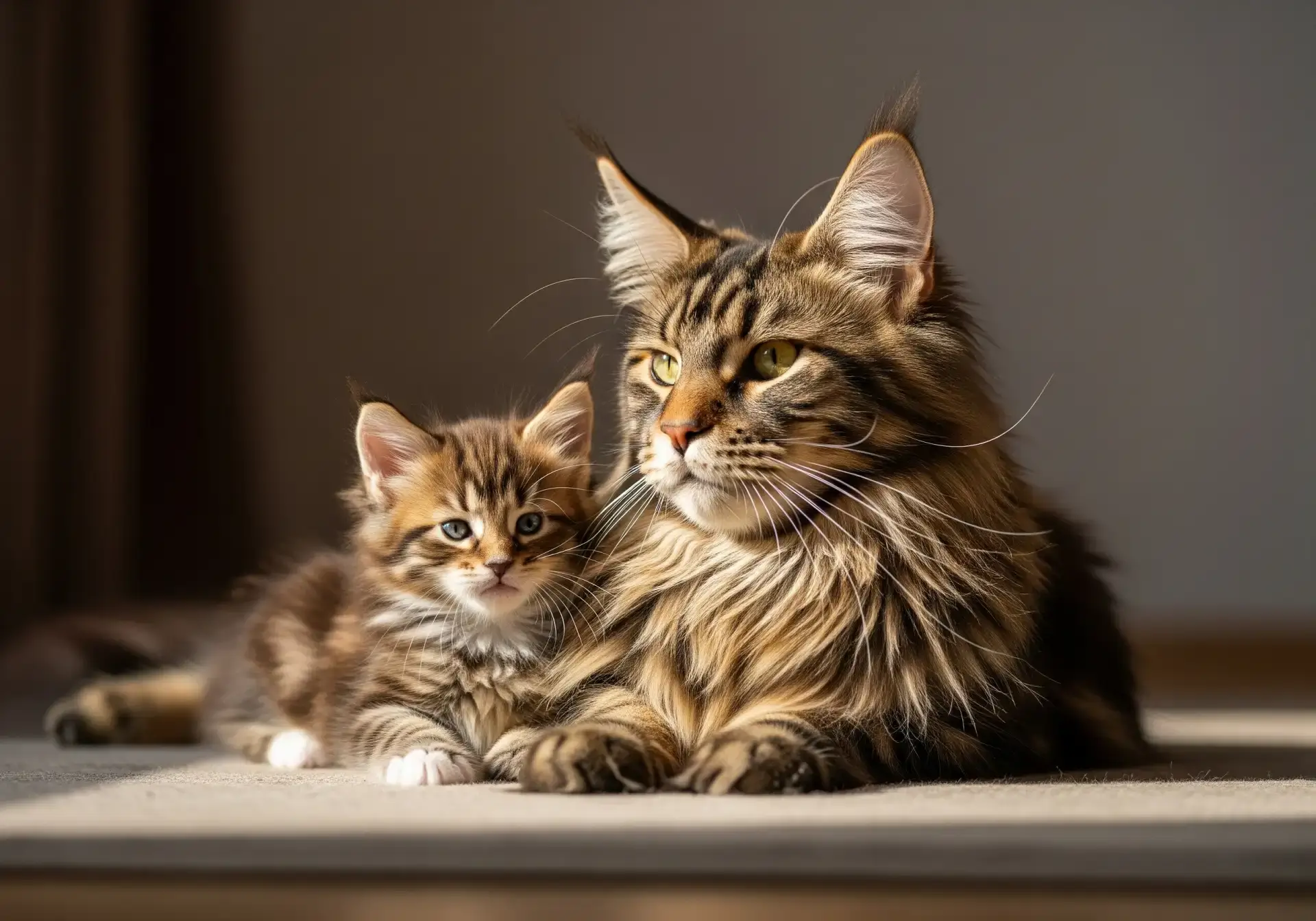
Assess Ideal Body Condition
Understanding your Maine Coon’s growth pattern is essential to ensure they develop at a healthy pace. From their impressive size to their unique growth timeline, monitoring their body condition can help you gauge whether they are growing as they should.
Maine Coons grow steadily during their first year, gaining about 1-2 pounds monthly, and typically reach 40 inches long and up to 16 inches tall when fully grown. By one year, they are around 75% of their adult size, and their growth rate slows as they approach maturity. Evaluating their body condition involves a few simple but effective steps.
Palpate Ribs for Fat Cover
Start by gently pressing down along your Maine Coon’s ribcage. Ideally, you should be able to feel each rib without having to press hard to do so. There still needs to be some amount of fat there, too.
If their ribs are easily felt along with prominent vertebrae, it means they are too skinny and need an increase in food intake. Alternatively, if you can’t feel the ribs at all, your animal likely has too much fat covering them. Keeping an ideal fat cover is really important.
Healthy weight is important for proper bone, muscle and organ growth during the developmental stage of adolescence.
Observe Body Shape from Above
Viewing your Maine Coon from above can be equally as helpful. A healthy Maine Coon will have a defined waist, with their body narrowing slightly behind the ribcage. Lack of a taper could mean that there’s an unhealthy amount of fat build-up.
A waist that’s too small may indicate that an individual is actually underweight. This visual examination should be used in conjunction with other techniques to determine their body condition.
Check for Abdominal Tuck
Look at their belly from the side. One of the easiest ways to tell if your Maine Coon is healthy is to look for a gentle upward slope from the chest to the back legs.
This abdominal arrangement is an indication of well-developed musculature and proper body fat distribution. A droopy belly, on the other hand, is an indicator of weight problems that can affect your pet’s development.
Recognize Signs of Being Overweight
Too much body condition can make it impossible for them to achieve their full potential growth. Overweight Maine Coons might have less energy, groom themselves less, or seem hesitant to jump.
Making sure their diet provides enough high-quality animal proteins is key, because those nutrients help them avoid excess weight gain and help them grow properly. Frequent vet examinations can help identify any weight issues early, too.
Spaying/Neutering and Growth
Owners of Maine Coons have a strong predisposition toward spaying and neutering cats. Spaying and neutering are the most effective ways to prevent cat overpopulation and prevent maligning the feline’s quality of life. These surgeries can have a huge effect on the growth and development of Maine Coons.
They adversely impact their growth plates, height potential, and weight regulation. Knowing these effects can allow you to plan the most effective care for your growing cat and make good decisions about when to spay or neuter them.
Impact on Growth Plates
Growth plates, located at the ends of long bones, play a vital role in a Maine Coon’s skeletal development. These plates remain open during a cat’s early life, allowing the bones to grow. Spaying or neutering affects these growth plates by reducing the production of sex hormones like estrogen and testosterone, which are essential for signaling when the plates should close.
If a Maine Coon is altered too early, around 5-6 months, the growth plates may remain open longer, potentially leading to extended bone growth. While this might seem like a positive outcome, it can sometimes result in weaker joints, making the cat more prone to injuries.
Veterinarians often advise spaying or neutering Maine Coons around the age of 5 to 6 months. Secondly, this protects against unintended litters, as most of these cats become sexually mature between 6 and 9 months. Other breeders, like Tracy Caywood, publicly support waiting on the procedure.
They argue that it prevents disrupting the natural hormone balance, which is important for protecting the cat’s health and development.
Potential for Increased Height
So it’s no surprise that Maine Coons are known for their massive builds. Spaying or neutering them at an early age can help them grow just a little bit taller by delaying the closure of the growth plates. This increase in stature is discreet and inconsistent, likely a result of differences between cats.
A lanky Maine Coon may be visually appealing, but this is only one aspect that needs to be taken into consideration. Consider the unnecessary joint strain and health risks associated with early changes.
Managing Weight After Surgery
Weight management becomes extremely important post-spay/neuter, as these procedures usually slow a cat’s metabolism. If due dietary changes aren’t made, Maine Coons are prone to becoming overweight, which can seriously affect their health.
Providing access to portion-controlled meals along with a high-quality, no- or low-glycemic diet rich in lean protein will support weight management after surgery.

Maine Coons Compared to Other Breeds
Maine Coons are particularly valued for their extraordinary size and slow growth as the most distinctive characteristics that distinguishes this breed from all others. Their physical characteristics and development timeline reveal an enchanting mix of heredity and habitat.
This distinctive blend of traits helps make them the perfect breed for those cat aficionados that appreciate their splendor and magnetism.
Size Differences with Other Cats
So far as size is concerned, Maine Coons are one of the biggest domesticated cat breeds. Compared to other breeds, Maine Coons are one of the largest domestic cats.
When compared to Ragdolls, Norwegian Forest cats, and Siberians, they outsize their counterparts. Adult males typically weigh at least 15 pounds, sometimes up to 19, with females weighing 8 to 12 pounds.
They measure anywhere from 10 to 16 inches tall on average. If you add in their elegant tail, they can measure up to 40 inches long in total length. To give you some perspective on this, the average dimensions of most other large breed cats come nowhere close to these measurements.
Ragdolls are another big breed that usually weigh 10 to 20 lbs. Yet, they will never be able to attain the length or height that Maine Coons can grow to.
Purebred Maine Coons come in a larger size than mixed ones. Their large size is due largely to genetic factors. This is what makes purebred Maine Coons so special – they’re more consistently large Maine Coons of their large stature.
Growth Rate vs. Other Large Breeds
Maine Coons grow differently than most cats. Maine Coons develop at a slower rate compared to average breeds.
They generally continue to grow until they are full sized at four to five years of age. Rather than simply producing size, their growth includes a continual development of muscle.
After their first, very long, year, they slowly develop muscle, packing on weight and strength in subsequent years. Ragdolls and Norwegian Forest cats are slow growers. They usually cease growing at about three years old, which puts into perspective the Maine Coon’s prolonged growth cycle.
Unique Skeletal Structure
One of the most interesting aspects of their size and growth is their skeleton. Maine Coons are known for having a very solid bone structure, which adds to their muscular and hefty build.
This anatomical structure provides the framework for their development, allowing them to grow tremendously large and muscular. Their diet and active lifestyle contributes a lot to their strength and agility.
